Quick filters:
Related to elephants Stock Photos and Images
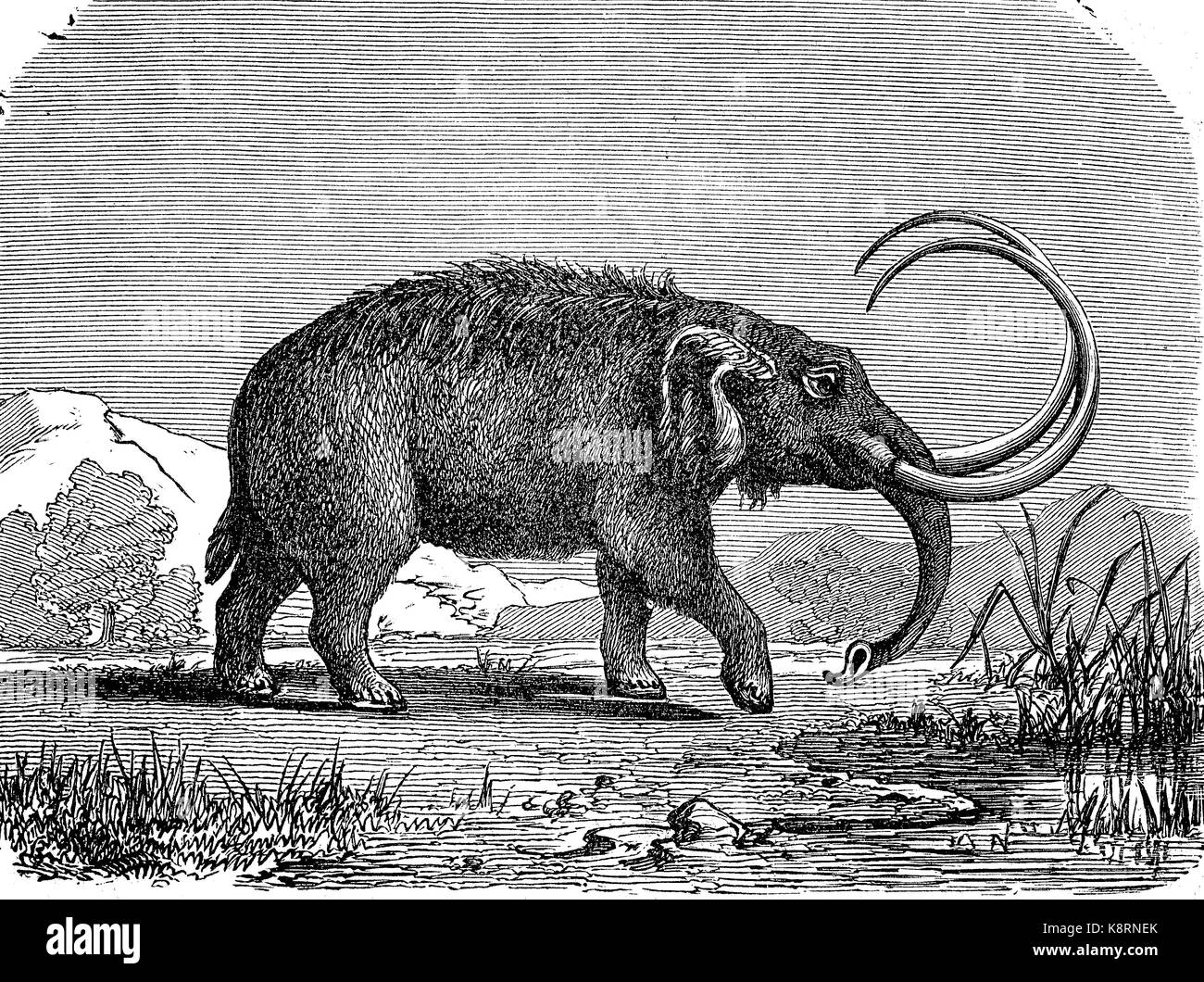 Mastodons are any species of extinct mammutid proboscideans in the genus Mammut, distantly related to elephants, digital improved reproduction of a woodcut, published in the 19th century Stock Photohttps://www.alamy.com/image-license-details/?v=1https://www.alamy.com/stock-image-mastodons-are-any-species-of-extinct-mammutid-proboscideans-in-the-160332331.html
Mastodons are any species of extinct mammutid proboscideans in the genus Mammut, distantly related to elephants, digital improved reproduction of a woodcut, published in the 19th century Stock Photohttps://www.alamy.com/image-license-details/?v=1https://www.alamy.com/stock-image-mastodons-are-any-species-of-extinct-mammutid-proboscideans-in-the-160332331.htmlRFK8RNEK–Mastodons are any species of extinct mammutid proboscideans in the genus Mammut, distantly related to elephants, digital improved reproduction of a woodcut, published in the 19th century
 Mastodon spec., Print, Mastodons are any species of extinct proboscideans in the genus Mammut (family Mammutidae), distantly related to elephants, that inhabited North and Central America during the late Miocene or late Pliocene up to their extinction at the end of the Pleistocene 10, 000 to 11, 000 years ago. Mastodons lived in herds and were predominantly forest-dwelling animals that fed on a mixed diet obtained by browsing and grazing with a seasonal preference for browsing, similar to living elephants., skeleton Stock Photohttps://www.alamy.com/image-license-details/?v=1https://www.alamy.com/mastodon-spec-print-mastodons-are-any-species-of-extinct-proboscideans-in-the-genus-mammut-family-mammutidae-distantly-related-to-elephants-that-inhabited-north-and-central-america-during-the-late-miocene-or-late-pliocene-up-to-their-extinction-at-the-end-of-the-pleistocene-10-000-to-11-000-years-ago-mastodons-lived-in-herds-and-were-predominantly-forest-dwelling-animals-that-fed-on-a-mixed-diet-obtained-by-browsing-and-grazing-with-a-seasonal-preference-for-browsing-similar-to-living-elephants-skeleton-image328690996.html
Mastodon spec., Print, Mastodons are any species of extinct proboscideans in the genus Mammut (family Mammutidae), distantly related to elephants, that inhabited North and Central America during the late Miocene or late Pliocene up to their extinction at the end of the Pleistocene 10, 000 to 11, 000 years ago. Mastodons lived in herds and were predominantly forest-dwelling animals that fed on a mixed diet obtained by browsing and grazing with a seasonal preference for browsing, similar to living elephants., skeleton Stock Photohttps://www.alamy.com/image-license-details/?v=1https://www.alamy.com/mastodon-spec-print-mastodons-are-any-species-of-extinct-proboscideans-in-the-genus-mammut-family-mammutidae-distantly-related-to-elephants-that-inhabited-north-and-central-america-during-the-late-miocene-or-late-pliocene-up-to-their-extinction-at-the-end-of-the-pleistocene-10-000-to-11-000-years-ago-mastodons-lived-in-herds-and-were-predominantly-forest-dwelling-animals-that-fed-on-a-mixed-diet-obtained-by-browsing-and-grazing-with-a-seasonal-preference-for-browsing-similar-to-living-elephants-skeleton-image328690996.htmlRM2A2N4M4–Mastodon spec., Print, Mastodons are any species of extinct proboscideans in the genus Mammut (family Mammutidae), distantly related to elephants, that inhabited North and Central America during the late Miocene or late Pliocene up to their extinction at the end of the Pleistocene 10, 000 to 11, 000 years ago. Mastodons lived in herds and were predominantly forest-dwelling animals that fed on a mixed diet obtained by browsing and grazing with a seasonal preference for browsing, similar to living elephants., skeleton
 Mastodons are any species of extinct mammutid proboscideans in the genus Mammut, distantly related to elephants / Mastodonten sind eine beliebige Art von ausgestorbenen Säugetierrüsseltieren der Gattung Mammut, die entfernt mit Elefanten verwandt sind, historisch, C:CC5historical, digital improved reproduction of an original from the 19th century / digitale Reproduktion einer Originalvorlage aus dem 19. Jahrhundert, Originaldatum nicht bekannt Stock Photohttps://www.alamy.com/image-license-details/?v=1https://www.alamy.com/mastodons-are-any-species-of-extinct-mammutid-proboscideans-in-the-genus-mammut-distantly-related-to-elephants-mastodonten-sind-eine-beliebige-art-von-ausgestorbenen-sugetierrsseltieren-der-gattung-mammut-die-entfernt-mit-elefanten-verwandt-sind-historisch-ccc5historical-digital-improved-reproduction-of-an-original-from-the-19th-century-digitale-reproduktion-einer-originalvorlage-aus-dem-19-jahrhundert-originaldatum-nicht-bekannt-image464874824.html
Mastodons are any species of extinct mammutid proboscideans in the genus Mammut, distantly related to elephants / Mastodonten sind eine beliebige Art von ausgestorbenen Säugetierrüsseltieren der Gattung Mammut, die entfernt mit Elefanten verwandt sind, historisch, C:CC5historical, digital improved reproduction of an original from the 19th century / digitale Reproduktion einer Originalvorlage aus dem 19. Jahrhundert, Originaldatum nicht bekannt Stock Photohttps://www.alamy.com/image-license-details/?v=1https://www.alamy.com/mastodons-are-any-species-of-extinct-mammutid-proboscideans-in-the-genus-mammut-distantly-related-to-elephants-mastodonten-sind-eine-beliebige-art-von-ausgestorbenen-sugetierrsseltieren-der-gattung-mammut-die-entfernt-mit-elefanten-verwandt-sind-historisch-ccc5historical-digital-improved-reproduction-of-an-original-from-the-19th-century-digitale-reproduktion-einer-originalvorlage-aus-dem-19-jahrhundert-originaldatum-nicht-bekannt-image464874824.htmlRF2J08TG8–Mastodons are any species of extinct mammutid proboscideans in the genus Mammut, distantly related to elephants / Mastodonten sind eine beliebige Art von ausgestorbenen Säugetierrüsseltieren der Gattung Mammut, die entfernt mit Elefanten verwandt sind, historisch, C:CC5historical, digital improved reproduction of an original from the 19th century / digitale Reproduktion einer Originalvorlage aus dem 19. Jahrhundert, Originaldatum nicht bekannt
 pre-historic cavemen hunt a Mastodon. 1940s Illustration. Mastodons are any species of extinct proboscideans in the genus Mammut, distantly related to elephants, that inhabited North and Central America, 10,000 to 11,000 years ago Stock Photohttps://www.alamy.com/image-license-details/?v=1https://www.alamy.com/stock-photo-pre-historic-cavemen-hunt-a-mastodon-1940s-illustration-mastodons-90835364.html
pre-historic cavemen hunt a Mastodon. 1940s Illustration. Mastodons are any species of extinct proboscideans in the genus Mammut, distantly related to elephants, that inhabited North and Central America, 10,000 to 11,000 years ago Stock Photohttps://www.alamy.com/image-license-details/?v=1https://www.alamy.com/stock-photo-pre-historic-cavemen-hunt-a-mastodon-1940s-illustration-mastodons-90835364.htmlRMF7NWC4–pre-historic cavemen hunt a Mastodon. 1940s Illustration. Mastodons are any species of extinct proboscideans in the genus Mammut, distantly related to elephants, that inhabited North and Central America, 10,000 to 11,000 years ago
 Moeritherium was a semi-aquatic eocene era prehistoric mammal. A type of proboscidean, it was related to elephants and sea cows. 3D Rendering Stock Photohttps://www.alamy.com/image-license-details/?v=1https://www.alamy.com/moeritherium-was-a-semi-aquatic-eocene-era-prehistoric-mammal-a-type-of-proboscidean-it-was-related-to-elephants-and-sea-cows-3d-rendering-image592383798.html
Moeritherium was a semi-aquatic eocene era prehistoric mammal. A type of proboscidean, it was related to elephants and sea cows. 3D Rendering Stock Photohttps://www.alamy.com/image-license-details/?v=1https://www.alamy.com/moeritherium-was-a-semi-aquatic-eocene-era-prehistoric-mammal-a-type-of-proboscidean-it-was-related-to-elephants-and-sea-cows-3d-rendering-image592383798.htmlRF2WBNBG6–Moeritherium was a semi-aquatic eocene era prehistoric mammal. A type of proboscidean, it was related to elephants and sea cows. 3D Rendering
 An engraving depicting the restored skeleton of a Mastodon. Mastodons are any species of extinct proboscideans in the genus Mammut, distantly related to elephants, that inhabited North and Central America during the late Miocene or late Pliocene period. Dated 19th century Stock Photohttps://www.alamy.com/image-license-details/?v=1https://www.alamy.com/an-engraving-depicting-the-restored-skeleton-of-a-mastodon-mastodons-are-any-species-of-extinct-proboscideans-in-the-genus-mammut-distantly-related-to-elephants-that-inhabited-north-and-central-america-during-the-late-miocene-or-late-pliocene-period-dated-19th-century-image328366964.html
An engraving depicting the restored skeleton of a Mastodon. Mastodons are any species of extinct proboscideans in the genus Mammut, distantly related to elephants, that inhabited North and Central America during the late Miocene or late Pliocene period. Dated 19th century Stock Photohttps://www.alamy.com/image-license-details/?v=1https://www.alamy.com/an-engraving-depicting-the-restored-skeleton-of-a-mastodon-mastodons-are-any-species-of-extinct-proboscideans-in-the-genus-mammut-distantly-related-to-elephants-that-inhabited-north-and-central-america-during-the-late-miocene-or-late-pliocene-period-dated-19th-century-image328366964.htmlRM2A26BBG–An engraving depicting the restored skeleton of a Mastodon. Mastodons are any species of extinct proboscideans in the genus Mammut, distantly related to elephants, that inhabited North and Central America during the late Miocene or late Pliocene period. Dated 19th century
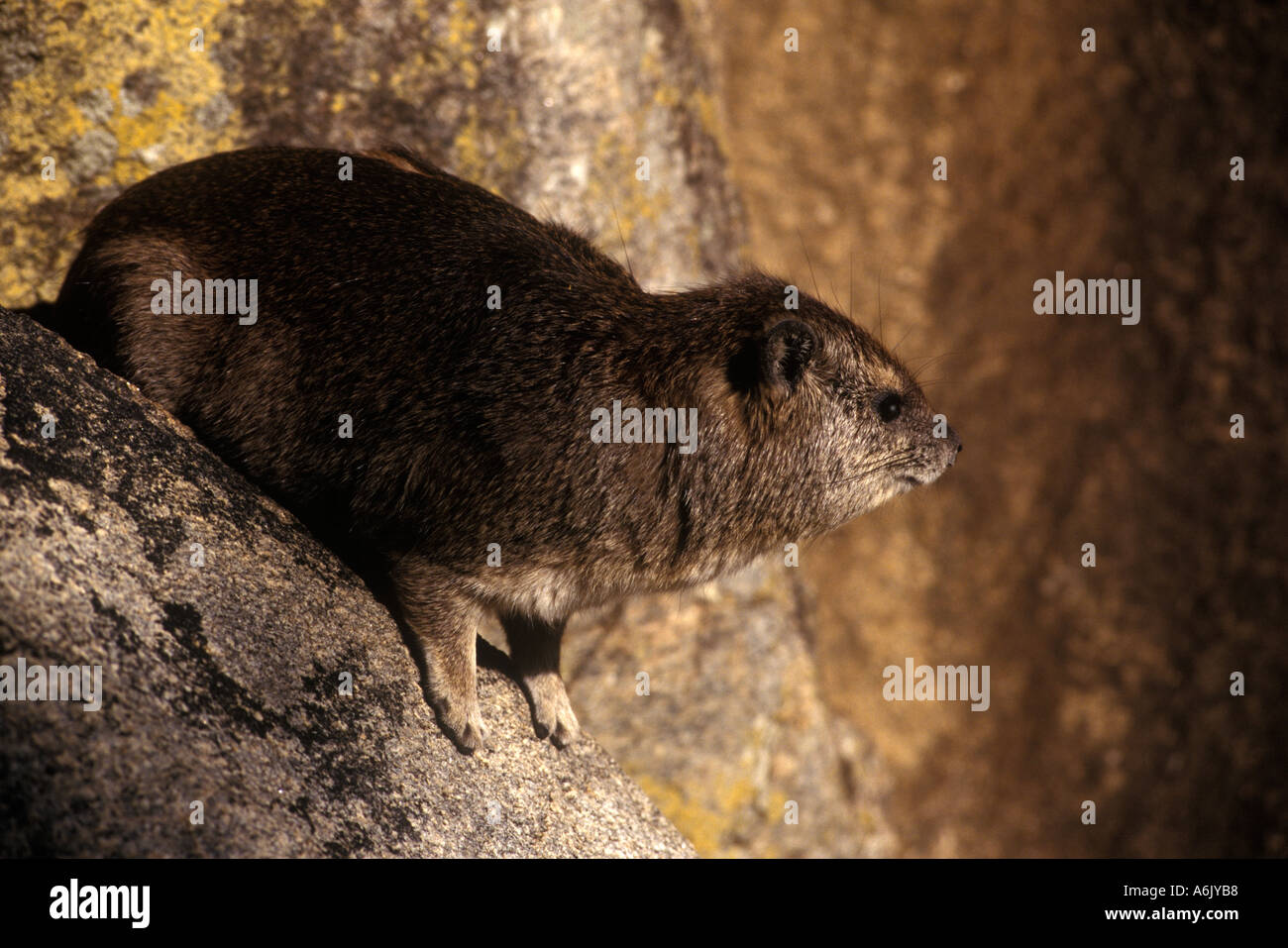 A ROCK HYRAX or DASSIE Procavia Capensis is a small ungulate which is related to elephants SERENGETI NATIONAL PARK TANZANIA Stock Photohttps://www.alamy.com/image-license-details/?v=1https://www.alamy.com/a-rock-hyrax-or-dassie-procavia-capensis-is-a-small-ungulate-which-image3785655.html
A ROCK HYRAX or DASSIE Procavia Capensis is a small ungulate which is related to elephants SERENGETI NATIONAL PARK TANZANIA Stock Photohttps://www.alamy.com/image-license-details/?v=1https://www.alamy.com/a-rock-hyrax-or-dassie-procavia-capensis-is-a-small-ungulate-which-image3785655.htmlRMA6JYB8–A ROCK HYRAX or DASSIE Procavia Capensis is a small ungulate which is related to elephants SERENGETI NATIONAL PARK TANZANIA
 Dassie, hyrax, are related to elephants and manatees Stock Photohttps://www.alamy.com/image-license-details/?v=1https://www.alamy.com/dassie-hyrax-are-related-to-elephants-and-manatees-image229205637.html
Dassie, hyrax, are related to elephants and manatees Stock Photohttps://www.alamy.com/image-license-details/?v=1https://www.alamy.com/dassie-hyrax-are-related-to-elephants-and-manatees-image229205637.htmlRFR8W63H–Dassie, hyrax, are related to elephants and manatees
 African Forest elephants (Loxodonta africana cyclotis) individuals interact with others gathered at Dzanga clearing, which attracts elephants from all over the region and the coloured variation in soil and mud bath deposits on an elephant's skin can signal that an elephant is from another sector of the park and not necessarily related to other elephants visiting the clearing at the same time. Dzanga-Ndoki National Park, Central African Republic Stock Photohttps://www.alamy.com/image-license-details/?v=1https://www.alamy.com/african-forest-elephants-loxodonta-africana-cyclotis-individuals-interact-with-others-gathered-at-dzanga-clearing-which-attracts-elephants-from-all-over-the-region-and-the-coloured-variation-in-soil-and-mud-bath-deposits-on-an-elephants-skin-can-signal-that-an-elephant-is-from-another-sector-of-the-park-and-not-necessarily-related-to-other-elephants-visiting-the-clearing-at-the-same-time-dzanga-ndoki-national-park-central-african-republic-image262938853.html
African Forest elephants (Loxodonta africana cyclotis) individuals interact with others gathered at Dzanga clearing, which attracts elephants from all over the region and the coloured variation in soil and mud bath deposits on an elephant's skin can signal that an elephant is from another sector of the park and not necessarily related to other elephants visiting the clearing at the same time. Dzanga-Ndoki National Park, Central African Republic Stock Photohttps://www.alamy.com/image-license-details/?v=1https://www.alamy.com/african-forest-elephants-loxodonta-africana-cyclotis-individuals-interact-with-others-gathered-at-dzanga-clearing-which-attracts-elephants-from-all-over-the-region-and-the-coloured-variation-in-soil-and-mud-bath-deposits-on-an-elephants-skin-can-signal-that-an-elephant-is-from-another-sector-of-the-park-and-not-necessarily-related-to-other-elephants-visiting-the-clearing-at-the-same-time-dzanga-ndoki-national-park-central-african-republic-image262938853.htmlRMW7NW59–African Forest elephants (Loxodonta africana cyclotis) individuals interact with others gathered at Dzanga clearing, which attracts elephants from all over the region and the coloured variation in soil and mud bath deposits on an elephant's skin can signal that an elephant is from another sector of the park and not necessarily related to other elephants visiting the clearing at the same time. Dzanga-Ndoki National Park, Central African Republic
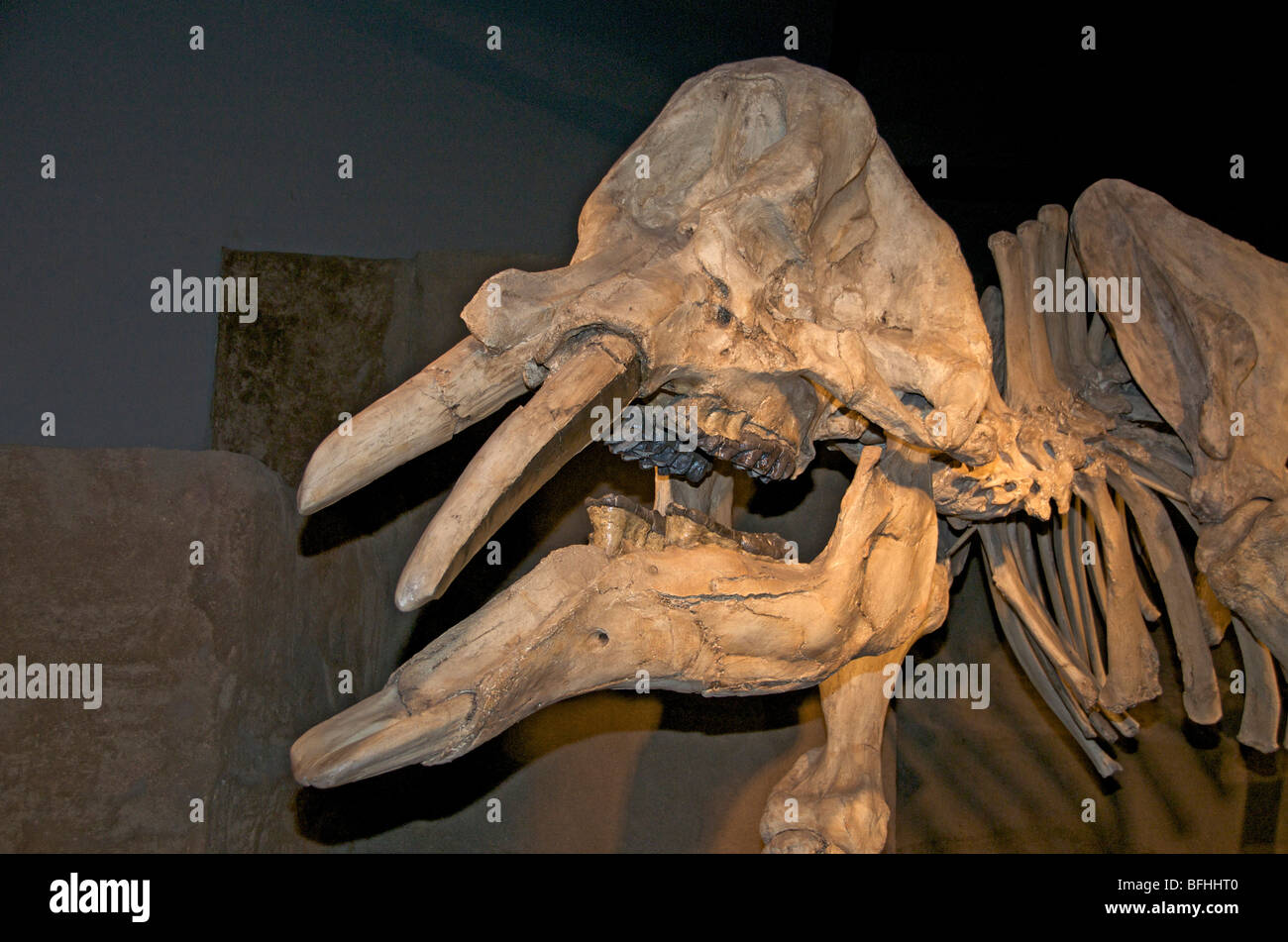 Gomphotherium, closely related to mastodons disappeared before the end of the Pleistocene. Royal Tyrrell Museum, Alta, Canada Stock Photohttps://www.alamy.com/image-license-details/?v=1https://www.alamy.com/stock-photo-gomphotherium-closely-related-to-mastodons-disappeared-before-the-26817392.html
Gomphotherium, closely related to mastodons disappeared before the end of the Pleistocene. Royal Tyrrell Museum, Alta, Canada Stock Photohttps://www.alamy.com/image-license-details/?v=1https://www.alamy.com/stock-photo-gomphotherium-closely-related-to-mastodons-disappeared-before-the-26817392.htmlRFBFHHT0–Gomphotherium, closely related to mastodons disappeared before the end of the Pleistocene. Royal Tyrrell Museum, Alta, Canada
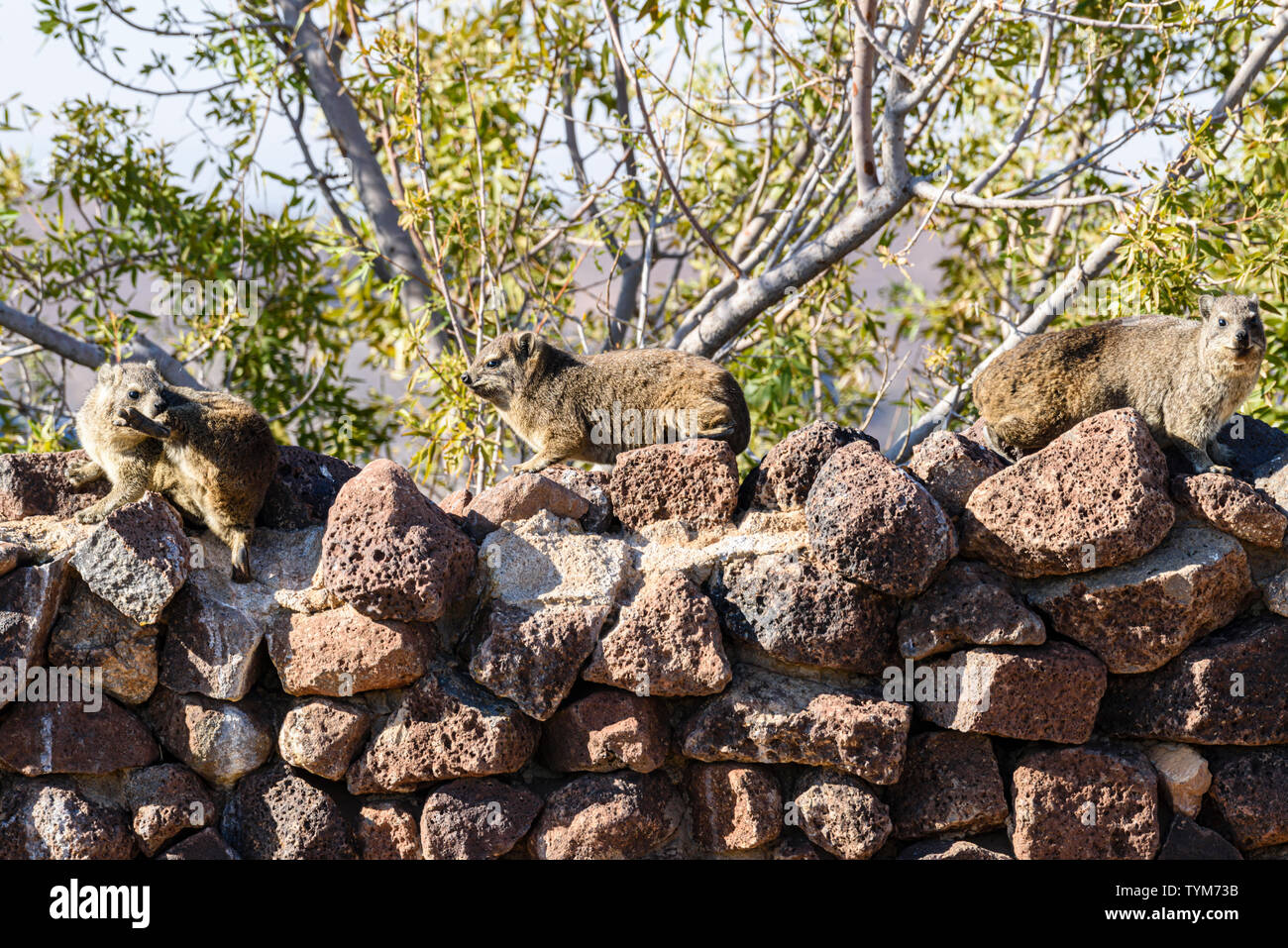 Rock hyrax, a small rodent closely related to elephants and manatees. Namibia Stock Photohttps://www.alamy.com/image-license-details/?v=1https://www.alamy.com/rock-hyrax-a-small-rodent-closely-related-to-elephants-and-manatees-namibia-image257985487.html
Rock hyrax, a small rodent closely related to elephants and manatees. Namibia Stock Photohttps://www.alamy.com/image-license-details/?v=1https://www.alamy.com/rock-hyrax-a-small-rodent-closely-related-to-elephants-and-manatees-namibia-image257985487.htmlRFTYM73B–Rock hyrax, a small rodent closely related to elephants and manatees. Namibia
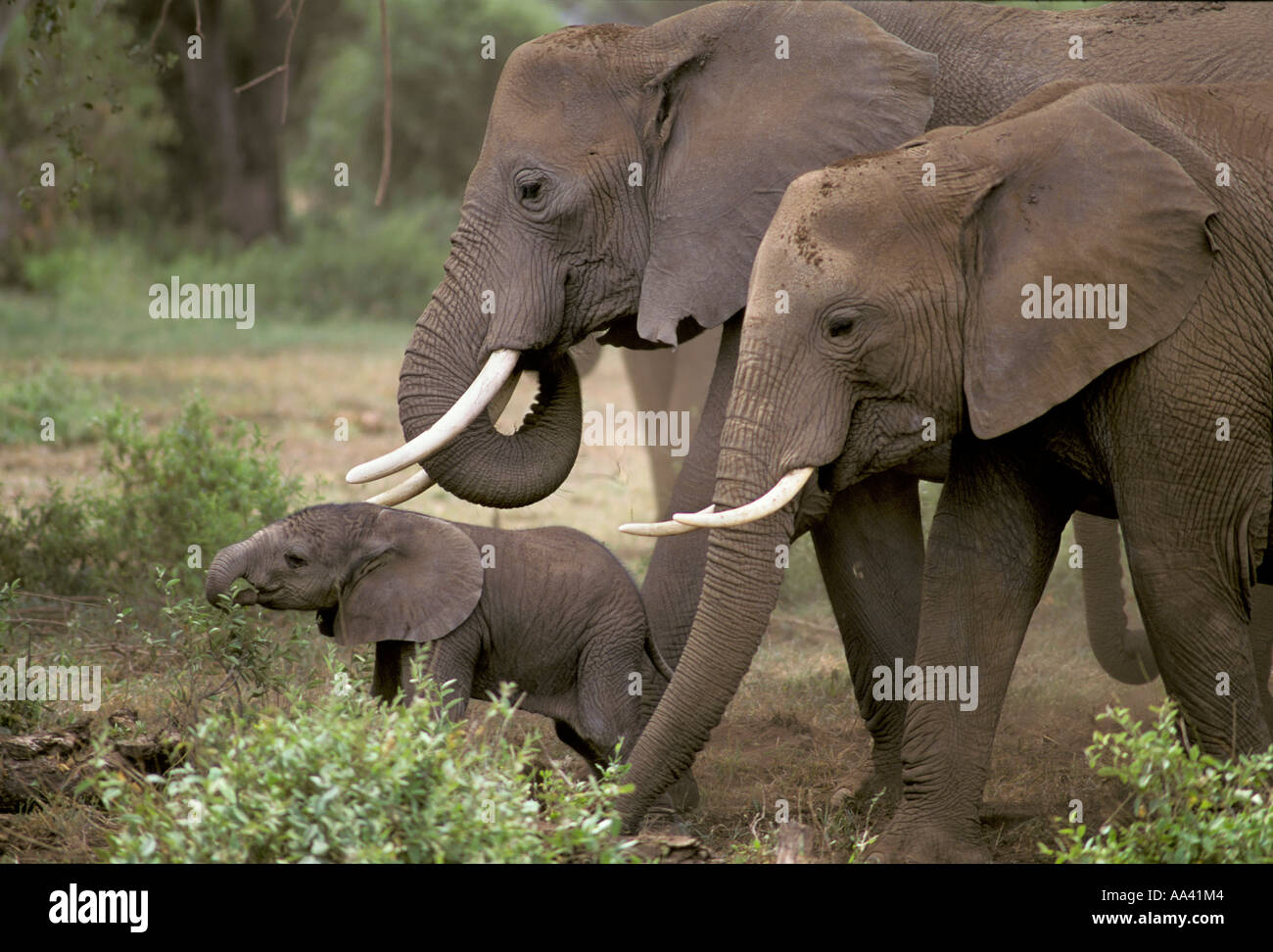 Elephants with calf ( Loxodonta africana ), Amboseli National Park, Kenya, Africa Stock Photohttps://www.alamy.com/image-license-details/?v=1https://www.alamy.com/elephants-with-calf-loxodonta-africana-amboseli-national-park-kenya-image7146755.html
Elephants with calf ( Loxodonta africana ), Amboseli National Park, Kenya, Africa Stock Photohttps://www.alamy.com/image-license-details/?v=1https://www.alamy.com/elephants-with-calf-loxodonta-africana-amboseli-national-park-kenya-image7146755.htmlRMAA41M4–Elephants with calf ( Loxodonta africana ), Amboseli National Park, Kenya, Africa
 African Elephants (Loxodonta africana). Calf or baby, trying to locate its own mother amongst several other cows browse feeding. Okavango Delta. Botsw Stock Photohttps://www.alamy.com/image-license-details/?v=1https://www.alamy.com/african-elephants-loxodonta-africana-calf-or-baby-trying-to-locate-its-own-mother-amongst-several-other-cows-browse-feeding-okavango-delta-botsw-image177834553.html
African Elephants (Loxodonta africana). Calf or baby, trying to locate its own mother amongst several other cows browse feeding. Okavango Delta. Botsw Stock Photohttps://www.alamy.com/image-license-details/?v=1https://www.alamy.com/african-elephants-loxodonta-africana-calf-or-baby-trying-to-locate-its-own-mother-amongst-several-other-cows-browse-feeding-okavango-delta-botsw-image177834553.htmlRMM991P1–African Elephants (Loxodonta africana). Calf or baby, trying to locate its own mother amongst several other cows browse feeding. Okavango Delta. Botsw
 Elephants ( Loxodonta africana ) family with baby, Amboseli National Park, Kenya Stock Photohttps://www.alamy.com/image-license-details/?v=1https://www.alamy.com/elephants-loxodonta-africana-family-with-baby-amboseli-national-park-image7521204.html
Elephants ( Loxodonta africana ) family with baby, Amboseli National Park, Kenya Stock Photohttps://www.alamy.com/image-license-details/?v=1https://www.alamy.com/elephants-loxodonta-africana-family-with-baby-amboseli-national-park-image7521204.htmlRMACHKR5–Elephants ( Loxodonta africana ) family with baby, Amboseli National Park, Kenya
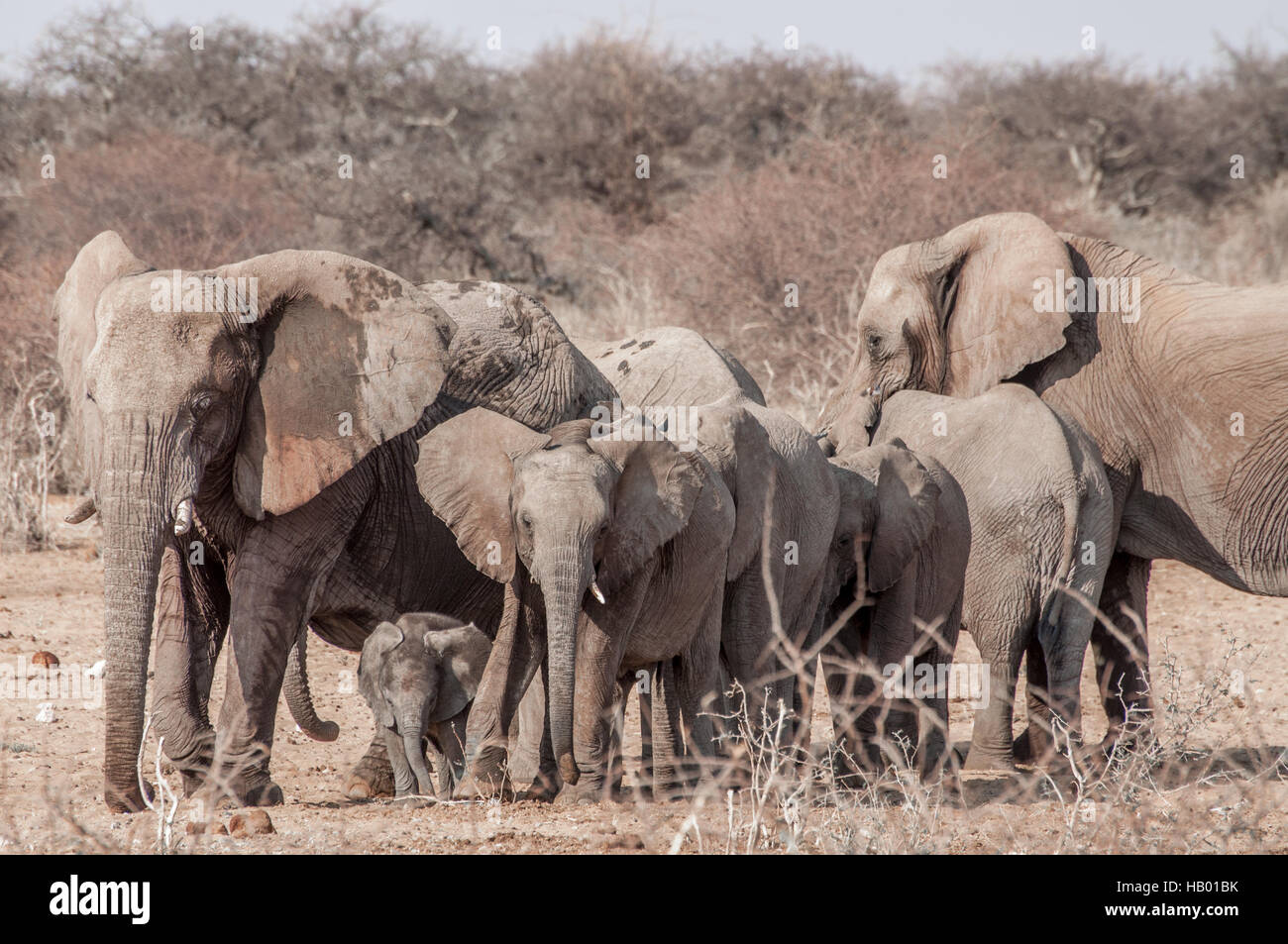 Female Elephants with Baby Stock Photohttps://www.alamy.com/image-license-details/?v=1https://www.alamy.com/stock-photo-female-elephants-with-baby-127234903.html
Female Elephants with Baby Stock Photohttps://www.alamy.com/image-license-details/?v=1https://www.alamy.com/stock-photo-female-elephants-with-baby-127234903.htmlRMHB01BK–Female Elephants with Baby
 Elephants on the bed Stock Photohttps://www.alamy.com/image-license-details/?v=1https://www.alamy.com/stock-photo-elephants-on-the-bed-76367195.html
Elephants on the bed Stock Photohttps://www.alamy.com/image-license-details/?v=1https://www.alamy.com/stock-photo-elephants-on-the-bed-76367195.htmlRMEC6R3R–Elephants on the bed
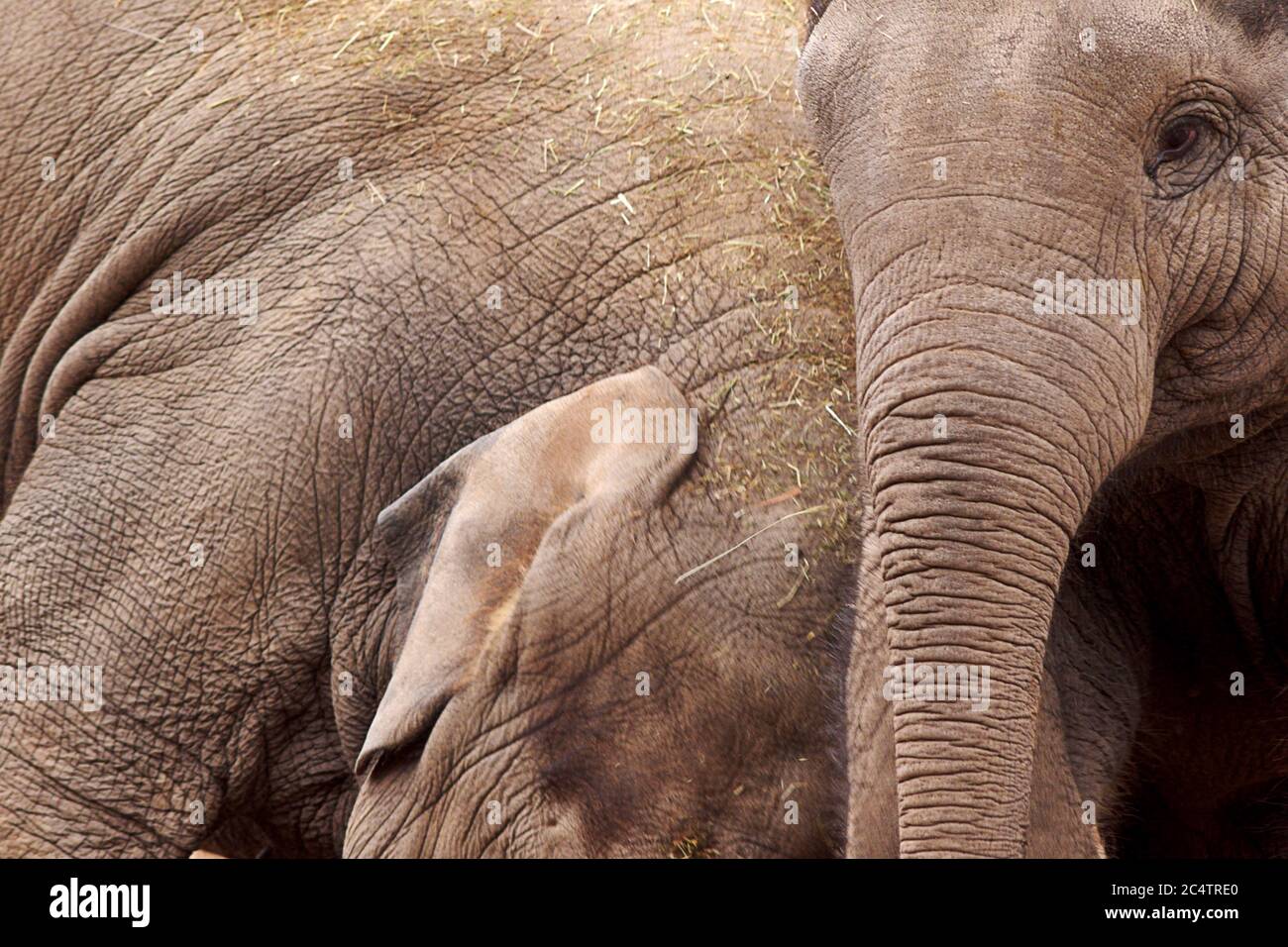 A pair of Indian (Asian) elephants at Chester Zoo at play. Chester has one of the world's great zoos and these elephants are one of the main exhibits. Stock Photohttps://www.alamy.com/image-license-details/?v=1https://www.alamy.com/a-pair-of-indian-asian-elephants-at-chester-zoo-at-play-chester-has-one-of-the-worlds-great-zoos-and-these-elephants-are-one-of-the-main-exhibits-image364421624.html
A pair of Indian (Asian) elephants at Chester Zoo at play. Chester has one of the world's great zoos and these elephants are one of the main exhibits. Stock Photohttps://www.alamy.com/image-license-details/?v=1https://www.alamy.com/a-pair-of-indian-asian-elephants-at-chester-zoo-at-play-chester-has-one-of-the-worlds-great-zoos-and-these-elephants-are-one-of-the-main-exhibits-image364421624.htmlRF2C4TRE0–A pair of Indian (Asian) elephants at Chester Zoo at play. Chester has one of the world's great zoos and these elephants are one of the main exhibits.
 Mastodon spec., Print, Mastodons are any species of extinct proboscideans in the genus Mammut (family Mammutidae), distantly related to elephants, that inhabited North and Central America during the late Miocene or late Pliocene up to their extinction at the end of the Pleistocene 10, 000 to 11, 000 years ago. Mastodons lived in herds and were predominantly forest-dwelling animals that fed on a mixed diet obtained by browsing and grazing with a seasonal preference for browsing, similar to living elephants., bones, Reimagined by Gibon, design of warm cheerful glowing of brightness and light ray Stock Photohttps://www.alamy.com/image-license-details/?v=1https://www.alamy.com/mastodon-spec-print-mastodons-are-any-species-of-extinct-proboscideans-in-the-genus-mammut-family-mammutidae-distantly-related-to-elephants-that-inhabited-north-and-central-america-during-the-late-miocene-or-late-pliocene-up-to-their-extinction-at-the-end-of-the-pleistocene-10-000-to-11-000-years-ago-mastodons-lived-in-herds-and-were-predominantly-forest-dwelling-animals-that-fed-on-a-mixed-diet-obtained-by-browsing-and-grazing-with-a-seasonal-preference-for-browsing-similar-to-living-elephants-bones-reimagined-by-gibon-design-of-warm-cheerful-glowing-of-brightness-and-light-ray-image349766377.html
Mastodon spec., Print, Mastodons are any species of extinct proboscideans in the genus Mammut (family Mammutidae), distantly related to elephants, that inhabited North and Central America during the late Miocene or late Pliocene up to their extinction at the end of the Pleistocene 10, 000 to 11, 000 years ago. Mastodons lived in herds and were predominantly forest-dwelling animals that fed on a mixed diet obtained by browsing and grazing with a seasonal preference for browsing, similar to living elephants., bones, Reimagined by Gibon, design of warm cheerful glowing of brightness and light ray Stock Photohttps://www.alamy.com/image-license-details/?v=1https://www.alamy.com/mastodon-spec-print-mastodons-are-any-species-of-extinct-proboscideans-in-the-genus-mammut-family-mammutidae-distantly-related-to-elephants-that-inhabited-north-and-central-america-during-the-late-miocene-or-late-pliocene-up-to-their-extinction-at-the-end-of-the-pleistocene-10-000-to-11-000-years-ago-mastodons-lived-in-herds-and-were-predominantly-forest-dwelling-animals-that-fed-on-a-mixed-diet-obtained-by-browsing-and-grazing-with-a-seasonal-preference-for-browsing-similar-to-living-elephants-bones-reimagined-by-gibon-design-of-warm-cheerful-glowing-of-brightness-and-light-ray-image349766377.htmlRF2B916G9–Mastodon spec., Print, Mastodons are any species of extinct proboscideans in the genus Mammut (family Mammutidae), distantly related to elephants, that inhabited North and Central America during the late Miocene or late Pliocene up to their extinction at the end of the Pleistocene 10, 000 to 11, 000 years ago. Mastodons lived in herds and were predominantly forest-dwelling animals that fed on a mixed diet obtained by browsing and grazing with a seasonal preference for browsing, similar to living elephants., bones, Reimagined by Gibon, design of warm cheerful glowing of brightness and light ray
 Chonburi. 1st Mar, 2017. Mahouts interact with Asian elephants at a zoo in central Thailand's Chonburi Province, March 1, 2017. In Thailand, elephant-related entertainments serve as an important source of tourism revenue. Although elephant domestication has existed for centuries, controversies over abuses during elephant training and performance still occur from time to time. Credit: Li Mangmang/Xinhua/Alamy Live News Stock Photohttps://www.alamy.com/image-license-details/?v=1https://www.alamy.com/stock-photo-chonburi-1st-mar-2017-mahouts-interact-with-asian-elephants-at-a-zoo-134971041.html
Chonburi. 1st Mar, 2017. Mahouts interact with Asian elephants at a zoo in central Thailand's Chonburi Province, March 1, 2017. In Thailand, elephant-related entertainments serve as an important source of tourism revenue. Although elephant domestication has existed for centuries, controversies over abuses during elephant training and performance still occur from time to time. Credit: Li Mangmang/Xinhua/Alamy Live News Stock Photohttps://www.alamy.com/image-license-details/?v=1https://www.alamy.com/stock-photo-chonburi-1st-mar-2017-mahouts-interact-with-asian-elephants-at-a-zoo-134971041.htmlRMHRGCX9–Chonburi. 1st Mar, 2017. Mahouts interact with Asian elephants at a zoo in central Thailand's Chonburi Province, March 1, 2017. In Thailand, elephant-related entertainments serve as an important source of tourism revenue. Although elephant domestication has existed for centuries, controversies over abuses during elephant training and performance still occur from time to time. Credit: Li Mangmang/Xinhua/Alamy Live News
 A family of female elephants walk with a baby of the group incircled by all. Stock Photohttps://www.alamy.com/image-license-details/?v=1https://www.alamy.com/stock-photo-a-family-of-female-elephants-walk-with-a-baby-of-the-group-incircled-79071939.html
A family of female elephants walk with a baby of the group incircled by all. Stock Photohttps://www.alamy.com/image-license-details/?v=1https://www.alamy.com/stock-photo-a-family-of-female-elephants-walk-with-a-baby-of-the-group-incircled-79071939.htmlRFEGJ11R–A family of female elephants walk with a baby of the group incircled by all.
 Mastodon spec., Print, Mastodons are any species of extinct proboscideans in the genus Mammut (family Mammutidae), distantly related to elephants, that inhabited North and Central America during the late Miocene or late Pliocene up to their extinction at the end of the Pleistocene 10, 000 to 11, 000 years ago. Mastodons lived in herds and were predominantly forest-dwelling animals that fed on a mixed diet obtained by browsing and grazing with a seasonal preference for browsing, similar to living elephants., molars Stock Photohttps://www.alamy.com/image-license-details/?v=1https://www.alamy.com/mastodon-spec-print-mastodons-are-any-species-of-extinct-proboscideans-in-the-genus-mammut-family-mammutidae-distantly-related-to-elephants-that-inhabited-north-and-central-america-during-the-late-miocene-or-late-pliocene-up-to-their-extinction-at-the-end-of-the-pleistocene-10-000-to-11-000-years-ago-mastodons-lived-in-herds-and-were-predominantly-forest-dwelling-animals-that-fed-on-a-mixed-diet-obtained-by-browsing-and-grazing-with-a-seasonal-preference-for-browsing-similar-to-living-elephants-molars-image328690992.html
Mastodon spec., Print, Mastodons are any species of extinct proboscideans in the genus Mammut (family Mammutidae), distantly related to elephants, that inhabited North and Central America during the late Miocene or late Pliocene up to their extinction at the end of the Pleistocene 10, 000 to 11, 000 years ago. Mastodons lived in herds and were predominantly forest-dwelling animals that fed on a mixed diet obtained by browsing and grazing with a seasonal preference for browsing, similar to living elephants., molars Stock Photohttps://www.alamy.com/image-license-details/?v=1https://www.alamy.com/mastodon-spec-print-mastodons-are-any-species-of-extinct-proboscideans-in-the-genus-mammut-family-mammutidae-distantly-related-to-elephants-that-inhabited-north-and-central-america-during-the-late-miocene-or-late-pliocene-up-to-their-extinction-at-the-end-of-the-pleistocene-10-000-to-11-000-years-ago-mastodons-lived-in-herds-and-were-predominantly-forest-dwelling-animals-that-fed-on-a-mixed-diet-obtained-by-browsing-and-grazing-with-a-seasonal-preference-for-browsing-similar-to-living-elephants-molars-image328690992.htmlRM2A2N4M0–Mastodon spec., Print, Mastodons are any species of extinct proboscideans in the genus Mammut (family Mammutidae), distantly related to elephants, that inhabited North and Central America during the late Miocene or late Pliocene up to their extinction at the end of the Pleistocene 10, 000 to 11, 000 years ago. Mastodons lived in herds and were predominantly forest-dwelling animals that fed on a mixed diet obtained by browsing and grazing with a seasonal preference for browsing, similar to living elephants., molars
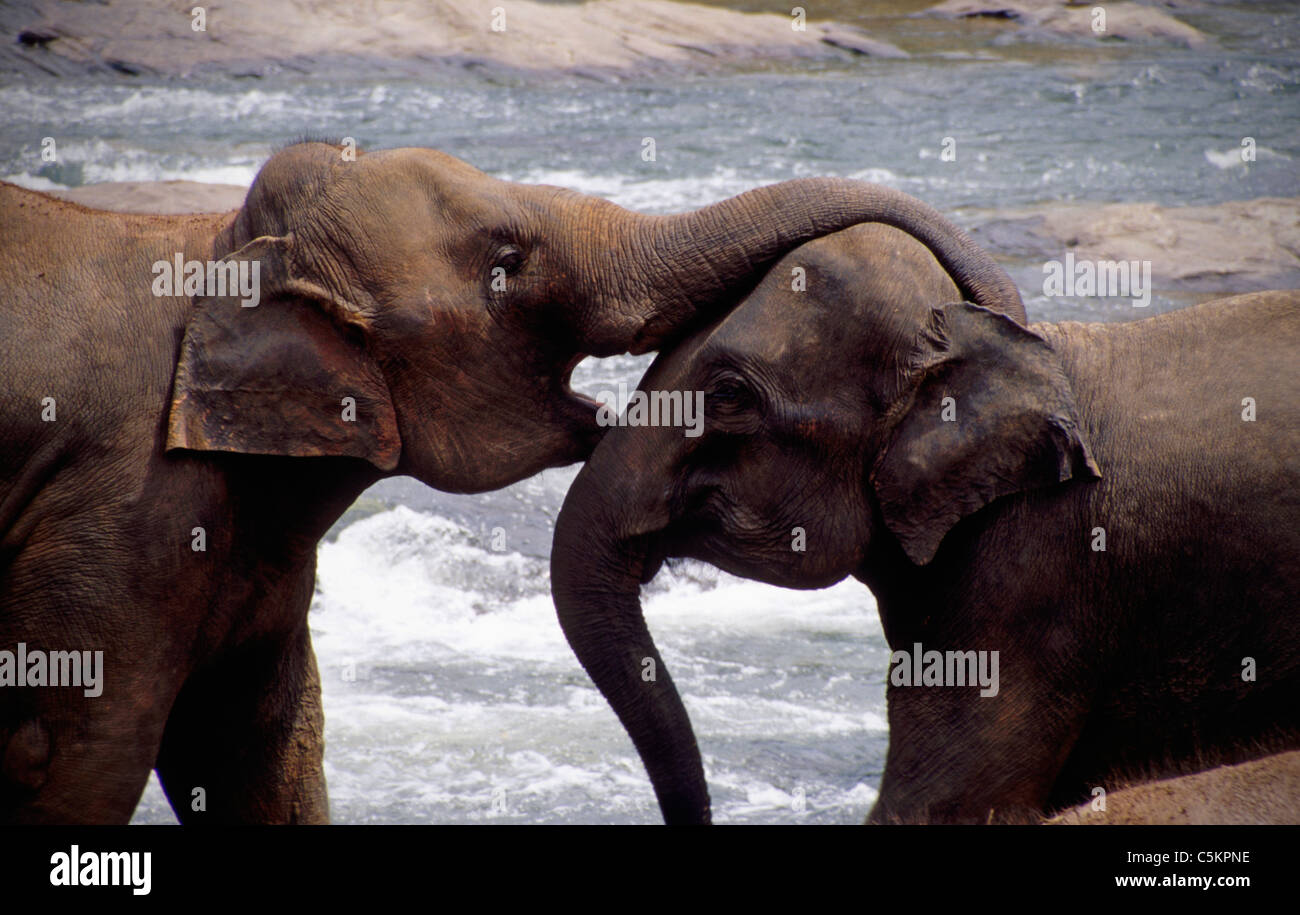 Two Sri Lankan elephants embracing, one with its trunk over the other’s head, Pinnewela Elephant Orphanage, Sri Lanka. Stock Photohttps://www.alamy.com/image-license-details/?v=1https://www.alamy.com/stock-photo-two-sri-lankan-elephants-embracing-one-with-its-trunk-over-the-others-37928954.html
Two Sri Lankan elephants embracing, one with its trunk over the other’s head, Pinnewela Elephant Orphanage, Sri Lanka. Stock Photohttps://www.alamy.com/image-license-details/?v=1https://www.alamy.com/stock-photo-two-sri-lankan-elephants-embracing-one-with-its-trunk-over-the-others-37928954.htmlRMC5KPNE–Two Sri Lankan elephants embracing, one with its trunk over the other’s head, Pinnewela Elephant Orphanage, Sri Lanka.
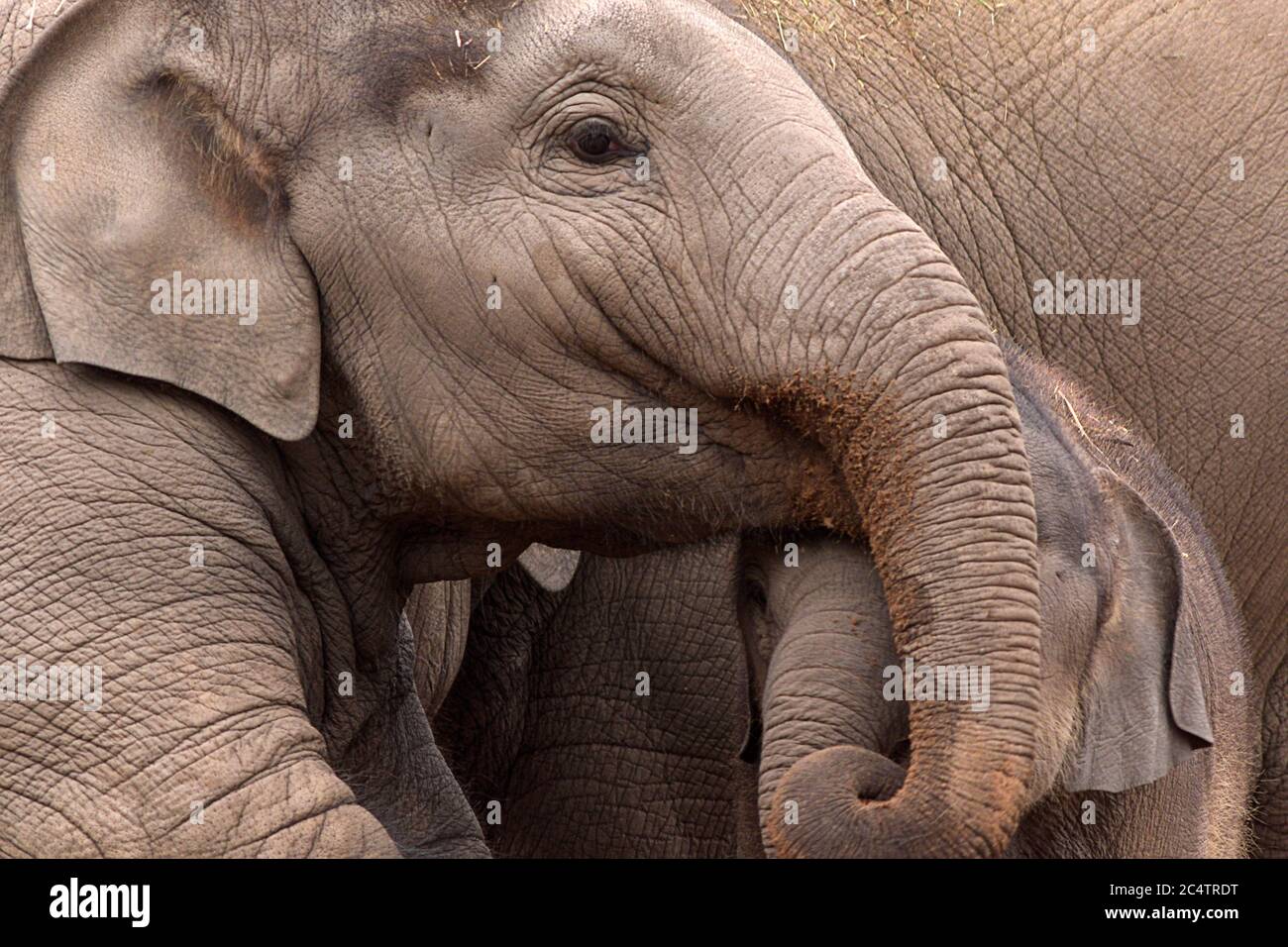 Indian (Asian) elephants at Chester Zoo at play. Chester has one of the world's great zoos. These Asian elephants have a good life! Stock Photohttps://www.alamy.com/image-license-details/?v=1https://www.alamy.com/indian-asian-elephants-at-chester-zoo-at-play-chester-has-one-of-the-worlds-great-zoos-these-asian-elephants-have-a-good-life!-image364421620.html
Indian (Asian) elephants at Chester Zoo at play. Chester has one of the world's great zoos. These Asian elephants have a good life! Stock Photohttps://www.alamy.com/image-license-details/?v=1https://www.alamy.com/indian-asian-elephants-at-chester-zoo-at-play-chester-has-one-of-the-worlds-great-zoos-these-asian-elephants-have-a-good-life!-image364421620.htmlRF2C4TRDT–Indian (Asian) elephants at Chester Zoo at play. Chester has one of the world's great zoos. These Asian elephants have a good life!
 A Bush Hyrax clambers in the high branches of an albezia tree to browse on the tough leaves. Distantly related to elephants Stock Photohttps://www.alamy.com/image-license-details/?v=1https://www.alamy.com/a-bush-hyrax-clambers-in-the-high-branches-of-an-albezia-tree-to-browse-on-the-tough-leaves-distantly-related-to-elephants-image479931251.html
A Bush Hyrax clambers in the high branches of an albezia tree to browse on the tough leaves. Distantly related to elephants Stock Photohttps://www.alamy.com/image-license-details/?v=1https://www.alamy.com/a-bush-hyrax-clambers-in-the-high-branches-of-an-albezia-tree-to-browse-on-the-tough-leaves-distantly-related-to-elephants-image479931251.htmlRM2JTPN5R–A Bush Hyrax clambers in the high branches of an albezia tree to browse on the tough leaves. Distantly related to elephants
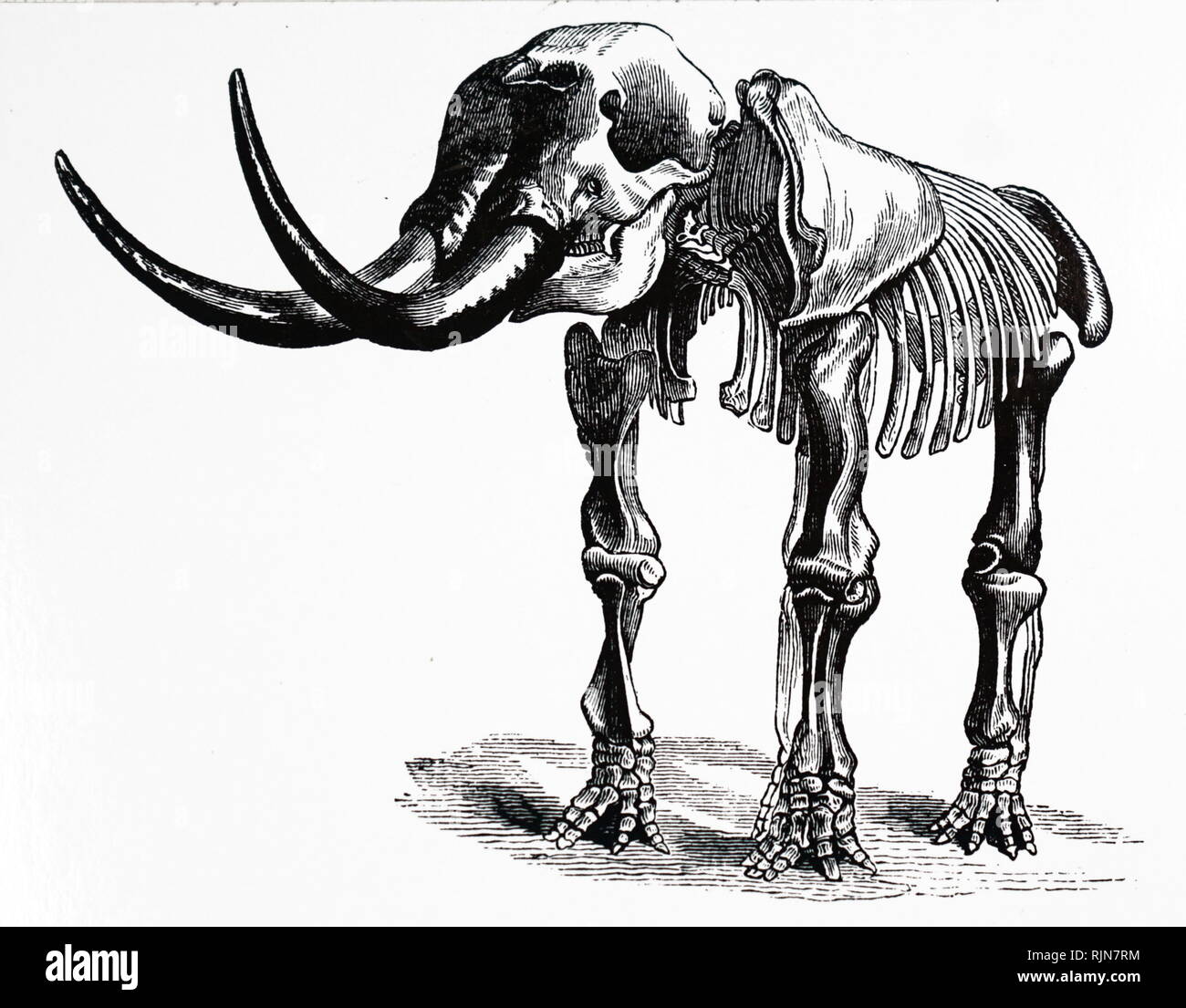 An engraving depicting the restored skeleton of a Mastodon. Mastodons are any species of extinct proboscideans in the genus Mammut, distantly related to elephants, that inhabited North and Central America during the late Miocene or late Pliocene period. Dated 19th century Stock Photohttps://www.alamy.com/image-license-details/?v=1https://www.alamy.com/an-engraving-depicting-the-restored-skeleton-of-a-mastodon-mastodons-are-any-species-of-extinct-proboscideans-in-the-genus-mammut-distantly-related-to-elephants-that-inhabited-north-and-central-america-during-the-late-miocene-or-late-pliocene-period-dated-19th-century-image235265736.html
An engraving depicting the restored skeleton of a Mastodon. Mastodons are any species of extinct proboscideans in the genus Mammut, distantly related to elephants, that inhabited North and Central America during the late Miocene or late Pliocene period. Dated 19th century Stock Photohttps://www.alamy.com/image-license-details/?v=1https://www.alamy.com/an-engraving-depicting-the-restored-skeleton-of-a-mastodon-mastodons-are-any-species-of-extinct-proboscideans-in-the-genus-mammut-distantly-related-to-elephants-that-inhabited-north-and-central-america-during-the-late-miocene-or-late-pliocene-period-dated-19th-century-image235265736.htmlRMRJN7RM–An engraving depicting the restored skeleton of a Mastodon. Mastodons are any species of extinct proboscideans in the genus Mammut, distantly related to elephants, that inhabited North and Central America during the late Miocene or late Pliocene period. Dated 19th century
 Younger and older female (cow) Asian Elephants at Chester Zoo (in the NW of England) playfully interact. The straw is feeding debris. Stock Photohttps://www.alamy.com/image-license-details/?v=1https://www.alamy.com/younger-and-older-female-cow-asian-elephants-at-chester-zoo-in-the-nw-of-england-playfully-interact-the-straw-is-feeding-debris-image364421554.html
Younger and older female (cow) Asian Elephants at Chester Zoo (in the NW of England) playfully interact. The straw is feeding debris. Stock Photohttps://www.alamy.com/image-license-details/?v=1https://www.alamy.com/younger-and-older-female-cow-asian-elephants-at-chester-zoo-in-the-nw-of-england-playfully-interact-the-straw-is-feeding-debris-image364421554.htmlRF2C4TRBE–Younger and older female (cow) Asian Elephants at Chester Zoo (in the NW of England) playfully interact. The straw is feeding debris.
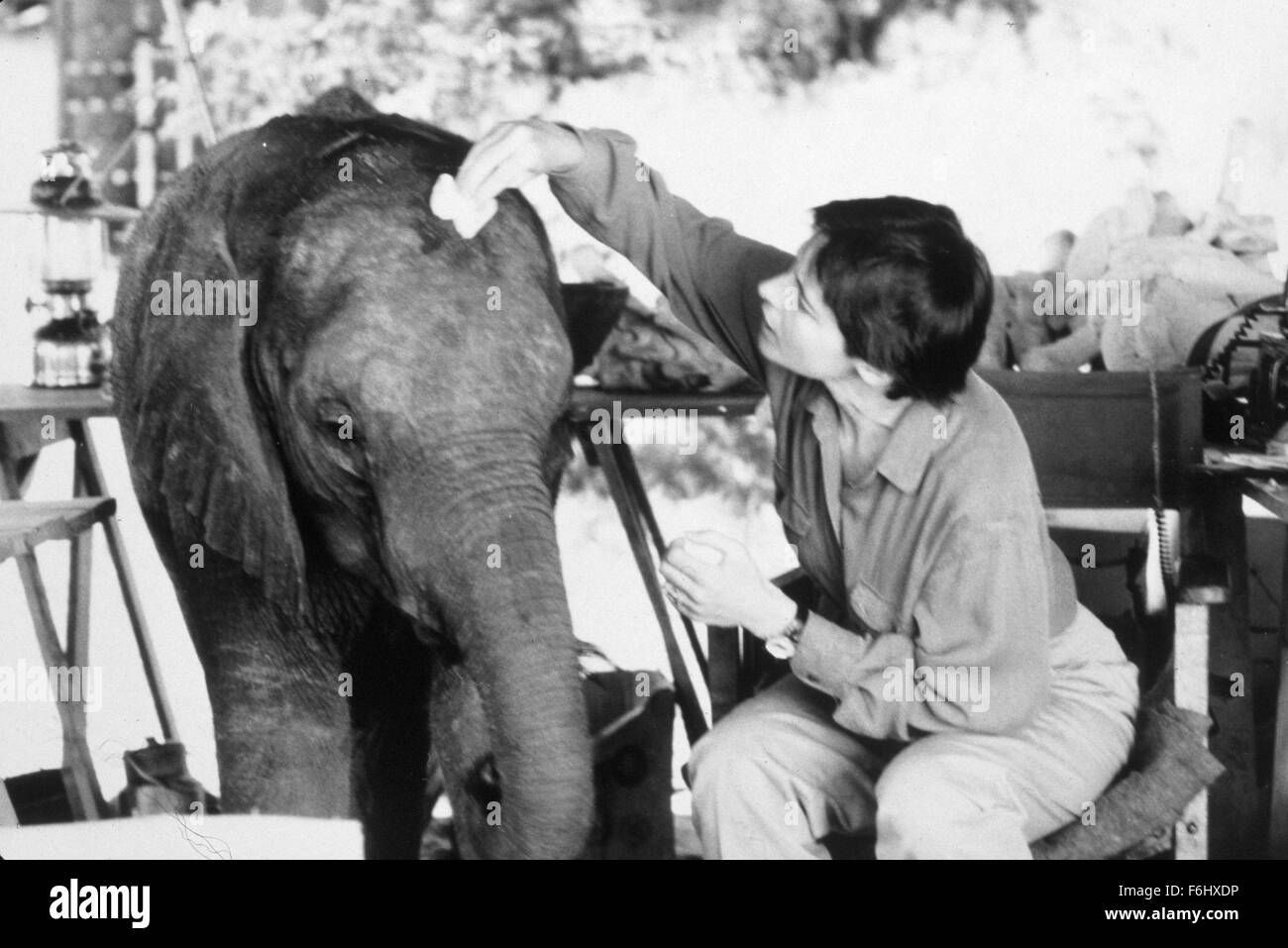 RELEASE DATE: August 20, 1990 MOVIE TITLE: Ivory Hunters aka Last Elephants STUDIO: Turner Pictures DIRECTOR: Joseph Sargent PLOT: An author discovers that his missing research assistant's disappearance may be related to illegal trade in ivory tusks. PICTURED: Elepahnt. (Credit Image: c Turner Pictures/Entertainment Pictures) Stock Photohttps://www.alamy.com/image-license-details/?v=1https://www.alamy.com/stock-photo-release-date-august-20-1990-movie-title-ivory-hunters-aka-last-elephants-90133730.html
RELEASE DATE: August 20, 1990 MOVIE TITLE: Ivory Hunters aka Last Elephants STUDIO: Turner Pictures DIRECTOR: Joseph Sargent PLOT: An author discovers that his missing research assistant's disappearance may be related to illegal trade in ivory tusks. PICTURED: Elepahnt. (Credit Image: c Turner Pictures/Entertainment Pictures) Stock Photohttps://www.alamy.com/image-license-details/?v=1https://www.alamy.com/stock-photo-release-date-august-20-1990-movie-title-ivory-hunters-aka-last-elephants-90133730.htmlRMF6HXDP–RELEASE DATE: August 20, 1990 MOVIE TITLE: Ivory Hunters aka Last Elephants STUDIO: Turner Pictures DIRECTOR: Joseph Sargent PLOT: An author discovers that his missing research assistant's disappearance may be related to illegal trade in ivory tusks. PICTURED: Elepahnt. (Credit Image: c Turner Pictures/Entertainment Pictures)
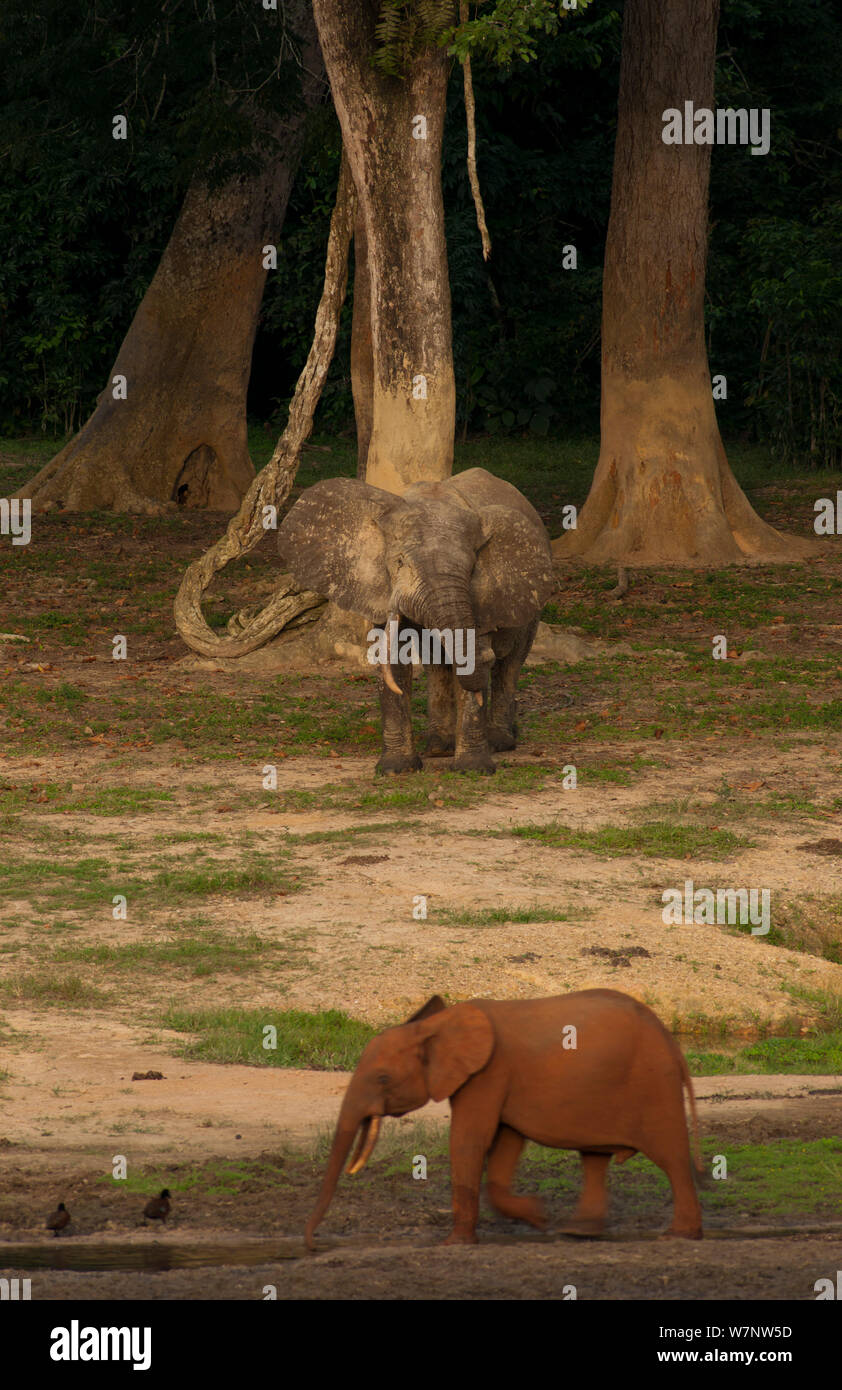 African forest elephants (Loxodonta africana cyclotis) one covered in red soil wanders infront of bull elephant at Dzanga Bai. The Bai attracts elephants from all over the region and the coloured variation in soil and mud bath deposits on an elephant's skin can signal that an elephant is from another sector of the park and not necessarily related to other elephants visiting the clearing at the same time. Dzanga-Ndoki National Park, Central African Republic Stock Photohttps://www.alamy.com/image-license-details/?v=1https://www.alamy.com/african-forest-elephants-loxodonta-africana-cyclotis-one-covered-in-red-soil-wanders-infront-of-bull-elephant-at-dzanga-bai-the-bai-attracts-elephants-from-all-over-the-region-and-the-coloured-variation-in-soil-and-mud-bath-deposits-on-an-elephants-skin-can-signal-that-an-elephant-is-from-another-sector-of-the-park-and-not-necessarily-related-to-other-elephants-visiting-the-clearing-at-the-same-time-dzanga-ndoki-national-park-central-african-republic-image262938857.html
African forest elephants (Loxodonta africana cyclotis) one covered in red soil wanders infront of bull elephant at Dzanga Bai. The Bai attracts elephants from all over the region and the coloured variation in soil and mud bath deposits on an elephant's skin can signal that an elephant is from another sector of the park and not necessarily related to other elephants visiting the clearing at the same time. Dzanga-Ndoki National Park, Central African Republic Stock Photohttps://www.alamy.com/image-license-details/?v=1https://www.alamy.com/african-forest-elephants-loxodonta-africana-cyclotis-one-covered-in-red-soil-wanders-infront-of-bull-elephant-at-dzanga-bai-the-bai-attracts-elephants-from-all-over-the-region-and-the-coloured-variation-in-soil-and-mud-bath-deposits-on-an-elephants-skin-can-signal-that-an-elephant-is-from-another-sector-of-the-park-and-not-necessarily-related-to-other-elephants-visiting-the-clearing-at-the-same-time-dzanga-ndoki-national-park-central-african-republic-image262938857.htmlRMW7NW5D–African forest elephants (Loxodonta africana cyclotis) one covered in red soil wanders infront of bull elephant at Dzanga Bai. The Bai attracts elephants from all over the region and the coloured variation in soil and mud bath deposits on an elephant's skin can signal that an elephant is from another sector of the park and not necessarily related to other elephants visiting the clearing at the same time. Dzanga-Ndoki National Park, Central African Republic
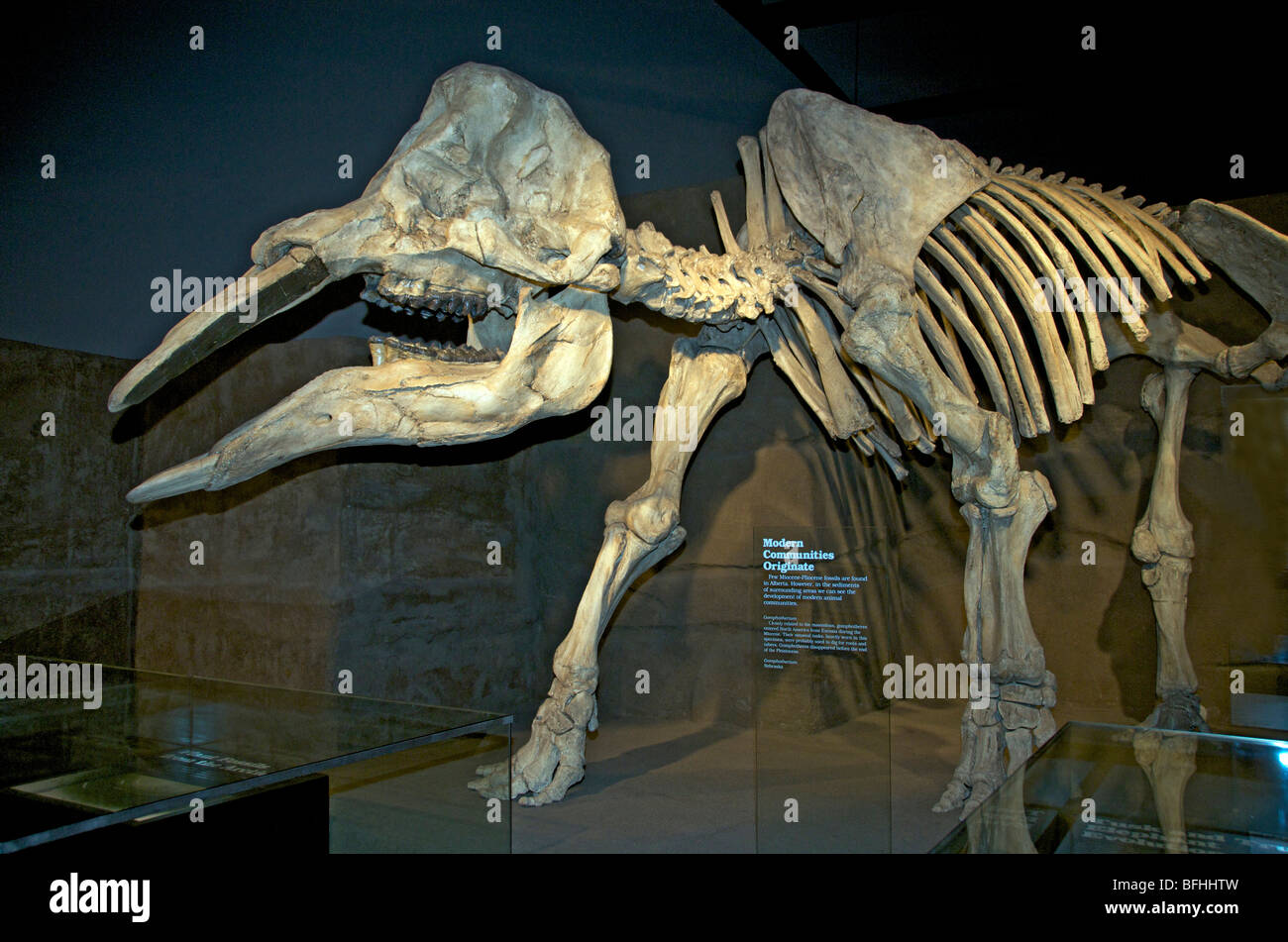 Gomphotherium, closely related to mastodons disappeared before the end of the Pleistocene. Royal Tyrrell Museum, Alta, Canada Stock Photohttps://www.alamy.com/image-license-details/?v=1https://www.alamy.com/stock-photo-gomphotherium-closely-related-to-mastodons-disappeared-before-the-26817417.html
Gomphotherium, closely related to mastodons disappeared before the end of the Pleistocene. Royal Tyrrell Museum, Alta, Canada Stock Photohttps://www.alamy.com/image-license-details/?v=1https://www.alamy.com/stock-photo-gomphotherium-closely-related-to-mastodons-disappeared-before-the-26817417.htmlRFBFHHTW–Gomphotherium, closely related to mastodons disappeared before the end of the Pleistocene. Royal Tyrrell Museum, Alta, Canada
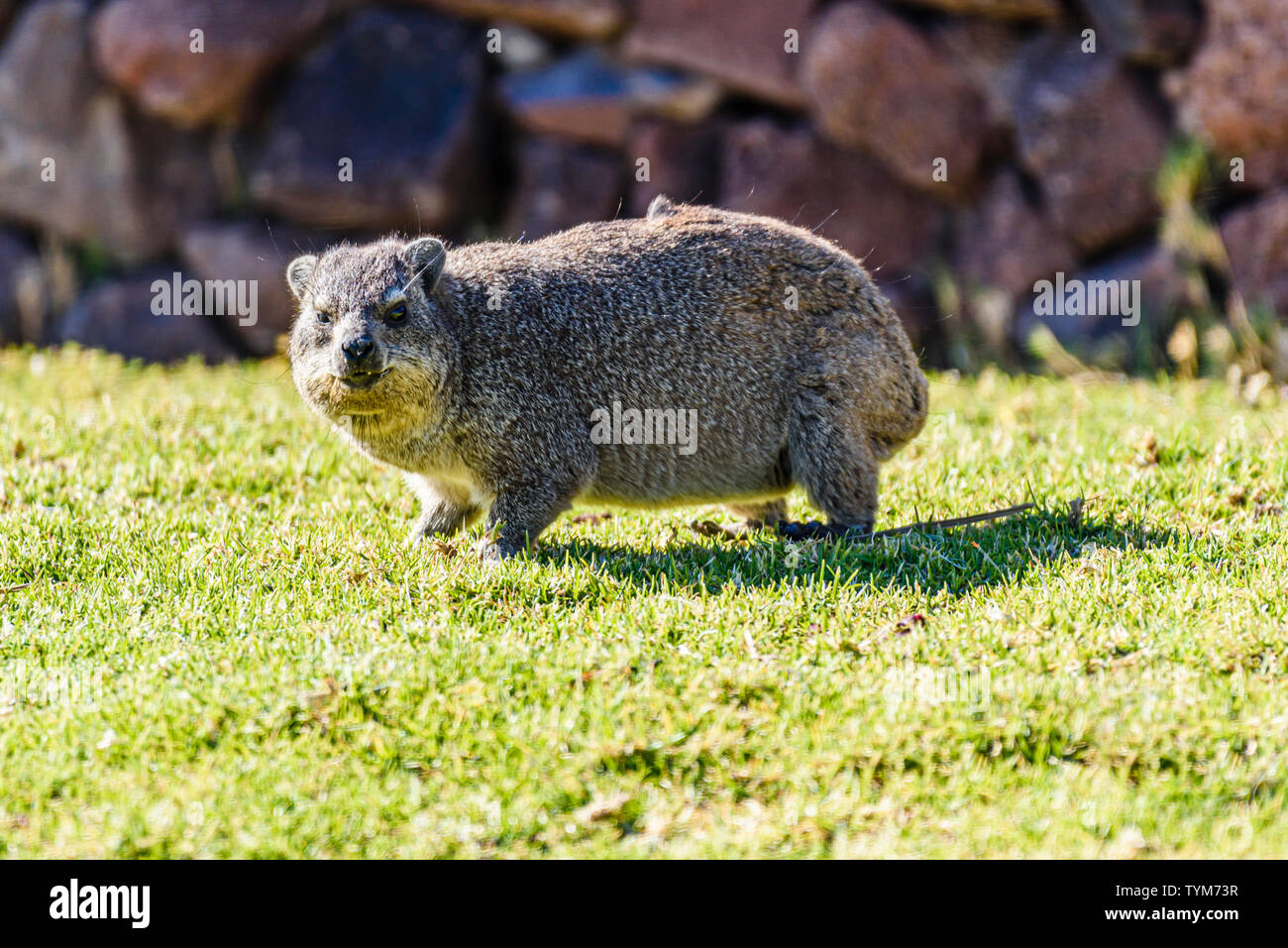 Rock hyrax, a small rodent closely related to elephants and manatees. Namibia Stock Photohttps://www.alamy.com/image-license-details/?v=1https://www.alamy.com/rock-hyrax-a-small-rodent-closely-related-to-elephants-and-manatees-namibia-image257985499.html
Rock hyrax, a small rodent closely related to elephants and manatees. Namibia Stock Photohttps://www.alamy.com/image-license-details/?v=1https://www.alamy.com/rock-hyrax-a-small-rodent-closely-related-to-elephants-and-manatees-namibia-image257985499.htmlRFTYM73R–Rock hyrax, a small rodent closely related to elephants and manatees. Namibia
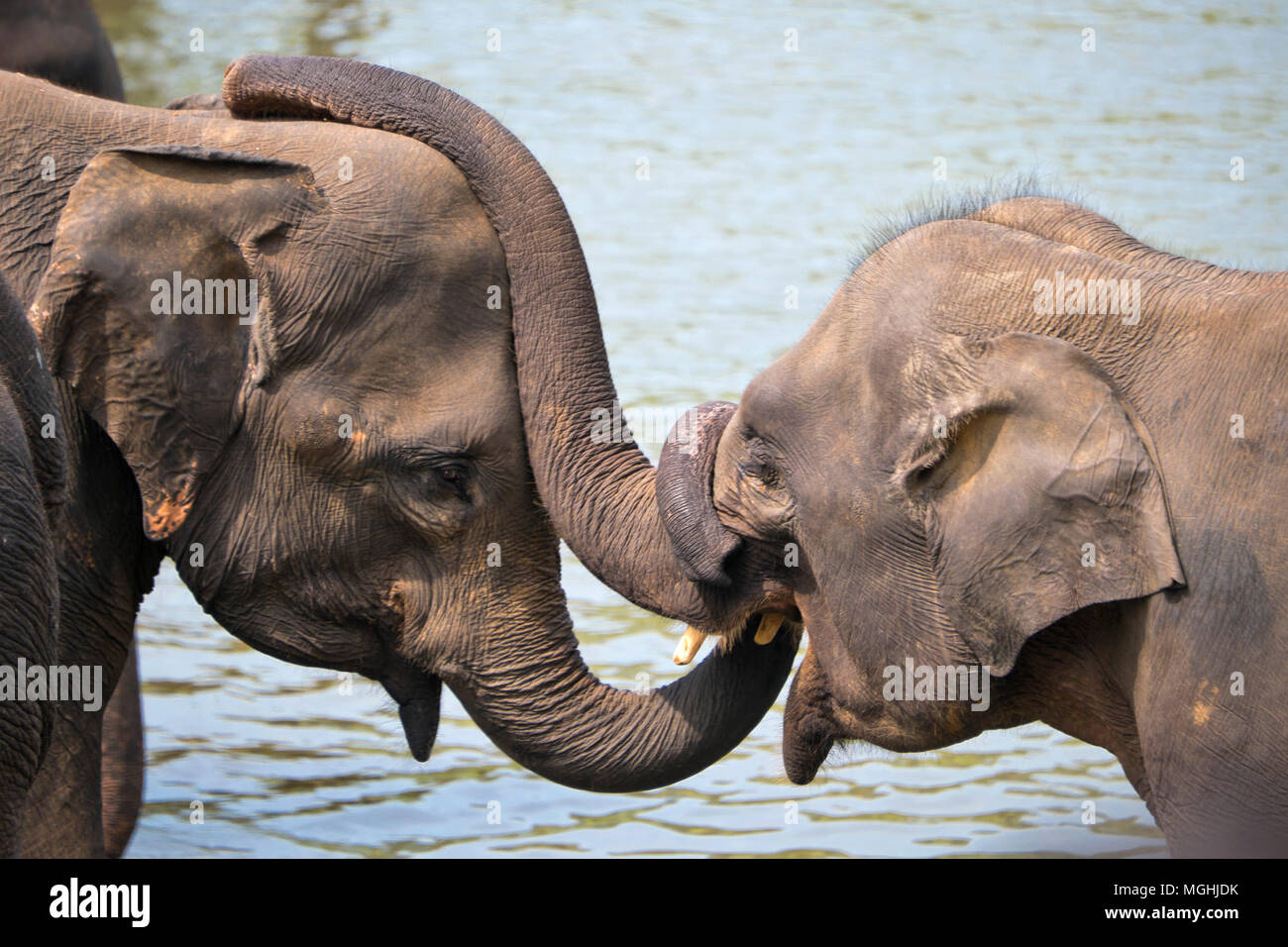 Horizontal view of elephants twisting the trunks together in Sri Lanka. Stock Photohttps://www.alamy.com/image-license-details/?v=1https://www.alamy.com/horizontal-view-of-elephants-twisting-the-trunks-together-in-sri-lanka-image182325855.html
Horizontal view of elephants twisting the trunks together in Sri Lanka. Stock Photohttps://www.alamy.com/image-license-details/?v=1https://www.alamy.com/horizontal-view-of-elephants-twisting-the-trunks-together-in-sri-lanka-image182325855.htmlRFMGHJDK–Horizontal view of elephants twisting the trunks together in Sri Lanka.
 African Elephants (Loxodonta africana). Calf or baby, trying to locate its own mother amongst several other cows browse feeding. Okavango Delta. Botsw Stock Photohttps://www.alamy.com/image-license-details/?v=1https://www.alamy.com/african-elephants-loxodonta-africana-calf-or-baby-trying-to-locate-its-own-mother-amongst-several-other-cows-browse-feeding-okavango-delta-botsw-image177834464.html
African Elephants (Loxodonta africana). Calf or baby, trying to locate its own mother amongst several other cows browse feeding. Okavango Delta. Botsw Stock Photohttps://www.alamy.com/image-license-details/?v=1https://www.alamy.com/african-elephants-loxodonta-africana-calf-or-baby-trying-to-locate-its-own-mother-amongst-several-other-cows-browse-feeding-okavango-delta-botsw-image177834464.htmlRMM991JT–African Elephants (Loxodonta africana). Calf or baby, trying to locate its own mother amongst several other cows browse feeding. Okavango Delta. Botsw
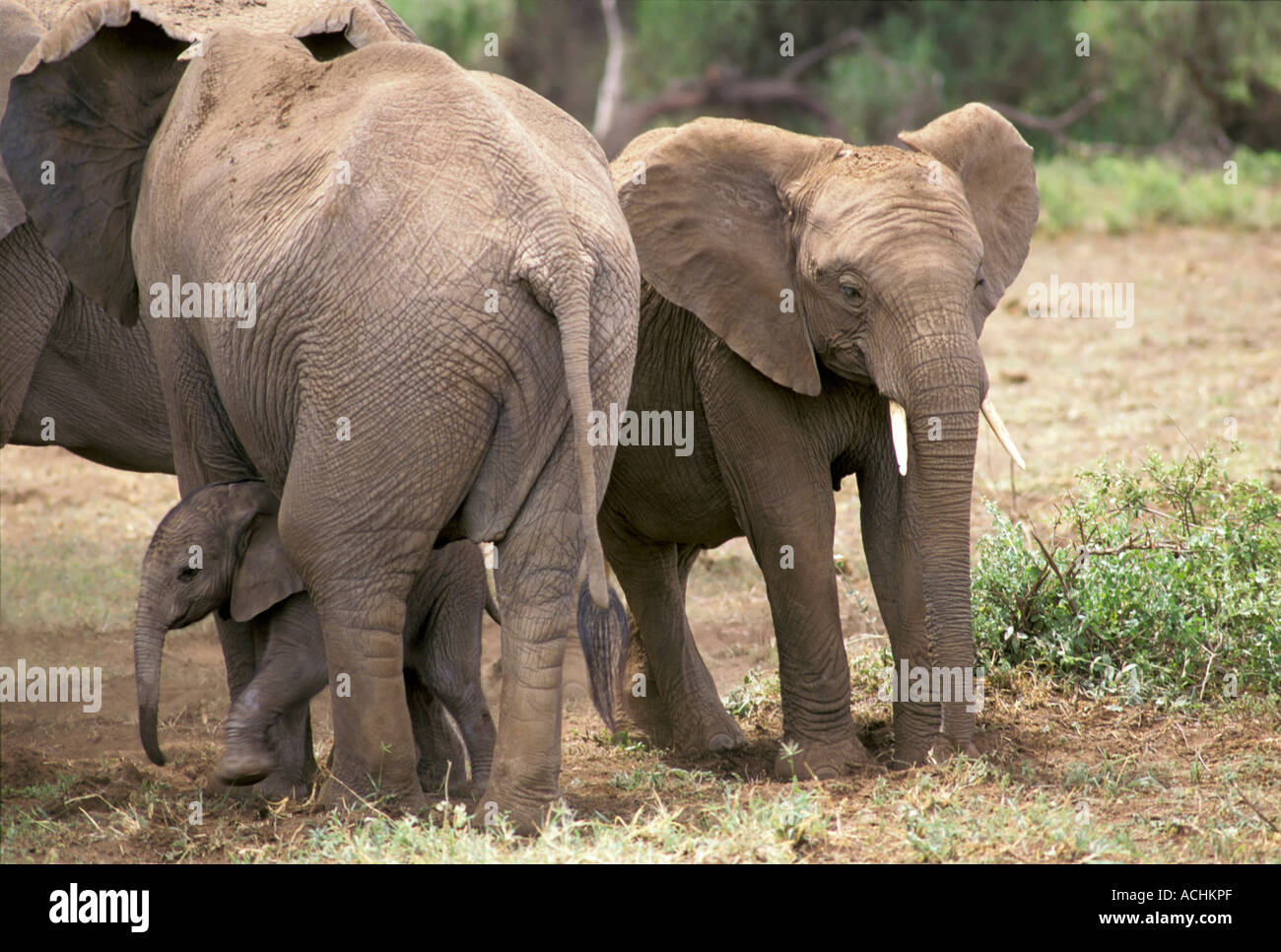 Elephants ( Loxodonta africana ) family with baby, Amboseli National Park, Kenya Stock Photohttps://www.alamy.com/image-license-details/?v=1https://www.alamy.com/elephants-loxodonta-africana-family-with-baby-amboseli-national-park-image7521198.html
Elephants ( Loxodonta africana ) family with baby, Amboseli National Park, Kenya Stock Photohttps://www.alamy.com/image-license-details/?v=1https://www.alamy.com/elephants-loxodonta-africana-family-with-baby-amboseli-national-park-image7521198.htmlRMACHKPF–Elephants ( Loxodonta africana ) family with baby, Amboseli National Park, Kenya
 Arrival of elephants related to the show Circus Krone, Amsterdam; one row of elephants, July 1, 1980, OLIFANTS, arrivals, circuses, The Netherlands, 20th century press agency photo, news to remember, documentary, historic photography 1945-1990, visual stories, human history of the Twentieth Century, capturing moments in time Stock Photohttps://www.alamy.com/image-license-details/?v=1https://www.alamy.com/arrival-of-elephants-related-to-the-show-circus-krone-amsterdam-one-row-of-elephants-july-1-1980-olifants-arrivals-circuses-the-netherlands-20th-century-press-agency-photo-news-to-remember-documentary-historic-photography-1945-1990-visual-stories-human-history-of-the-twentieth-century-capturing-moments-in-time-image429205434.html
Arrival of elephants related to the show Circus Krone, Amsterdam; one row of elephants, July 1, 1980, OLIFANTS, arrivals, circuses, The Netherlands, 20th century press agency photo, news to remember, documentary, historic photography 1945-1990, visual stories, human history of the Twentieth Century, capturing moments in time Stock Photohttps://www.alamy.com/image-license-details/?v=1https://www.alamy.com/arrival-of-elephants-related-to-the-show-circus-krone-amsterdam-one-row-of-elephants-july-1-1980-olifants-arrivals-circuses-the-netherlands-20th-century-press-agency-photo-news-to-remember-documentary-historic-photography-1945-1990-visual-stories-human-history-of-the-twentieth-century-capturing-moments-in-time-image429205434.htmlRM2FX7YWE–Arrival of elephants related to the show Circus Krone, Amsterdam; one row of elephants, July 1, 1980, OLIFANTS, arrivals, circuses, The Netherlands, 20th century press agency photo, news to remember, documentary, historic photography 1945-1990, visual stories, human history of the Twentieth Century, capturing moments in time
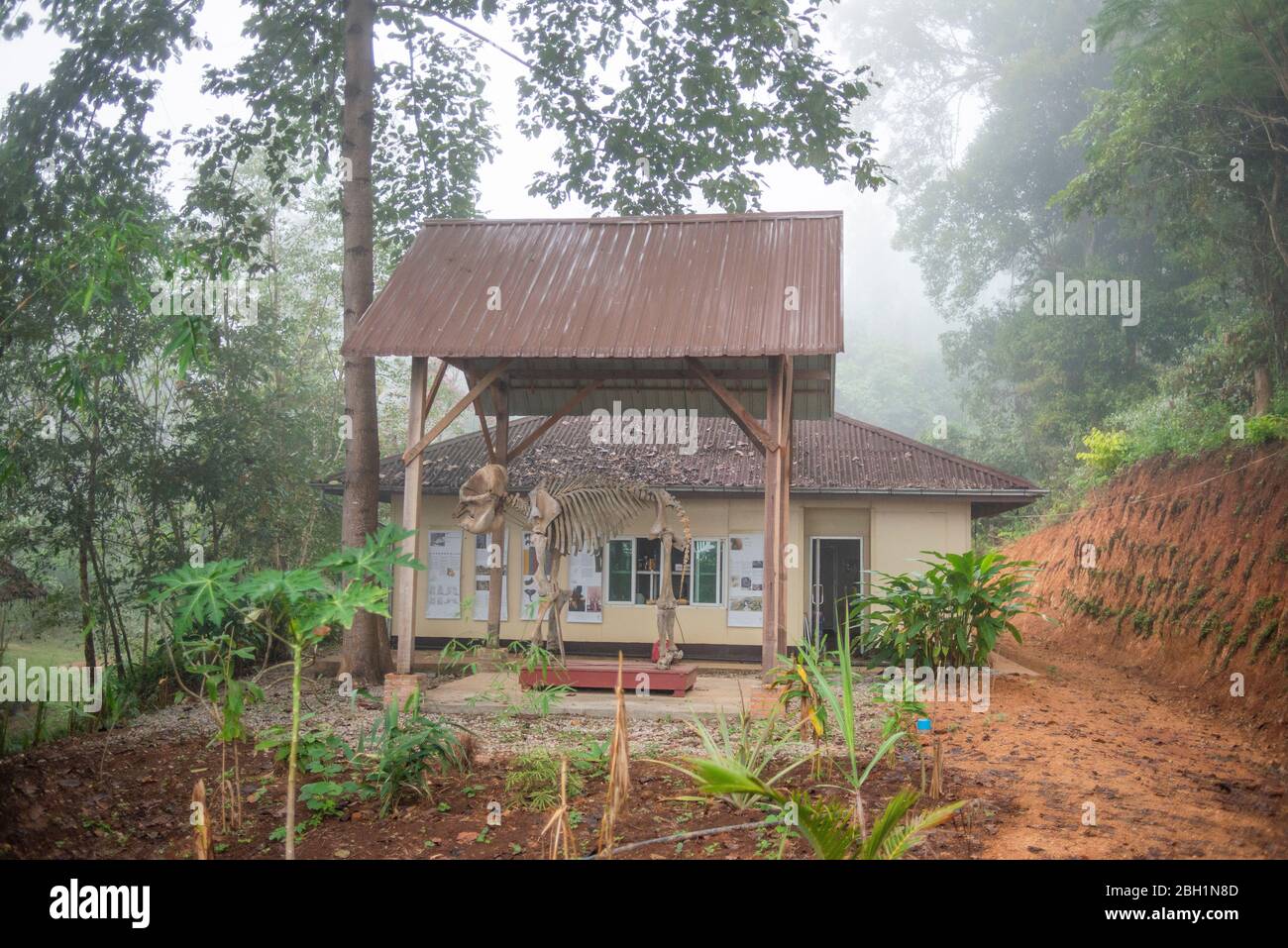 The skeleton of an elephant near the hospital in the Elephant Conservation Center, Sayaboury, Laos. The Elephant Conservation Center is the only organization in Laos who is interested in maintaining the population and breeding of elephants. They have the only elephant hospital and research laboratory in Laos. The Center was created in 2011, and now the team is protecting 29 elephants that had been working in the logging industry or mass tourism, and 530 hectares of forest around Nam Tien Lake in Sayaboury. Stock Photohttps://www.alamy.com/image-license-details/?v=1https://www.alamy.com/the-skeleton-of-an-elephant-near-the-hospital-in-the-elephant-conservation-center-sayaboury-laos-the-elephant-conservation-center-is-the-only-organization-in-laos-who-is-interested-in-maintaining-the-population-and-breeding-of-elephants-they-have-the-only-elephant-hospital-and-research-laboratory-in-laos-the-center-was-created-in-2011-and-now-the-team-is-protecting-29-elephants-that-had-been-working-in-the-logging-industry-or-mass-tourism-and-530-hectares-of-forest-around-nam-tien-lake-in-sayaboury-image354695165.html
The skeleton of an elephant near the hospital in the Elephant Conservation Center, Sayaboury, Laos. The Elephant Conservation Center is the only organization in Laos who is interested in maintaining the population and breeding of elephants. They have the only elephant hospital and research laboratory in Laos. The Center was created in 2011, and now the team is protecting 29 elephants that had been working in the logging industry or mass tourism, and 530 hectares of forest around Nam Tien Lake in Sayaboury. Stock Photohttps://www.alamy.com/image-license-details/?v=1https://www.alamy.com/the-skeleton-of-an-elephant-near-the-hospital-in-the-elephant-conservation-center-sayaboury-laos-the-elephant-conservation-center-is-the-only-organization-in-laos-who-is-interested-in-maintaining-the-population-and-breeding-of-elephants-they-have-the-only-elephant-hospital-and-research-laboratory-in-laos-the-center-was-created-in-2011-and-now-the-team-is-protecting-29-elephants-that-had-been-working-in-the-logging-industry-or-mass-tourism-and-530-hectares-of-forest-around-nam-tien-lake-in-sayaboury-image354695165.htmlRM2BH1N8D–The skeleton of an elephant near the hospital in the Elephant Conservation Center, Sayaboury, Laos. The Elephant Conservation Center is the only organization in Laos who is interested in maintaining the population and breeding of elephants. They have the only elephant hospital and research laboratory in Laos. The Center was created in 2011, and now the team is protecting 29 elephants that had been working in the logging industry or mass tourism, and 530 hectares of forest around Nam Tien Lake in Sayaboury.
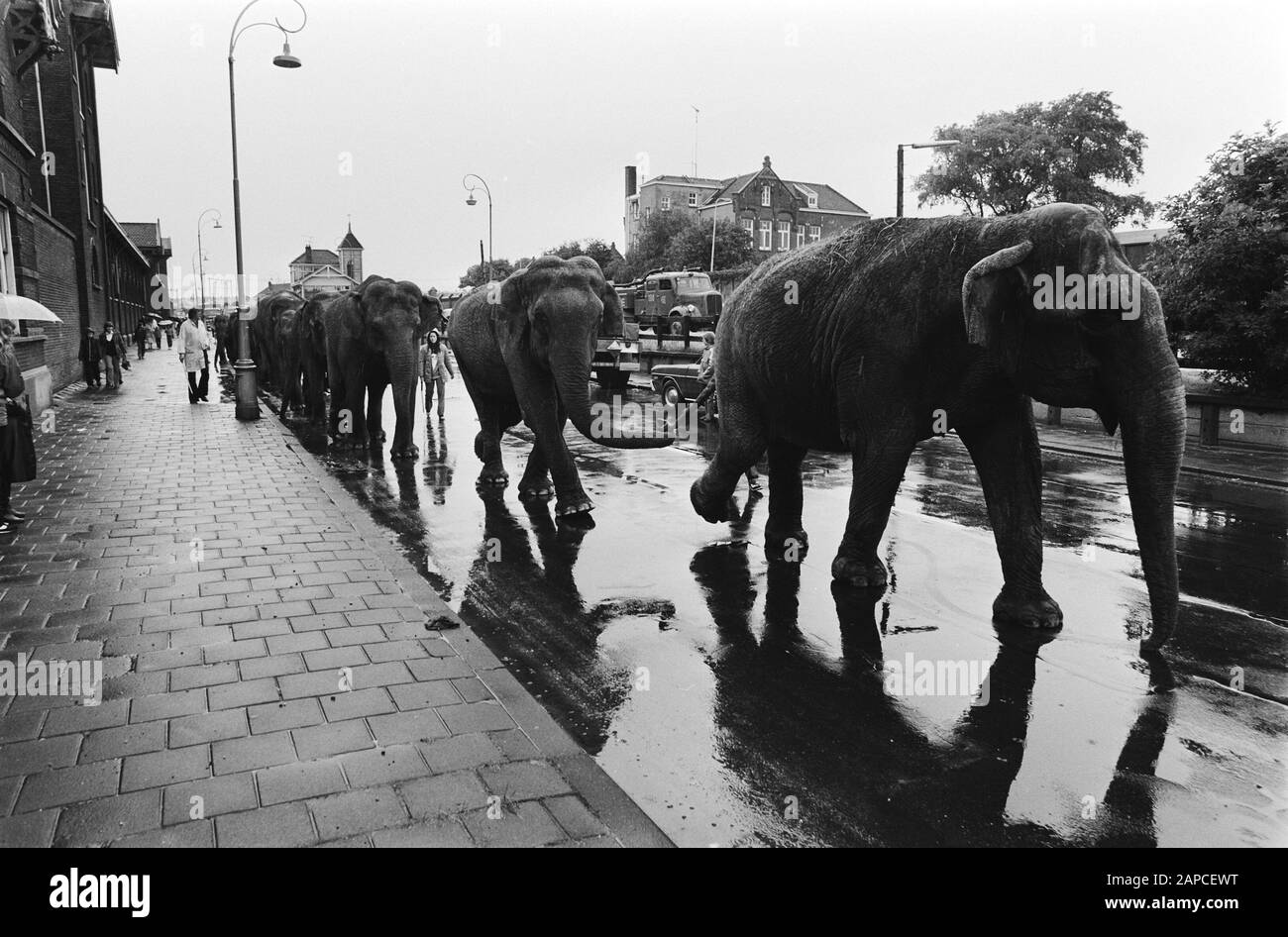 Arrival elephants related to show Circus Krone, Amsterdam; a row of elephants Date: July 1, 1980 Location: Amsterdam, Noord-Holland Keywords: OLIFANTS, arrivals, circuses Personal name : Circus Krone Stock Photohttps://www.alamy.com/image-license-details/?v=1https://www.alamy.com/arrival-elephants-related-to-show-circus-krone-amsterdam-a-row-of-elephants-date-july-1-1980-location-amsterdam-noord-holland-keywords-olifants-arrivals-circuses-personal-name-circus-krone-image340794548.html
Arrival elephants related to show Circus Krone, Amsterdam; a row of elephants Date: July 1, 1980 Location: Amsterdam, Noord-Holland Keywords: OLIFANTS, arrivals, circuses Personal name : Circus Krone Stock Photohttps://www.alamy.com/image-license-details/?v=1https://www.alamy.com/arrival-elephants-related-to-show-circus-krone-amsterdam-a-row-of-elephants-date-july-1-1980-location-amsterdam-noord-holland-keywords-olifants-arrivals-circuses-personal-name-circus-krone-image340794548.htmlRM2APCEWT–Arrival elephants related to show Circus Krone, Amsterdam; a row of elephants Date: July 1, 1980 Location: Amsterdam, Noord-Holland Keywords: OLIFANTS, arrivals, circuses Personal name : Circus Krone
 Mastodon spec., Print, Mastodons are any species of extinct proboscideans in the genus Mammut (family Mammutidae), distantly related to elephants, that inhabited North and Central America during the late Miocene or late Pliocene up to their extinction at the end of the Pleistocene 10, 000 to 11, 000 years ago. Mastodons lived in herds and were predominantly forest-dwelling animals that fed on a mixed diet obtained by browsing and grazing with a seasonal preference for browsing, similar to living elephants., skeleton, Reimagined by Gibon, design of warm cheerful glowing of brightness and light Stock Photohttps://www.alamy.com/image-license-details/?v=1https://www.alamy.com/mastodon-spec-print-mastodons-are-any-species-of-extinct-proboscideans-in-the-genus-mammut-family-mammutidae-distantly-related-to-elephants-that-inhabited-north-and-central-america-during-the-late-miocene-or-late-pliocene-up-to-their-extinction-at-the-end-of-the-pleistocene-10-000-to-11-000-years-ago-mastodons-lived-in-herds-and-were-predominantly-forest-dwelling-animals-that-fed-on-a-mixed-diet-obtained-by-browsing-and-grazing-with-a-seasonal-preference-for-browsing-similar-to-living-elephants-skeleton-reimagined-by-gibon-design-of-warm-cheerful-glowing-of-brightness-and-light-image349766383.html
Mastodon spec., Print, Mastodons are any species of extinct proboscideans in the genus Mammut (family Mammutidae), distantly related to elephants, that inhabited North and Central America during the late Miocene or late Pliocene up to their extinction at the end of the Pleistocene 10, 000 to 11, 000 years ago. Mastodons lived in herds and were predominantly forest-dwelling animals that fed on a mixed diet obtained by browsing and grazing with a seasonal preference for browsing, similar to living elephants., skeleton, Reimagined by Gibon, design of warm cheerful glowing of brightness and light Stock Photohttps://www.alamy.com/image-license-details/?v=1https://www.alamy.com/mastodon-spec-print-mastodons-are-any-species-of-extinct-proboscideans-in-the-genus-mammut-family-mammutidae-distantly-related-to-elephants-that-inhabited-north-and-central-america-during-the-late-miocene-or-late-pliocene-up-to-their-extinction-at-the-end-of-the-pleistocene-10-000-to-11-000-years-ago-mastodons-lived-in-herds-and-were-predominantly-forest-dwelling-animals-that-fed-on-a-mixed-diet-obtained-by-browsing-and-grazing-with-a-seasonal-preference-for-browsing-similar-to-living-elephants-skeleton-reimagined-by-gibon-design-of-warm-cheerful-glowing-of-brightness-and-light-image349766383.htmlRF2B916GF–Mastodon spec., Print, Mastodons are any species of extinct proboscideans in the genus Mammut (family Mammutidae), distantly related to elephants, that inhabited North and Central America during the late Miocene or late Pliocene up to their extinction at the end of the Pleistocene 10, 000 to 11, 000 years ago. Mastodons lived in herds and were predominantly forest-dwelling animals that fed on a mixed diet obtained by browsing and grazing with a seasonal preference for browsing, similar to living elephants., skeleton, Reimagined by Gibon, design of warm cheerful glowing of brightness and light
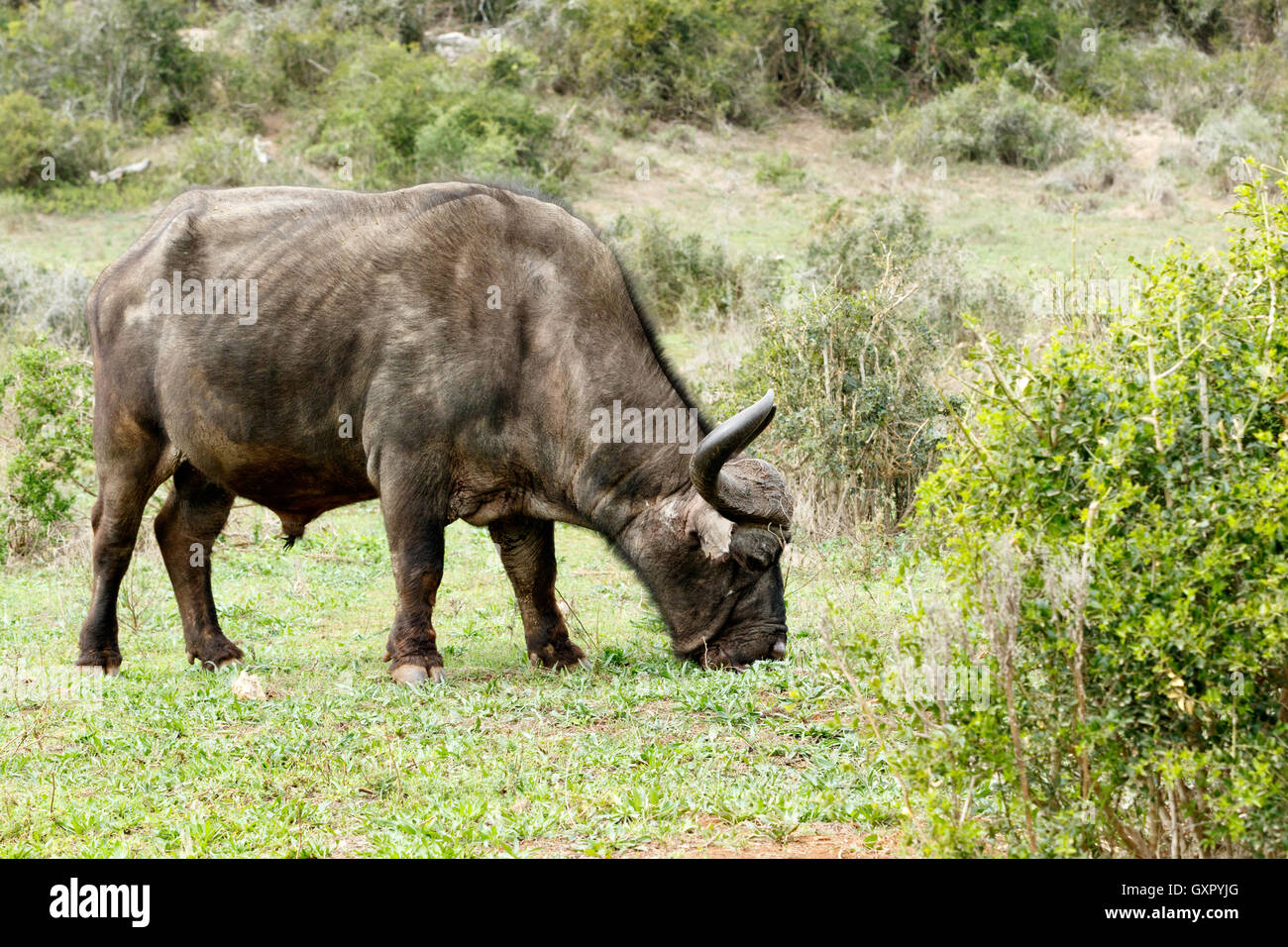 Smelling The Grass - The African buffalo or Cape buffalo is a large African bovine. It is not closely related to the slightly l Stock Photohttps://www.alamy.com/image-license-details/?v=1https://www.alamy.com/stock-photo-smelling-the-grass-the-african-buffalo-or-cape-buffalo-is-a-large-119747896.html
Smelling The Grass - The African buffalo or Cape buffalo is a large African bovine. It is not closely related to the slightly l Stock Photohttps://www.alamy.com/image-license-details/?v=1https://www.alamy.com/stock-photo-smelling-the-grass-the-african-buffalo-or-cape-buffalo-is-a-large-119747896.htmlRFGXPYJG–Smelling The Grass - The African buffalo or Cape buffalo is a large African bovine. It is not closely related to the slightly l
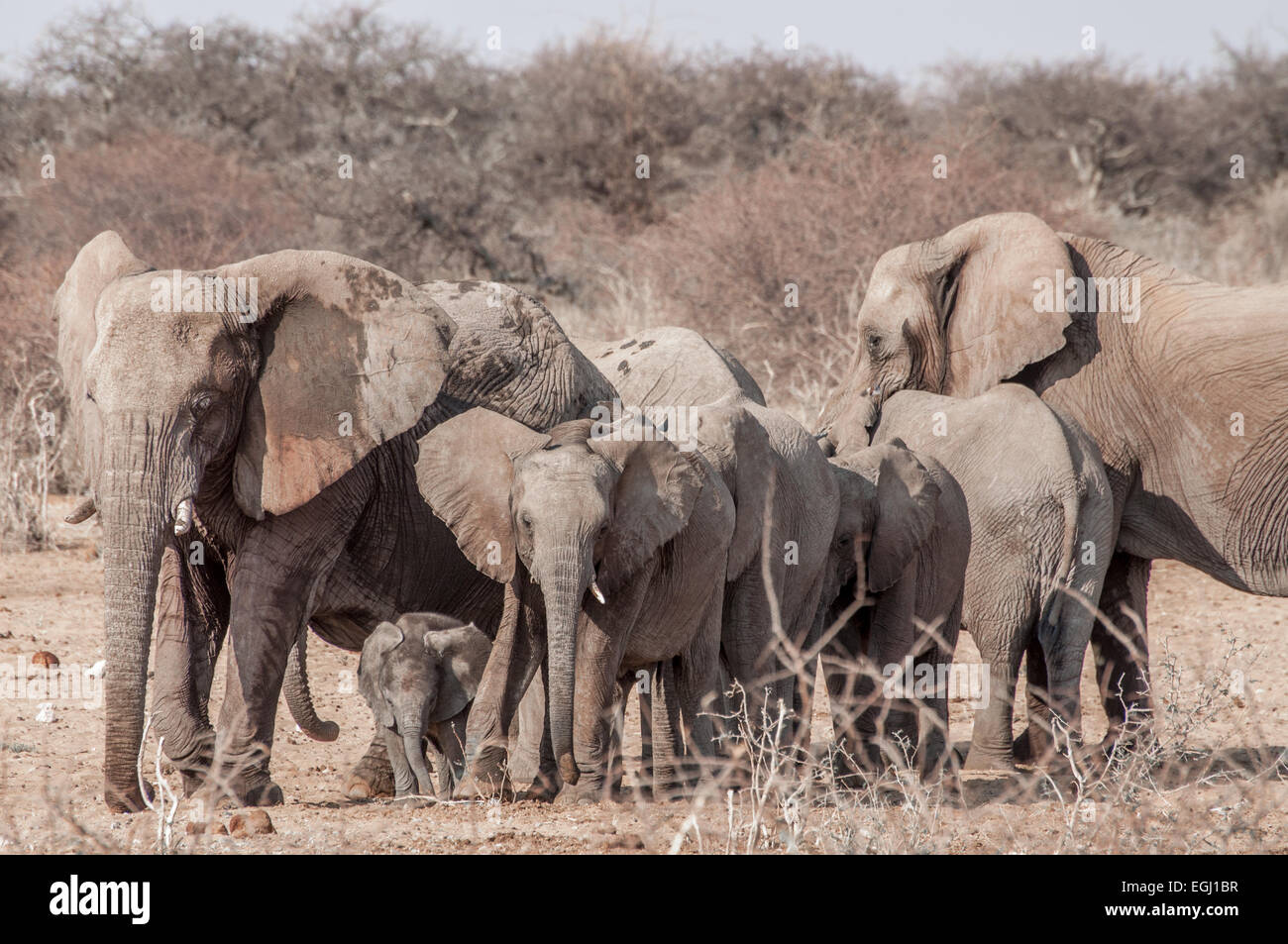 Female elephants walk together while keeping the baby elephant protected in the middle of the group. Stock Photohttps://www.alamy.com/image-license-details/?v=1https://www.alamy.com/stock-photo-female-elephants-walk-together-while-keeping-the-baby-elephant-protected-79072219.html
Female elephants walk together while keeping the baby elephant protected in the middle of the group. Stock Photohttps://www.alamy.com/image-license-details/?v=1https://www.alamy.com/stock-photo-female-elephants-walk-together-while-keeping-the-baby-elephant-protected-79072219.htmlRFEGJ1BR–Female elephants walk together while keeping the baby elephant protected in the middle of the group.
 Mastodon spec., Print, Mastodons are any species of extinct proboscideans in the genus Mammut (family Mammutidae), distantly related to elephants, that inhabited North and Central America during the late Miocene or late Pliocene up to their extinction at the end of the Pleistocene 10, 000 to 11, 000 years ago. Mastodons lived in herds and were predominantly forest-dwelling animals that fed on a mixed diet obtained by browsing and grazing with a seasonal preference for browsing, similar to living elephants., bones Stock Photohttps://www.alamy.com/image-license-details/?v=1https://www.alamy.com/mastodon-spec-print-mastodons-are-any-species-of-extinct-proboscideans-in-the-genus-mammut-family-mammutidae-distantly-related-to-elephants-that-inhabited-north-and-central-america-during-the-late-miocene-or-late-pliocene-up-to-their-extinction-at-the-end-of-the-pleistocene-10-000-to-11-000-years-ago-mastodons-lived-in-herds-and-were-predominantly-forest-dwelling-animals-that-fed-on-a-mixed-diet-obtained-by-browsing-and-grazing-with-a-seasonal-preference-for-browsing-similar-to-living-elephants-bones-image328690991.html
Mastodon spec., Print, Mastodons are any species of extinct proboscideans in the genus Mammut (family Mammutidae), distantly related to elephants, that inhabited North and Central America during the late Miocene or late Pliocene up to their extinction at the end of the Pleistocene 10, 000 to 11, 000 years ago. Mastodons lived in herds and were predominantly forest-dwelling animals that fed on a mixed diet obtained by browsing and grazing with a seasonal preference for browsing, similar to living elephants., bones Stock Photohttps://www.alamy.com/image-license-details/?v=1https://www.alamy.com/mastodon-spec-print-mastodons-are-any-species-of-extinct-proboscideans-in-the-genus-mammut-family-mammutidae-distantly-related-to-elephants-that-inhabited-north-and-central-america-during-the-late-miocene-or-late-pliocene-up-to-their-extinction-at-the-end-of-the-pleistocene-10-000-to-11-000-years-ago-mastodons-lived-in-herds-and-were-predominantly-forest-dwelling-animals-that-fed-on-a-mixed-diet-obtained-by-browsing-and-grazing-with-a-seasonal-preference-for-browsing-similar-to-living-elephants-bones-image328690991.htmlRM2A2N4KY–Mastodon spec., Print, Mastodons are any species of extinct proboscideans in the genus Mammut (family Mammutidae), distantly related to elephants, that inhabited North and Central America during the late Miocene or late Pliocene up to their extinction at the end of the Pleistocene 10, 000 to 11, 000 years ago. Mastodons lived in herds and were predominantly forest-dwelling animals that fed on a mixed diet obtained by browsing and grazing with a seasonal preference for browsing, similar to living elephants., bones
 The Royal Elephant National Museum in Dusit Park in Bangkok Thailand Once the stables for the royal elephants the building now houses a museum displaying paraphernalia related to the royal elephants Stock Photohttps://www.alamy.com/image-license-details/?v=1https://www.alamy.com/stock-photo-the-royal-elephant-national-museum-in-dusit-park-in-bangkok-thailand-10010587.html
The Royal Elephant National Museum in Dusit Park in Bangkok Thailand Once the stables for the royal elephants the building now houses a museum displaying paraphernalia related to the royal elephants Stock Photohttps://www.alamy.com/image-license-details/?v=1https://www.alamy.com/stock-photo-the-royal-elephant-national-museum-in-dusit-park-in-bangkok-thailand-10010587.htmlRMA0JM2M–The Royal Elephant National Museum in Dusit Park in Bangkok Thailand Once the stables for the royal elephants the building now houses a museum displaying paraphernalia related to the royal elephants
 November 2017. Elephants walking down the main street in Sauraha is common place -- and happens several times a day, everyday. Sauraha's economy is dominated by tourism related to the nearby Chitwan National Park where elephants are used for giving rides to see rhinoceroses and tigers. Sauraha, Chitwan District, Nepal. Stock Photohttps://www.alamy.com/image-license-details/?v=1https://www.alamy.com/november-2017-elephants-walking-down-the-main-street-in-sauraha-is-common-place-and-happens-several-times-a-day-everyday-saurahas-economy-is-dominated-by-tourism-related-to-the-nearby-chitwan-national-park-where-elephants-are-used-for-giving-rides-to-see-rhinoceroses-and-tigers-sauraha-chitwan-district-nepal-image451160291.html
November 2017. Elephants walking down the main street in Sauraha is common place -- and happens several times a day, everyday. Sauraha's economy is dominated by tourism related to the nearby Chitwan National Park where elephants are used for giving rides to see rhinoceroses and tigers. Sauraha, Chitwan District, Nepal. Stock Photohttps://www.alamy.com/image-license-details/?v=1https://www.alamy.com/november-2017-elephants-walking-down-the-main-street-in-sauraha-is-common-place-and-happens-several-times-a-day-everyday-saurahas-economy-is-dominated-by-tourism-related-to-the-nearby-chitwan-national-park-where-elephants-are-used-for-giving-rides-to-see-rhinoceroses-and-tigers-sauraha-chitwan-district-nepal-image451160291.htmlRM2H603FF–November 2017. Elephants walking down the main street in Sauraha is common place -- and happens several times a day, everyday. Sauraha's economy is dominated by tourism related to the nearby Chitwan National Park where elephants are used for giving rides to see rhinoceroses and tigers. Sauraha, Chitwan District, Nepal.
 A large herd of African Elephants Loxodonta africana moving slowly alongside the Chobe river in Botswana Stock Photohttps://www.alamy.com/image-license-details/?v=1https://www.alamy.com/stock-photo-a-large-herd-of-african-elephants-loxodonta-africana-moving-slowly-122933733.html
A large herd of African Elephants Loxodonta africana moving slowly alongside the Chobe river in Botswana Stock Photohttps://www.alamy.com/image-license-details/?v=1https://www.alamy.com/stock-photo-a-large-herd-of-african-elephants-loxodonta-africana-moving-slowly-122933733.htmlRMH4036D–A large herd of African Elephants Loxodonta africana moving slowly alongside the Chobe river in Botswana
 Samut Prakan Province, Thailand. 2nd Jan, 2022. Thailand men's national football team (War Elephants) players With related parties arriving at Suvarnabhumi Airport, Samut Prakan Province, Thailand, on 02 January 2022 after winning the ASEAN Football Federation Championship 2020 (AFF Suzuki Cup 2020) successfully. (Credit Image: © Teera Noisakran/Pacific Press via ZUMA Press Wire) Stock Photohttps://www.alamy.com/image-license-details/?v=1https://www.alamy.com/samut-prakan-province-thailand-2nd-jan-2022-thailand-mens-national-football-team-war-elephants-players-with-related-parties-arriving-at-suvarnabhumi-airport-samut-prakan-province-thailand-on-02-january-2022-after-winning-the-asean-football-federation-championship-2020-aff-suzuki-cup-2020-successfully-credit-image-teera-noisakranpacific-press-via-zuma-press-wire-image455516045.html
Samut Prakan Province, Thailand. 2nd Jan, 2022. Thailand men's national football team (War Elephants) players With related parties arriving at Suvarnabhumi Airport, Samut Prakan Province, Thailand, on 02 January 2022 after winning the ASEAN Football Federation Championship 2020 (AFF Suzuki Cup 2020) successfully. (Credit Image: © Teera Noisakran/Pacific Press via ZUMA Press Wire) Stock Photohttps://www.alamy.com/image-license-details/?v=1https://www.alamy.com/samut-prakan-province-thailand-2nd-jan-2022-thailand-mens-national-football-team-war-elephants-players-with-related-parties-arriving-at-suvarnabhumi-airport-samut-prakan-province-thailand-on-02-january-2022-after-winning-the-asean-football-federation-championship-2020-aff-suzuki-cup-2020-successfully-credit-image-teera-noisakranpacific-press-via-zuma-press-wire-image455516045.htmlRM2HD2FA5–Samut Prakan Province, Thailand. 2nd Jan, 2022. Thailand men's national football team (War Elephants) players With related parties arriving at Suvarnabhumi Airport, Samut Prakan Province, Thailand, on 02 January 2022 after winning the ASEAN Football Federation Championship 2020 (AFF Suzuki Cup 2020) successfully. (Credit Image: © Teera Noisakran/Pacific Press via ZUMA Press Wire)
 Two female Asian Elephants: a charming interaction between family members of these beautiful, intelligent creatures at Chester Zoo in the UK Stock Photohttps://www.alamy.com/image-license-details/?v=1https://www.alamy.com/two-female-asian-elephants-a-charming-interaction-between-family-members-of-these-beautiful-intelligent-creatures-at-chester-zoo-in-the-uk-image364421589.html
Two female Asian Elephants: a charming interaction between family members of these beautiful, intelligent creatures at Chester Zoo in the UK Stock Photohttps://www.alamy.com/image-license-details/?v=1https://www.alamy.com/two-female-asian-elephants-a-charming-interaction-between-family-members-of-these-beautiful-intelligent-creatures-at-chester-zoo-in-the-uk-image364421589.htmlRF2C4TRCN–Two female Asian Elephants: a charming interaction between family members of these beautiful, intelligent creatures at Chester Zoo in the UK
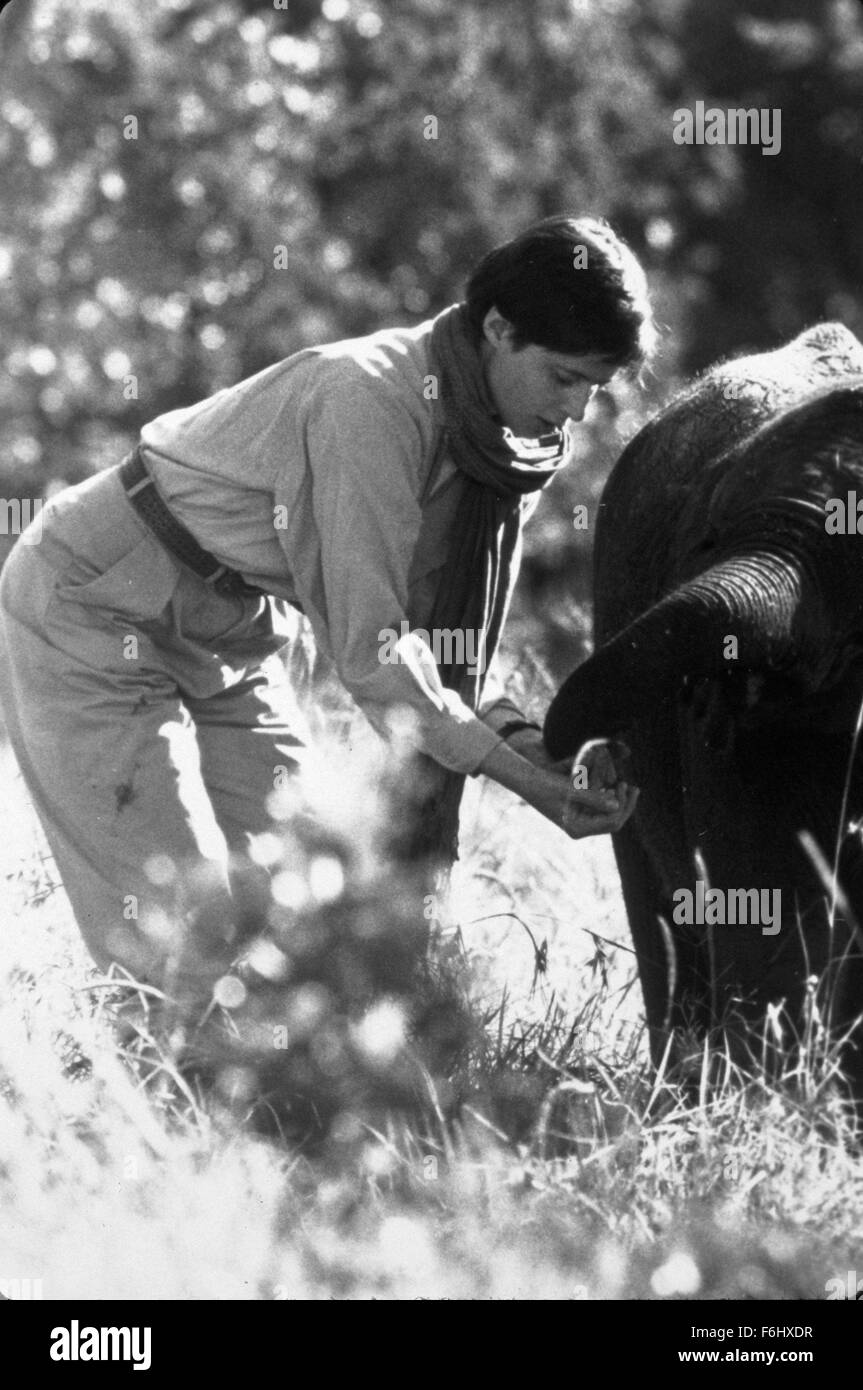 RELEASE DATE: August 20, 1990 MOVIE TITLE: Ivory Hunters aka Last Elephants STUDIO: Turner Pictures DIRECTOR: Joseph Sargent PLOT: An author discovers that his missing research assistant's disappearance may be related to illegal trade in ivory tusks. PICTURED: ISABELLA ROSSELLINI as Maria DiConti. (Credit Image: c Turner Pictures/Entertainment Pictures) Stock Photohttps://www.alamy.com/image-license-details/?v=1https://www.alamy.com/stock-photo-release-date-august-20-1990-movie-title-ivory-hunters-aka-last-elephants-90133731.html
RELEASE DATE: August 20, 1990 MOVIE TITLE: Ivory Hunters aka Last Elephants STUDIO: Turner Pictures DIRECTOR: Joseph Sargent PLOT: An author discovers that his missing research assistant's disappearance may be related to illegal trade in ivory tusks. PICTURED: ISABELLA ROSSELLINI as Maria DiConti. (Credit Image: c Turner Pictures/Entertainment Pictures) Stock Photohttps://www.alamy.com/image-license-details/?v=1https://www.alamy.com/stock-photo-release-date-august-20-1990-movie-title-ivory-hunters-aka-last-elephants-90133731.htmlRMF6HXDR–RELEASE DATE: August 20, 1990 MOVIE TITLE: Ivory Hunters aka Last Elephants STUDIO: Turner Pictures DIRECTOR: Joseph Sargent PLOT: An author discovers that his missing research assistant's disappearance may be related to illegal trade in ivory tusks. PICTURED: ISABELLA ROSSELLINI as Maria DiConti. (Credit Image: c Turner Pictures/Entertainment Pictures)
 African Forest elephant (Loxodonta africana cyclotis) red soil covered individual wanders amongst others coloured differently at Dzanga clearing. The Bai attracts elephants from all over the region and the coloured variation in soil and mud bath deposits on an elephant's skin can signal that an elephant is from another sector of the park and not necessarily related to other elephants visiting the clearing at the same time, Dzanga-Ndoki National Park, Central African Republic Stock Photohttps://www.alamy.com/image-license-details/?v=1https://www.alamy.com/african-forest-elephant-loxodonta-africana-cyclotis-red-soil-covered-individual-wanders-amongst-others-coloured-differently-at-dzanga-clearing-the-bai-attracts-elephants-from-all-over-the-region-and-the-coloured-variation-in-soil-and-mud-bath-deposits-on-an-elephants-skin-can-signal-that-an-elephant-is-from-another-sector-of-the-park-and-not-necessarily-related-to-other-elephants-visiting-the-clearing-at-the-same-time-dzanga-ndoki-national-park-central-african-republic-image262938850.html
African Forest elephant (Loxodonta africana cyclotis) red soil covered individual wanders amongst others coloured differently at Dzanga clearing. The Bai attracts elephants from all over the region and the coloured variation in soil and mud bath deposits on an elephant's skin can signal that an elephant is from another sector of the park and not necessarily related to other elephants visiting the clearing at the same time, Dzanga-Ndoki National Park, Central African Republic Stock Photohttps://www.alamy.com/image-license-details/?v=1https://www.alamy.com/african-forest-elephant-loxodonta-africana-cyclotis-red-soil-covered-individual-wanders-amongst-others-coloured-differently-at-dzanga-clearing-the-bai-attracts-elephants-from-all-over-the-region-and-the-coloured-variation-in-soil-and-mud-bath-deposits-on-an-elephants-skin-can-signal-that-an-elephant-is-from-another-sector-of-the-park-and-not-necessarily-related-to-other-elephants-visiting-the-clearing-at-the-same-time-dzanga-ndoki-national-park-central-african-republic-image262938850.htmlRMW7NW56–African Forest elephant (Loxodonta africana cyclotis) red soil covered individual wanders amongst others coloured differently at Dzanga clearing. The Bai attracts elephants from all over the region and the coloured variation in soil and mud bath deposits on an elephant's skin can signal that an elephant is from another sector of the park and not necessarily related to other elephants visiting the clearing at the same time, Dzanga-Ndoki National Park, Central African Republic
 Gomphotherium, closely related to mastodons disappeared before the end of the Pleistocene. Royal Tyrrell Museum, Alta, Canada Stock Photohttps://www.alamy.com/image-license-details/?v=1https://www.alamy.com/stock-photo-gomphotherium-closely-related-to-mastodons-disappeared-before-the-26817636.html
Gomphotherium, closely related to mastodons disappeared before the end of the Pleistocene. Royal Tyrrell Museum, Alta, Canada Stock Photohttps://www.alamy.com/image-license-details/?v=1https://www.alamy.com/stock-photo-gomphotherium-closely-related-to-mastodons-disappeared-before-the-26817636.htmlRFBFHJ4M–Gomphotherium, closely related to mastodons disappeared before the end of the Pleistocene. Royal Tyrrell Museum, Alta, Canada
 Domestic Asian elephants (Elephas maximas) used for riding safaris with their keepers, Royal Chitwan National Park, Nepal. Stock Photohttps://www.alamy.com/image-license-details/?v=1https://www.alamy.com/domestic-asian-elephants-elephas-maximas-used-for-riding-safaris-with-their-keepers-royal-chitwan-national-park-nepal-image262997849.html
Domestic Asian elephants (Elephas maximas) used for riding safaris with their keepers, Royal Chitwan National Park, Nepal. Stock Photohttps://www.alamy.com/image-license-details/?v=1https://www.alamy.com/domestic-asian-elephants-elephas-maximas-used-for-riding-safaris-with-their-keepers-royal-chitwan-national-park-nepal-image262997849.htmlRMW7TGC9–Domestic Asian elephants (Elephas maximas) used for riding safaris with their keepers, Royal Chitwan National Park, Nepal.
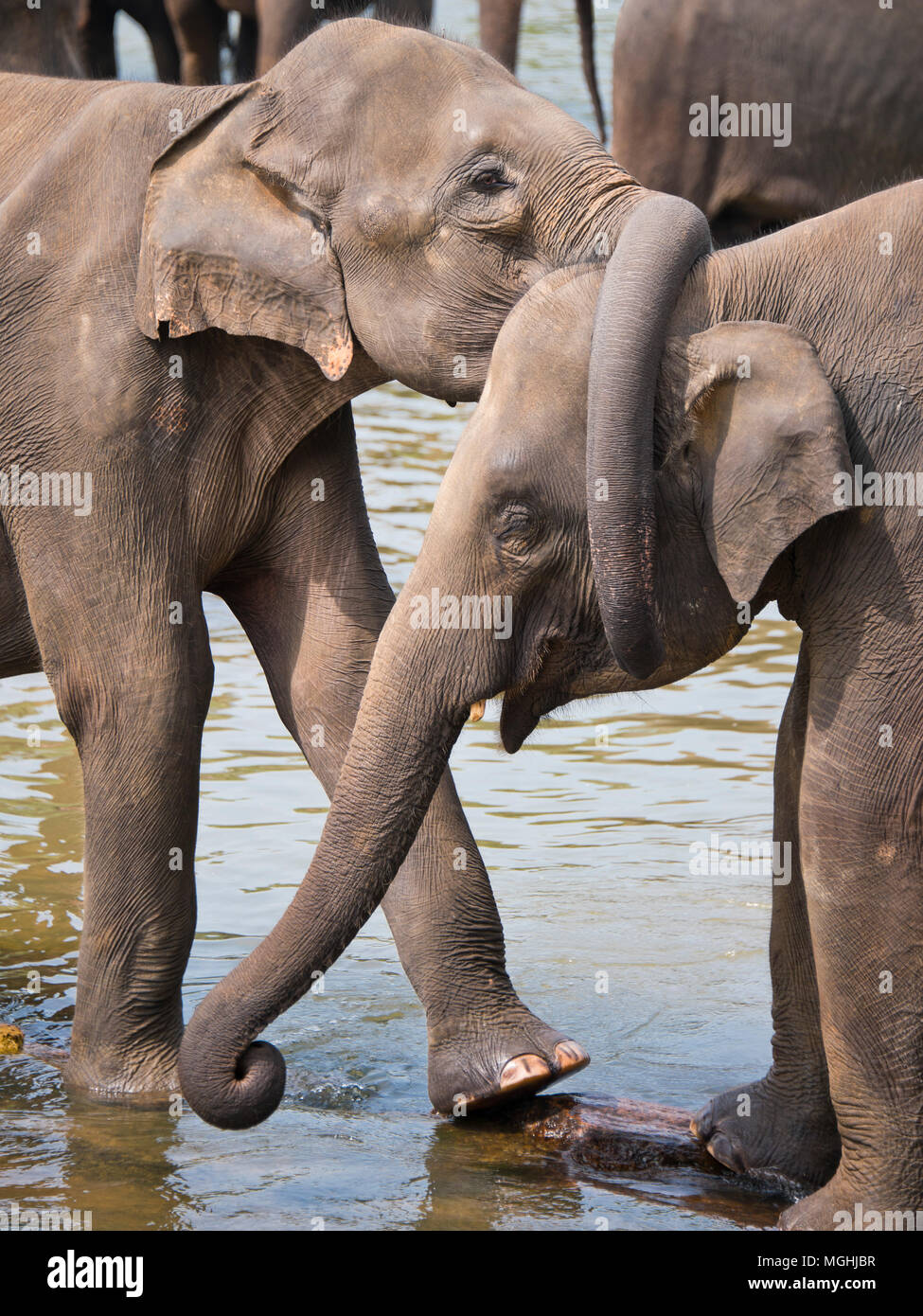 Vertical view of elephants twisting the trunks together in Sri Lanka. Stock Photohttps://www.alamy.com/image-license-details/?v=1https://www.alamy.com/vertical-view-of-elephants-twisting-the-trunks-together-in-sri-lanka-image182325803.html
Vertical view of elephants twisting the trunks together in Sri Lanka. Stock Photohttps://www.alamy.com/image-license-details/?v=1https://www.alamy.com/vertical-view-of-elephants-twisting-the-trunks-together-in-sri-lanka-image182325803.htmlRFMGHJBR–Vertical view of elephants twisting the trunks together in Sri Lanka.
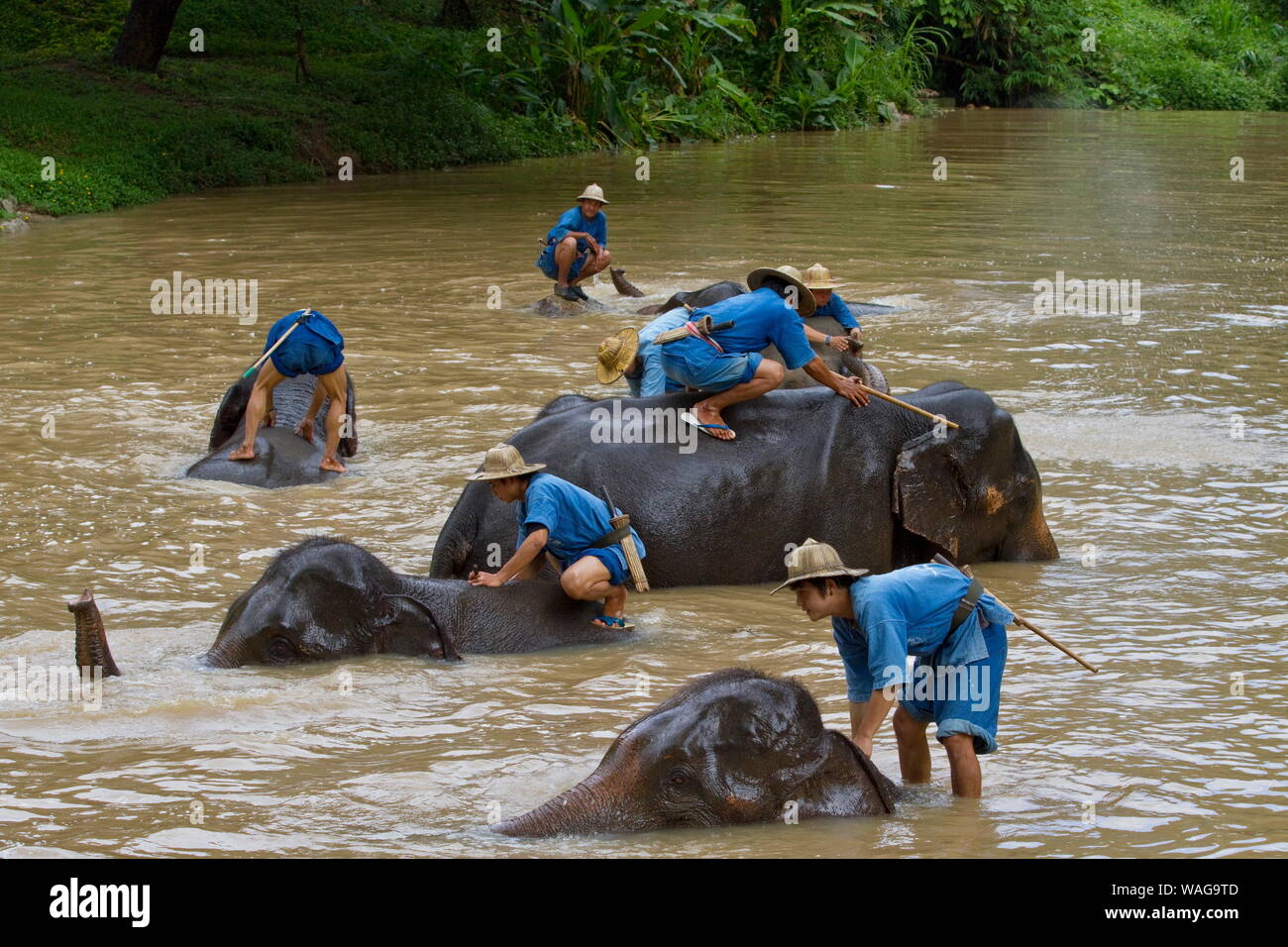 CHIANG MAI, THAILAND Stock Photohttps://www.alamy.com/image-license-details/?v=1https://www.alamy.com/chiang-mai-thailand-image264661053.html
CHIANG MAI, THAILAND Stock Photohttps://www.alamy.com/image-license-details/?v=1https://www.alamy.com/chiang-mai-thailand-image264661053.htmlRFWAG9TD–CHIANG MAI, THAILAND
 Elephants ( Loxodonta africana ) family with baby, Amboseli National Park, Kenya Stock Photohttps://www.alamy.com/image-license-details/?v=1https://www.alamy.com/elephants-loxodonta-africana-family-with-baby-amboseli-national-park-image7521200.html
Elephants ( Loxodonta africana ) family with baby, Amboseli National Park, Kenya Stock Photohttps://www.alamy.com/image-license-details/?v=1https://www.alamy.com/elephants-loxodonta-africana-family-with-baby-amboseli-national-park-image7521200.htmlRMACHKR1–Elephants ( Loxodonta africana ) family with baby, Amboseli National Park, Kenya
 A group of young Rock hyrax Procavia capensis Namibia March Stock Photohttps://www.alamy.com/image-license-details/?v=1https://www.alamy.com/stock-photo-a-group-of-young-rock-hyrax-procavia-capensis-namibia-march-137369173.html
A group of young Rock hyrax Procavia capensis Namibia March Stock Photohttps://www.alamy.com/image-license-details/?v=1https://www.alamy.com/stock-photo-a-group-of-young-rock-hyrax-procavia-capensis-namibia-march-137369173.htmlRMHYDKNW–A group of young Rock hyrax Procavia capensis Namibia March
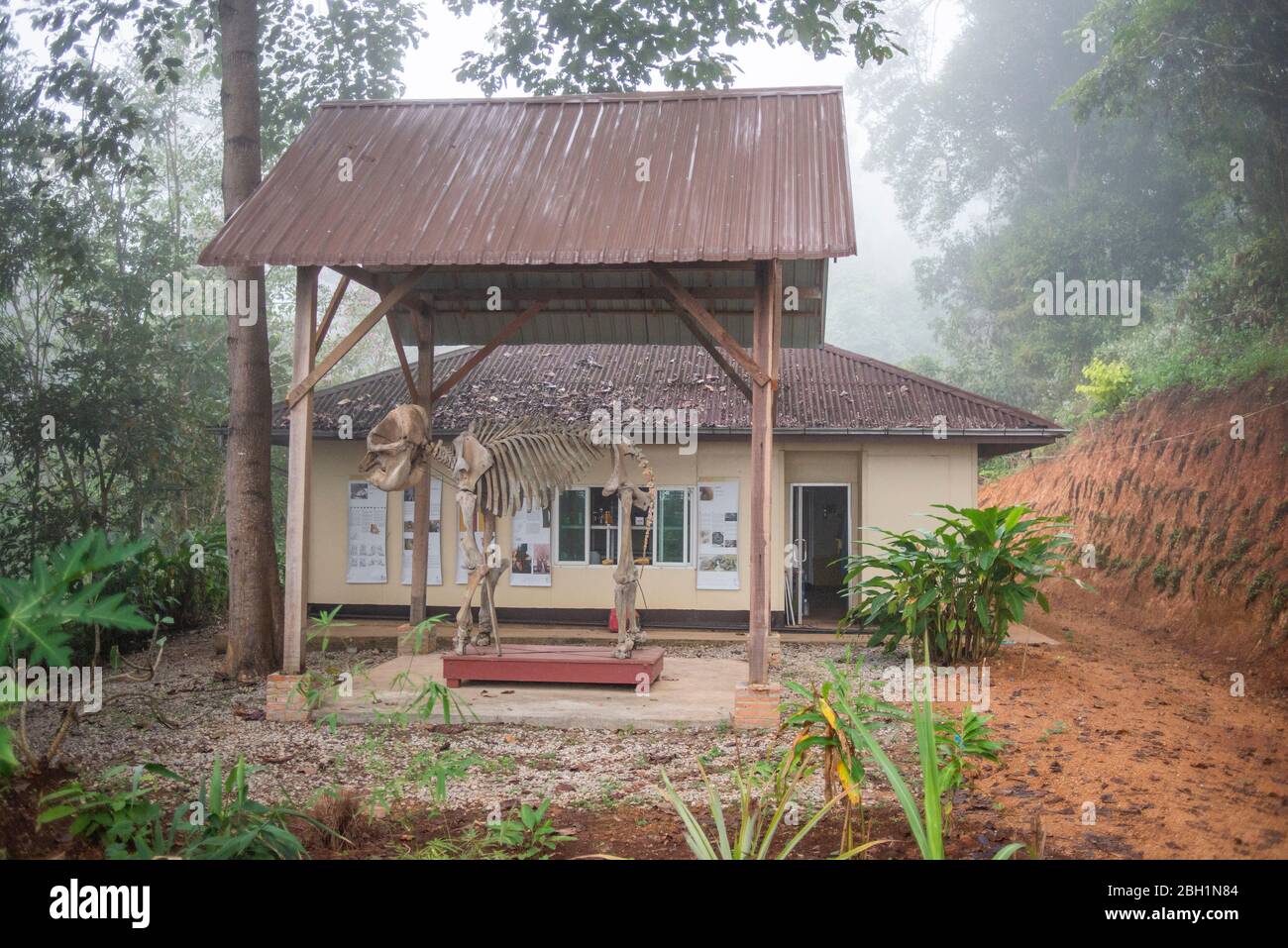 The skeleton of an elephant near the hospital in the Elephant Conservation Center, Sayaboury, Laos. The Elephant Conservation Center is the only organization in Laos who is interested in maintaining the population and breeding of elephants. They have the only elephant hospital and research laboratory in Laos. The Center was created in 2011, and now the team is protecting 29 elephants that had been working in the logging industry or mass tourism, and 530 hectares of forest around Nam Tien Lake in Sayaboury. Stock Photohttps://www.alamy.com/image-license-details/?v=1https://www.alamy.com/the-skeleton-of-an-elephant-near-the-hospital-in-the-elephant-conservation-center-sayaboury-laos-the-elephant-conservation-center-is-the-only-organization-in-laos-who-is-interested-in-maintaining-the-population-and-breeding-of-elephants-they-have-the-only-elephant-hospital-and-research-laboratory-in-laos-the-center-was-created-in-2011-and-now-the-team-is-protecting-29-elephants-that-had-been-working-in-the-logging-industry-or-mass-tourism-and-530-hectares-of-forest-around-nam-tien-lake-in-sayaboury-image354695156.html
The skeleton of an elephant near the hospital in the Elephant Conservation Center, Sayaboury, Laos. The Elephant Conservation Center is the only organization in Laos who is interested in maintaining the population and breeding of elephants. They have the only elephant hospital and research laboratory in Laos. The Center was created in 2011, and now the team is protecting 29 elephants that had been working in the logging industry or mass tourism, and 530 hectares of forest around Nam Tien Lake in Sayaboury. Stock Photohttps://www.alamy.com/image-license-details/?v=1https://www.alamy.com/the-skeleton-of-an-elephant-near-the-hospital-in-the-elephant-conservation-center-sayaboury-laos-the-elephant-conservation-center-is-the-only-organization-in-laos-who-is-interested-in-maintaining-the-population-and-breeding-of-elephants-they-have-the-only-elephant-hospital-and-research-laboratory-in-laos-the-center-was-created-in-2011-and-now-the-team-is-protecting-29-elephants-that-had-been-working-in-the-logging-industry-or-mass-tourism-and-530-hectares-of-forest-around-nam-tien-lake-in-sayaboury-image354695156.htmlRM2BH1N84–The skeleton of an elephant near the hospital in the Elephant Conservation Center, Sayaboury, Laos. The Elephant Conservation Center is the only organization in Laos who is interested in maintaining the population and breeding of elephants. They have the only elephant hospital and research laboratory in Laos. The Center was created in 2011, and now the team is protecting 29 elephants that had been working in the logging industry or mass tourism, and 530 hectares of forest around Nam Tien Lake in Sayaboury.
 Arrival elephants related to show Circus Krone, Amsterdam; a row of elephants Date: July 1, 1980 Location: Amsterdam, Noord-Holland Keywords: CIRCUSS, ELEPHANTS, arrivals Personal name : Circus Krone Stock Photohttps://www.alamy.com/image-license-details/?v=1https://www.alamy.com/arrival-elephants-related-to-show-circus-krone-amsterdam-a-row-of-elephants-date-july-1-1980-location-amsterdam-noord-holland-keywords-circuss-elephants-arrivals-personal-name-circus-krone-image340794671.html
Arrival elephants related to show Circus Krone, Amsterdam; a row of elephants Date: July 1, 1980 Location: Amsterdam, Noord-Holland Keywords: CIRCUSS, ELEPHANTS, arrivals Personal name : Circus Krone Stock Photohttps://www.alamy.com/image-license-details/?v=1https://www.alamy.com/arrival-elephants-related-to-show-circus-krone-amsterdam-a-row-of-elephants-date-july-1-1980-location-amsterdam-noord-holland-keywords-circuss-elephants-arrivals-personal-name-circus-krone-image340794671.htmlRM2APCF27–Arrival elephants related to show Circus Krone, Amsterdam; a row of elephants Date: July 1, 1980 Location: Amsterdam, Noord-Holland Keywords: CIRCUSS, ELEPHANTS, arrivals Personal name : Circus Krone
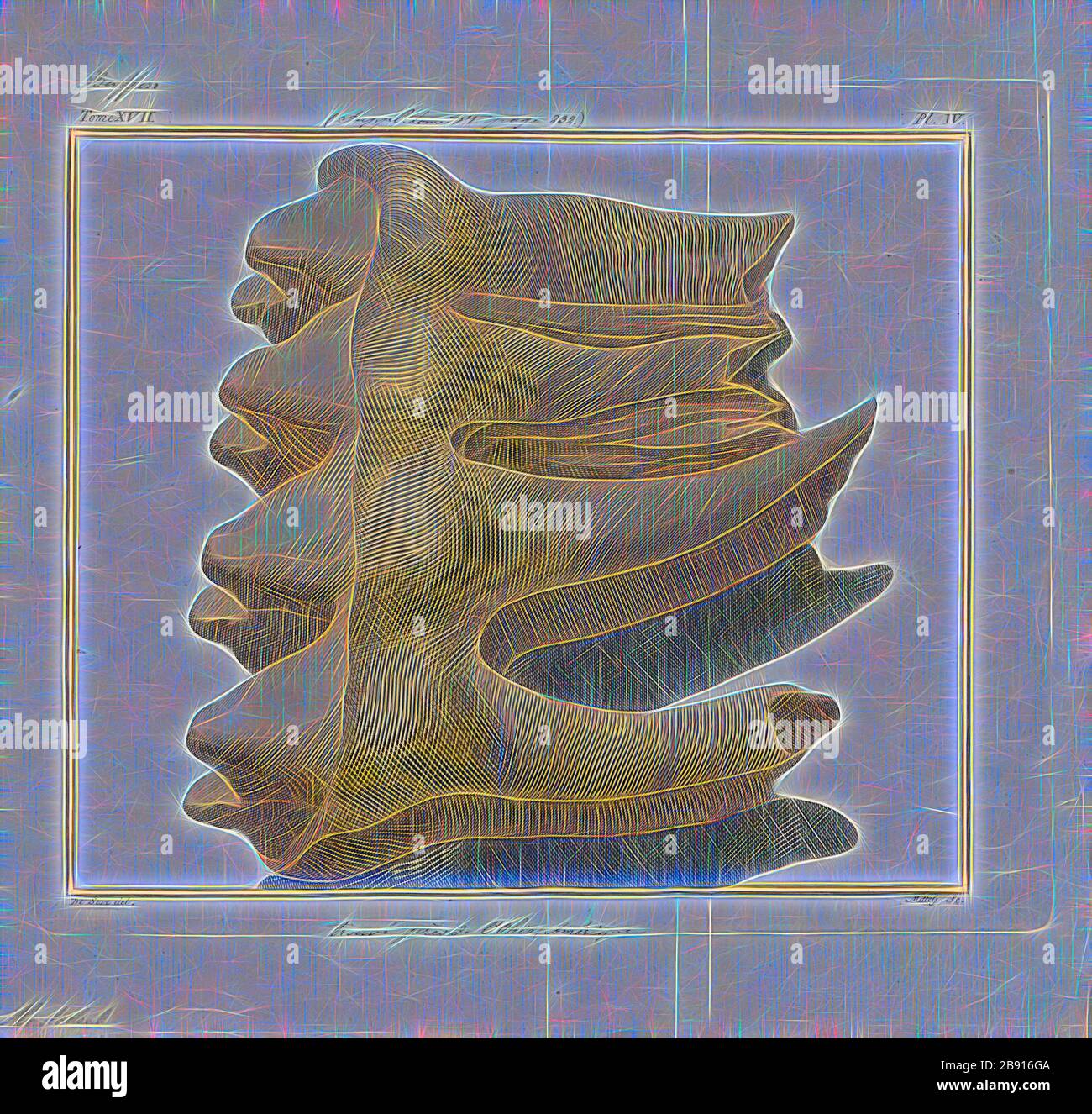 Mastodon spec., Print, Mastodons are any species of extinct proboscideans in the genus Mammut (family Mammutidae), distantly related to elephants, that inhabited North and Central America during the late Miocene or late Pliocene up to their extinction at the end of the Pleistocene 10, 000 to 11, 000 years ago. Mastodons lived in herds and were predominantly forest-dwelling animals that fed on a mixed diet obtained by browsing and grazing with a seasonal preference for browsing, similar to living elephants., molars, Reimagined by Gibon, design of warm cheerful glowing of brightness and light ra Stock Photohttps://www.alamy.com/image-license-details/?v=1https://www.alamy.com/mastodon-spec-print-mastodons-are-any-species-of-extinct-proboscideans-in-the-genus-mammut-family-mammutidae-distantly-related-to-elephants-that-inhabited-north-and-central-america-during-the-late-miocene-or-late-pliocene-up-to-their-extinction-at-the-end-of-the-pleistocene-10-000-to-11-000-years-ago-mastodons-lived-in-herds-and-were-predominantly-forest-dwelling-animals-that-fed-on-a-mixed-diet-obtained-by-browsing-and-grazing-with-a-seasonal-preference-for-browsing-similar-to-living-elephants-molars-reimagined-by-gibon-design-of-warm-cheerful-glowing-of-brightness-and-light-ra-image349766378.html
Mastodon spec., Print, Mastodons are any species of extinct proboscideans in the genus Mammut (family Mammutidae), distantly related to elephants, that inhabited North and Central America during the late Miocene or late Pliocene up to their extinction at the end of the Pleistocene 10, 000 to 11, 000 years ago. Mastodons lived in herds and were predominantly forest-dwelling animals that fed on a mixed diet obtained by browsing and grazing with a seasonal preference for browsing, similar to living elephants., molars, Reimagined by Gibon, design of warm cheerful glowing of brightness and light ra Stock Photohttps://www.alamy.com/image-license-details/?v=1https://www.alamy.com/mastodon-spec-print-mastodons-are-any-species-of-extinct-proboscideans-in-the-genus-mammut-family-mammutidae-distantly-related-to-elephants-that-inhabited-north-and-central-america-during-the-late-miocene-or-late-pliocene-up-to-their-extinction-at-the-end-of-the-pleistocene-10-000-to-11-000-years-ago-mastodons-lived-in-herds-and-were-predominantly-forest-dwelling-animals-that-fed-on-a-mixed-diet-obtained-by-browsing-and-grazing-with-a-seasonal-preference-for-browsing-similar-to-living-elephants-molars-reimagined-by-gibon-design-of-warm-cheerful-glowing-of-brightness-and-light-ra-image349766378.htmlRF2B916GA–Mastodon spec., Print, Mastodons are any species of extinct proboscideans in the genus Mammut (family Mammutidae), distantly related to elephants, that inhabited North and Central America during the late Miocene or late Pliocene up to their extinction at the end of the Pleistocene 10, 000 to 11, 000 years ago. Mastodons lived in herds and were predominantly forest-dwelling animals that fed on a mixed diet obtained by browsing and grazing with a seasonal preference for browsing, similar to living elephants., molars, Reimagined by Gibon, design of warm cheerful glowing of brightness and light ra
 Just Chilling - The African buffalo or Cape buffalo is a large African bovine. It is not closely related to the slightly larger Stock Photohttps://www.alamy.com/image-license-details/?v=1https://www.alamy.com/stock-photo-just-chilling-the-african-buffalo-or-cape-buffalo-is-a-large-african-119747962.html
Just Chilling - The African buffalo or Cape buffalo is a large African bovine. It is not closely related to the slightly larger Stock Photohttps://www.alamy.com/image-license-details/?v=1https://www.alamy.com/stock-photo-just-chilling-the-african-buffalo-or-cape-buffalo-is-a-large-african-119747962.htmlRFGXPYMX–Just Chilling - The African buffalo or Cape buffalo is a large African bovine. It is not closely related to the slightly larger
 Bildnummer: 58139109 Datum: 22.06.2012 Copyright: imago/Xinhua (120622) -- NAIROBI, June 22, 2012 (Xinhua) --The recovered ivories are displayed in Nairobi, Kenya, June 22, 2012. Since the beginning of the year, Kenya Wildlife Service have arrested and taken to court 1179 suspects and charged them with various wildlife-related offences. From January to May this year, a total of 133 elephants and 11 rhinos have been killed by poaching.(Xinhua/Ding Haitao) KENYA-NAIROBI-WILDLIFE PUBLICATIONxNOTxINxCHN Gesellschaft Kriminalität Beschlagnahme Waffen Elfenbein Wilderei x0x xst 2012 quadrat 5 Stock Photohttps://www.alamy.com/image-license-details/?v=1https://www.alamy.com/bildnummer-58139109-datum-22062012-copyright-imagoxinhua-120622-nairobi-june-22-2012-xinhua-the-recovered-ivories-are-displayed-in-nairobi-kenya-june-22-2012-since-the-beginning-of-the-year-kenya-wildlife-service-have-arrested-and-taken-to-court-1179-suspects-and-charged-them-with-various-wildlife-related-offences-from-january-to-may-this-year-a-total-of-133-elephants-and-11-rhinos-have-been-killed-by-poachingxinhuading-haitao-kenya-nairobi-wildlife-publicationxnotxinxchn-gesellschaft-kriminalitt-beschlagnahme-waffen-elfenbein-wilderei-x0x-xst-2012-quadrat-5-image562920791.html
Bildnummer: 58139109 Datum: 22.06.2012 Copyright: imago/Xinhua (120622) -- NAIROBI, June 22, 2012 (Xinhua) --The recovered ivories are displayed in Nairobi, Kenya, June 22, 2012. Since the beginning of the year, Kenya Wildlife Service have arrested and taken to court 1179 suspects and charged them with various wildlife-related offences. From January to May this year, a total of 133 elephants and 11 rhinos have been killed by poaching.(Xinhua/Ding Haitao) KENYA-NAIROBI-WILDLIFE PUBLICATIONxNOTxINxCHN Gesellschaft Kriminalität Beschlagnahme Waffen Elfenbein Wilderei x0x xst 2012 quadrat 5 Stock Photohttps://www.alamy.com/image-license-details/?v=1https://www.alamy.com/bildnummer-58139109-datum-22062012-copyright-imagoxinhua-120622-nairobi-june-22-2012-xinhua-the-recovered-ivories-are-displayed-in-nairobi-kenya-june-22-2012-since-the-beginning-of-the-year-kenya-wildlife-service-have-arrested-and-taken-to-court-1179-suspects-and-charged-them-with-various-wildlife-related-offences-from-january-to-may-this-year-a-total-of-133-elephants-and-11-rhinos-have-been-killed-by-poachingxinhuading-haitao-kenya-nairobi-wildlife-publicationxnotxinxchn-gesellschaft-kriminalitt-beschlagnahme-waffen-elfenbein-wilderei-x0x-xst-2012-quadrat-5-image562920791.htmlRM2RKR75Y–Bildnummer: 58139109 Datum: 22.06.2012 Copyright: imago/Xinhua (120622) -- NAIROBI, June 22, 2012 (Xinhua) --The recovered ivories are displayed in Nairobi, Kenya, June 22, 2012. Since the beginning of the year, Kenya Wildlife Service have arrested and taken to court 1179 suspects and charged them with various wildlife-related offences. From January to May this year, a total of 133 elephants and 11 rhinos have been killed by poaching.(Xinhua/Ding Haitao) KENYA-NAIROBI-WILDLIFE PUBLICATIONxNOTxINxCHN Gesellschaft Kriminalität Beschlagnahme Waffen Elfenbein Wilderei x0x xst 2012 quadrat 5
 Mastodon spec., Print, Mastodons are any species of extinct proboscideans in the genus Mammut (family Mammutidae), distantly related to elephants, that inhabited North and Central America during the late Miocene or late Pliocene up to their extinction at the end of the Pleistocene 10, 000 to 11, 000 years ago. Mastodons lived in herds and were predominantly forest-dwelling animals that fed on a mixed diet obtained by browsing and grazing with a seasonal preference for browsing, similar to living elephants., molars Stock Photohttps://www.alamy.com/image-license-details/?v=1https://www.alamy.com/mastodon-spec-print-mastodons-are-any-species-of-extinct-proboscideans-in-the-genus-mammut-family-mammutidae-distantly-related-to-elephants-that-inhabited-north-and-central-america-during-the-late-miocene-or-late-pliocene-up-to-their-extinction-at-the-end-of-the-pleistocene-10-000-to-11-000-years-ago-mastodons-lived-in-herds-and-were-predominantly-forest-dwelling-animals-that-fed-on-a-mixed-diet-obtained-by-browsing-and-grazing-with-a-seasonal-preference-for-browsing-similar-to-living-elephants-molars-image328690995.html
Mastodon spec., Print, Mastodons are any species of extinct proboscideans in the genus Mammut (family Mammutidae), distantly related to elephants, that inhabited North and Central America during the late Miocene or late Pliocene up to their extinction at the end of the Pleistocene 10, 000 to 11, 000 years ago. Mastodons lived in herds and were predominantly forest-dwelling animals that fed on a mixed diet obtained by browsing and grazing with a seasonal preference for browsing, similar to living elephants., molars Stock Photohttps://www.alamy.com/image-license-details/?v=1https://www.alamy.com/mastodon-spec-print-mastodons-are-any-species-of-extinct-proboscideans-in-the-genus-mammut-family-mammutidae-distantly-related-to-elephants-that-inhabited-north-and-central-america-during-the-late-miocene-or-late-pliocene-up-to-their-extinction-at-the-end-of-the-pleistocene-10-000-to-11-000-years-ago-mastodons-lived-in-herds-and-were-predominantly-forest-dwelling-animals-that-fed-on-a-mixed-diet-obtained-by-browsing-and-grazing-with-a-seasonal-preference-for-browsing-similar-to-living-elephants-molars-image328690995.htmlRM2A2N4M3–Mastodon spec., Print, Mastodons are any species of extinct proboscideans in the genus Mammut (family Mammutidae), distantly related to elephants, that inhabited North and Central America during the late Miocene or late Pliocene up to their extinction at the end of the Pleistocene 10, 000 to 11, 000 years ago. Mastodons lived in herds and were predominantly forest-dwelling animals that fed on a mixed diet obtained by browsing and grazing with a seasonal preference for browsing, similar to living elephants., molars
 The Royal Elephant National Museum in Dusit Park in Bangkok Thailand Once the stables for the royal elephants the building now houses a museum displaying paraphernalia related to the royal elephants Stock Photohttps://www.alamy.com/image-license-details/?v=1https://www.alamy.com/stock-photo-the-royal-elephant-national-museum-in-dusit-park-in-bangkok-thailand-10010585.html
The Royal Elephant National Museum in Dusit Park in Bangkok Thailand Once the stables for the royal elephants the building now houses a museum displaying paraphernalia related to the royal elephants Stock Photohttps://www.alamy.com/image-license-details/?v=1https://www.alamy.com/stock-photo-the-royal-elephant-national-museum-in-dusit-park-in-bangkok-thailand-10010585.htmlRMA0JM2J–The Royal Elephant National Museum in Dusit Park in Bangkok Thailand Once the stables for the royal elephants the building now houses a museum displaying paraphernalia related to the royal elephants
 November 2017. Elephants walking down the main street in Sauraha is common place -- and happens several times a day, everyday. Sauraha's economy is dominated by tourism related to the nearby Chitwan National Park where elephants are used for giving rides to see rhinoceroses and tigers. Sauraha, Chitwan District, Nepal. Stock Photohttps://www.alamy.com/image-license-details/?v=1https://www.alamy.com/november-2017-elephants-walking-down-the-main-street-in-sauraha-is-common-place-and-happens-several-times-a-day-everyday-saurahas-economy-is-dominated-by-tourism-related-to-the-nearby-chitwan-national-park-where-elephants-are-used-for-giving-rides-to-see-rhinoceroses-and-tigers-sauraha-chitwan-district-nepal-image451163117.html
November 2017. Elephants walking down the main street in Sauraha is common place -- and happens several times a day, everyday. Sauraha's economy is dominated by tourism related to the nearby Chitwan National Park where elephants are used for giving rides to see rhinoceroses and tigers. Sauraha, Chitwan District, Nepal. Stock Photohttps://www.alamy.com/image-license-details/?v=1https://www.alamy.com/november-2017-elephants-walking-down-the-main-street-in-sauraha-is-common-place-and-happens-several-times-a-day-everyday-saurahas-economy-is-dominated-by-tourism-related-to-the-nearby-chitwan-national-park-where-elephants-are-used-for-giving-rides-to-see-rhinoceroses-and-tigers-sauraha-chitwan-district-nepal-image451163117.htmlRM2H6074D–November 2017. Elephants walking down the main street in Sauraha is common place -- and happens several times a day, everyday. Sauraha's economy is dominated by tourism related to the nearby Chitwan National Park where elephants are used for giving rides to see rhinoceroses and tigers. Sauraha, Chitwan District, Nepal.
 Vintage engraving of Nature, Mammals, Elephants. Pictorial Museum of Animated Nature Stock Photohttps://www.alamy.com/image-license-details/?v=1https://www.alamy.com/vintage-engraving-of-nature-mammals-elephants-pictorial-museum-of-animated-nature-image328645540.html
Vintage engraving of Nature, Mammals, Elephants. Pictorial Museum of Animated Nature Stock Photohttps://www.alamy.com/image-license-details/?v=1https://www.alamy.com/vintage-engraving-of-nature-mammals-elephants-pictorial-museum-of-animated-nature-image328645540.htmlRM2A2K2MM–Vintage engraving of Nature, Mammals, Elephants. Pictorial Museum of Animated Nature
 Samut Prakan Province, Thailand. 2nd Jan, 2022. Thailand men's national football team (War Elephants) players With related parties arriving at Suvarnabhumi Airport, Samut Prakan Province, Thailand, on 02 January 2022 after winning the ASEAN Football Federation Championship 2020 (AFF Suzuki Cup 2020) successfully. (Credit Image: © Teera Noisakran/Pacific Press via ZUMA Press Wire) Stock Photohttps://www.alamy.com/image-license-details/?v=1https://www.alamy.com/samut-prakan-province-thailand-2nd-jan-2022-thailand-mens-national-football-team-war-elephants-players-with-related-parties-arriving-at-suvarnabhumi-airport-samut-prakan-province-thailand-on-02-january-2022-after-winning-the-asean-football-federation-championship-2020-aff-suzuki-cup-2020-successfully-credit-image-teera-noisakranpacific-press-via-zuma-press-wire-image455516103.html
Samut Prakan Province, Thailand. 2nd Jan, 2022. Thailand men's national football team (War Elephants) players With related parties arriving at Suvarnabhumi Airport, Samut Prakan Province, Thailand, on 02 January 2022 after winning the ASEAN Football Federation Championship 2020 (AFF Suzuki Cup 2020) successfully. (Credit Image: © Teera Noisakran/Pacific Press via ZUMA Press Wire) Stock Photohttps://www.alamy.com/image-license-details/?v=1https://www.alamy.com/samut-prakan-province-thailand-2nd-jan-2022-thailand-mens-national-football-team-war-elephants-players-with-related-parties-arriving-at-suvarnabhumi-airport-samut-prakan-province-thailand-on-02-january-2022-after-winning-the-asean-football-federation-championship-2020-aff-suzuki-cup-2020-successfully-credit-image-teera-noisakranpacific-press-via-zuma-press-wire-image455516103.htmlRM2HD2FC7–Samut Prakan Province, Thailand. 2nd Jan, 2022. Thailand men's national football team (War Elephants) players With related parties arriving at Suvarnabhumi Airport, Samut Prakan Province, Thailand, on 02 January 2022 after winning the ASEAN Football Federation Championship 2020 (AFF Suzuki Cup 2020) successfully. (Credit Image: © Teera Noisakran/Pacific Press via ZUMA Press Wire)
 Two adorable female Asian Elephants: playful interaction between family members of these beautiful, intelligent creatures at Chester Zoo in the UK Stock Photohttps://www.alamy.com/image-license-details/?v=1https://www.alamy.com/two-adorable-female-asian-elephants-playful-interaction-between-family-members-of-these-beautiful-intelligent-creatures-at-chester-zoo-in-the-uk-image364421580.html
Two adorable female Asian Elephants: playful interaction between family members of these beautiful, intelligent creatures at Chester Zoo in the UK Stock Photohttps://www.alamy.com/image-license-details/?v=1https://www.alamy.com/two-adorable-female-asian-elephants-playful-interaction-between-family-members-of-these-beautiful-intelligent-creatures-at-chester-zoo-in-the-uk-image364421580.htmlRF2C4TRCC–Two adorable female Asian Elephants: playful interaction between family members of these beautiful, intelligent creatures at Chester Zoo in the UK
 RELEASE DATE: August 20, 1990 MOVIE TITLE: Ivory Hunters aka Last Elephants STUDIO: Turner Pictures DIRECTOR: Joseph Sargent PLOT: An author discovers that his missing research assistant's disappearance may be related to illegal trade in ivory tusks. PICTURED: JOHN LITHGOW as Robert Carter and ISABELLA ROSSELLINI as Maria DiConti. (Credit Image: c Turner Pictures/Entertainment Pictures) Stock Photohttps://www.alamy.com/image-license-details/?v=1https://www.alamy.com/stock-photo-release-date-august-20-1990-movie-title-ivory-hunters-aka-last-elephants-90133732.html
RELEASE DATE: August 20, 1990 MOVIE TITLE: Ivory Hunters aka Last Elephants STUDIO: Turner Pictures DIRECTOR: Joseph Sargent PLOT: An author discovers that his missing research assistant's disappearance may be related to illegal trade in ivory tusks. PICTURED: JOHN LITHGOW as Robert Carter and ISABELLA ROSSELLINI as Maria DiConti. (Credit Image: c Turner Pictures/Entertainment Pictures) Stock Photohttps://www.alamy.com/image-license-details/?v=1https://www.alamy.com/stock-photo-release-date-august-20-1990-movie-title-ivory-hunters-aka-last-elephants-90133732.htmlRMF6HXDT–RELEASE DATE: August 20, 1990 MOVIE TITLE: Ivory Hunters aka Last Elephants STUDIO: Turner Pictures DIRECTOR: Joseph Sargent PLOT: An author discovers that his missing research assistant's disappearance may be related to illegal trade in ivory tusks. PICTURED: JOHN LITHGOW as Robert Carter and ISABELLA ROSSELLINI as Maria DiConti. (Credit Image: c Turner Pictures/Entertainment Pictures)
 Samut Prakan Province, Thailand. 02nd Jan, 2022. Thailand men's national football team (War Elephants) players With related parties arriving at Suvarnabhumi Airport, Samut Prakan Province, Thailand, on 02 January 2022 after winning the ASEAN Football Federation Championship 2020 (AFF Suzuki Cup 2020) successfully. (Photo by Teera Noisakran/Pacific Press/Sipa USA) Credit: Sipa USA/Alamy Live News Stock Photohttps://www.alamy.com/image-license-details/?v=1https://www.alamy.com/samut-prakan-province-thailand-02nd-jan-2022-thailand-mens-national-football-team-war-elephants-players-with-related-parties-arriving-at-suvarnabhumi-airport-samut-prakan-province-thailand-on-02-january-2022-after-winning-the-asean-football-federation-championship-2020-aff-suzuki-cup-2020-successfully-photo-by-teera-noisakranpacific-presssipa-usa-credit-sipa-usaalamy-live-news-image455563446.html
Samut Prakan Province, Thailand. 02nd Jan, 2022. Thailand men's national football team (War Elephants) players With related parties arriving at Suvarnabhumi Airport, Samut Prakan Province, Thailand, on 02 January 2022 after winning the ASEAN Football Federation Championship 2020 (AFF Suzuki Cup 2020) successfully. (Photo by Teera Noisakran/Pacific Press/Sipa USA) Credit: Sipa USA/Alamy Live News Stock Photohttps://www.alamy.com/image-license-details/?v=1https://www.alamy.com/samut-prakan-province-thailand-02nd-jan-2022-thailand-mens-national-football-team-war-elephants-players-with-related-parties-arriving-at-suvarnabhumi-airport-samut-prakan-province-thailand-on-02-january-2022-after-winning-the-asean-football-federation-championship-2020-aff-suzuki-cup-2020-successfully-photo-by-teera-noisakranpacific-presssipa-usa-credit-sipa-usaalamy-live-news-image455563446.htmlRM2HD4KR2–Samut Prakan Province, Thailand. 02nd Jan, 2022. Thailand men's national football team (War Elephants) players With related parties arriving at Suvarnabhumi Airport, Samut Prakan Province, Thailand, on 02 January 2022 after winning the ASEAN Football Federation Championship 2020 (AFF Suzuki Cup 2020) successfully. (Photo by Teera Noisakran/Pacific Press/Sipa USA) Credit: Sipa USA/Alamy Live News
 A baby elephant is protected by the whole group, with the matriarch infront. Stock Photohttps://www.alamy.com/image-license-details/?v=1https://www.alamy.com/stock-photo-a-baby-elephant-is-protected-by-the-whole-group-with-the-matriarch-79072180.html
A baby elephant is protected by the whole group, with the matriarch infront. Stock Photohttps://www.alamy.com/image-license-details/?v=1https://www.alamy.com/stock-photo-a-baby-elephant-is-protected-by-the-whole-group-with-the-matriarch-79072180.htmlRFEGJ1AC–A baby elephant is protected by the whole group, with the matriarch infront.
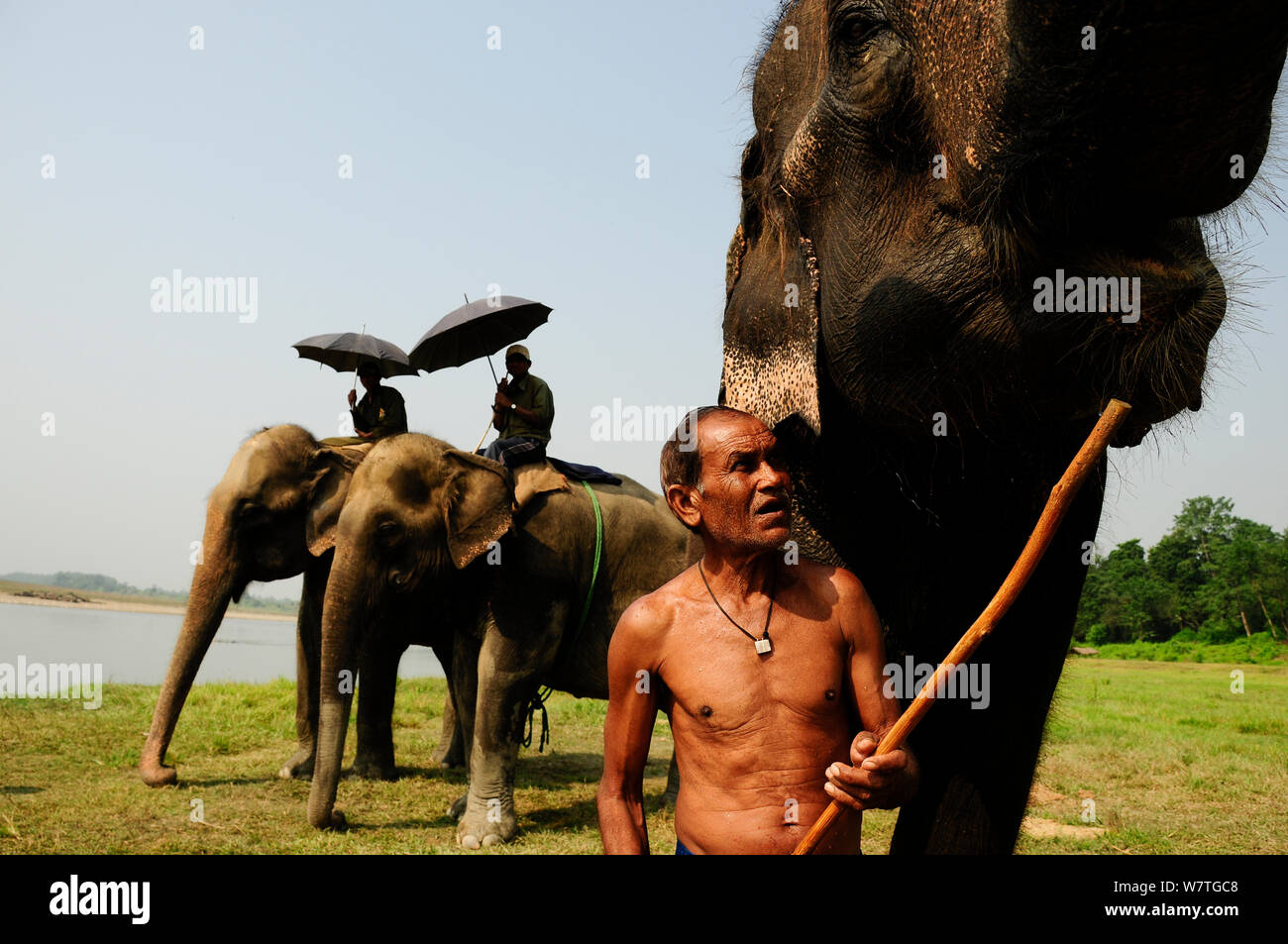 Domestic Asian elephants (Elephas maximas) used for riding safaris with their keepers, Royal Chitwan National Park, Nepal. Stock Photohttps://www.alamy.com/image-license-details/?v=1https://www.alamy.com/domestic-asian-elephants-elephas-maximas-used-for-riding-safaris-with-their-keepers-royal-chitwan-national-park-nepal-image262997848.html
Domestic Asian elephants (Elephas maximas) used for riding safaris with their keepers, Royal Chitwan National Park, Nepal. Stock Photohttps://www.alamy.com/image-license-details/?v=1https://www.alamy.com/domestic-asian-elephants-elephas-maximas-used-for-riding-safaris-with-their-keepers-royal-chitwan-national-park-nepal-image262997848.htmlRMW7TGC8–Domestic Asian elephants (Elephas maximas) used for riding safaris with their keepers, Royal Chitwan National Park, Nepal.
 Vintage illustration Victorian animal trainer performing tricks with elephants, 19th Century Stock Photohttps://www.alamy.com/image-license-details/?v=1https://www.alamy.com/vintage-illustration-victorian-animal-trainer-performing-tricks-with-elephants-19th-century-image439282921.html
Vintage illustration Victorian animal trainer performing tricks with elephants, 19th Century Stock Photohttps://www.alamy.com/image-license-details/?v=1https://www.alamy.com/vintage-illustration-victorian-animal-trainer-performing-tricks-with-elephants-19th-century-image439282921.htmlRM2GEK1RN–Vintage illustration Victorian animal trainer performing tricks with elephants, 19th Century
 CHIANG MAI, THAILAND Stock Photohttps://www.alamy.com/image-license-details/?v=1https://www.alamy.com/chiang-mai-thailand-image264661110.html
CHIANG MAI, THAILAND Stock Photohttps://www.alamy.com/image-license-details/?v=1https://www.alamy.com/chiang-mai-thailand-image264661110.htmlRFWAG9XE–CHIANG MAI, THAILAND
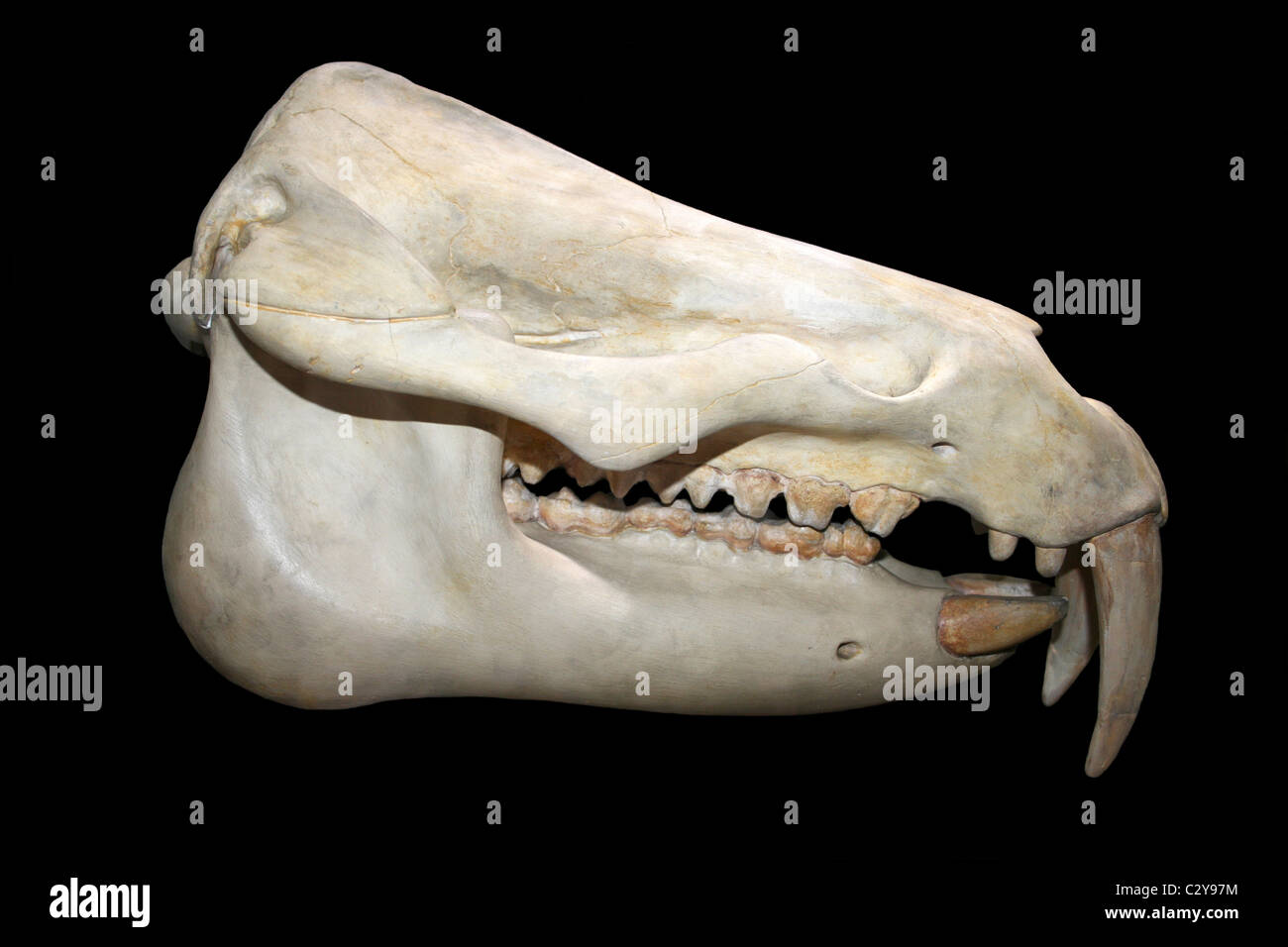 Skull Of A Moeritherium, A Prehistoric Mammal Related To The Elephant That Lived During The Eocene Epoch Stock Photohttps://www.alamy.com/image-license-details/?v=1https://www.alamy.com/stock-photo-skull-of-a-moeritherium-a-prehistoric-mammal-related-to-the-elephant-36250024.html
Skull Of A Moeritherium, A Prehistoric Mammal Related To The Elephant That Lived During The Eocene Epoch Stock Photohttps://www.alamy.com/image-license-details/?v=1https://www.alamy.com/stock-photo-skull-of-a-moeritherium-a-prehistoric-mammal-related-to-the-elephant-36250024.htmlRMC2Y97M–Skull Of A Moeritherium, A Prehistoric Mammal Related To The Elephant That Lived During The Eocene Epoch
 A group of young Rock hyrax Procavia capensis Namibia March Stock Photohttps://www.alamy.com/image-license-details/?v=1https://www.alamy.com/stock-photo-a-group-of-young-rock-hyrax-procavia-capensis-namibia-march-138934413.html
A group of young Rock hyrax Procavia capensis Namibia March Stock Photohttps://www.alamy.com/image-license-details/?v=1https://www.alamy.com/stock-photo-a-group-of-young-rock-hyrax-procavia-capensis-namibia-march-138934413.htmlRFJ21079–A group of young Rock hyrax Procavia capensis Namibia March
 The skeleton of an elephant near the hospital in the Elephant Conservation Center, Sayaboury, Laos. The Elephant Conservation Center is the only organization in Laos who is interested in maintaining the population and breeding of elephants. They have the only elephant hospital and research laboratory in Laos. The Center was created in 2011, and now the team is protecting 29 elephants that had been working in the logging industry or mass tourism, and 530 hectares of forest around Nam Tien Lake in Sayaboury. Stock Photohttps://www.alamy.com/image-license-details/?v=1https://www.alamy.com/the-skeleton-of-an-elephant-near-the-hospital-in-the-elephant-conservation-center-sayaboury-laos-the-elephant-conservation-center-is-the-only-organization-in-laos-who-is-interested-in-maintaining-the-population-and-breeding-of-elephants-they-have-the-only-elephant-hospital-and-research-laboratory-in-laos-the-center-was-created-in-2011-and-now-the-team-is-protecting-29-elephants-that-had-been-working-in-the-logging-industry-or-mass-tourism-and-530-hectares-of-forest-around-nam-tien-lake-in-sayaboury-image354695153.html
The skeleton of an elephant near the hospital in the Elephant Conservation Center, Sayaboury, Laos. The Elephant Conservation Center is the only organization in Laos who is interested in maintaining the population and breeding of elephants. They have the only elephant hospital and research laboratory in Laos. The Center was created in 2011, and now the team is protecting 29 elephants that had been working in the logging industry or mass tourism, and 530 hectares of forest around Nam Tien Lake in Sayaboury. Stock Photohttps://www.alamy.com/image-license-details/?v=1https://www.alamy.com/the-skeleton-of-an-elephant-near-the-hospital-in-the-elephant-conservation-center-sayaboury-laos-the-elephant-conservation-center-is-the-only-organization-in-laos-who-is-interested-in-maintaining-the-population-and-breeding-of-elephants-they-have-the-only-elephant-hospital-and-research-laboratory-in-laos-the-center-was-created-in-2011-and-now-the-team-is-protecting-29-elephants-that-had-been-working-in-the-logging-industry-or-mass-tourism-and-530-hectares-of-forest-around-nam-tien-lake-in-sayaboury-image354695153.htmlRM2BH1N81–The skeleton of an elephant near the hospital in the Elephant Conservation Center, Sayaboury, Laos. The Elephant Conservation Center is the only organization in Laos who is interested in maintaining the population and breeding of elephants. They have the only elephant hospital and research laboratory in Laos. The Center was created in 2011, and now the team is protecting 29 elephants that had been working in the logging industry or mass tourism, and 530 hectares of forest around Nam Tien Lake in Sayaboury.
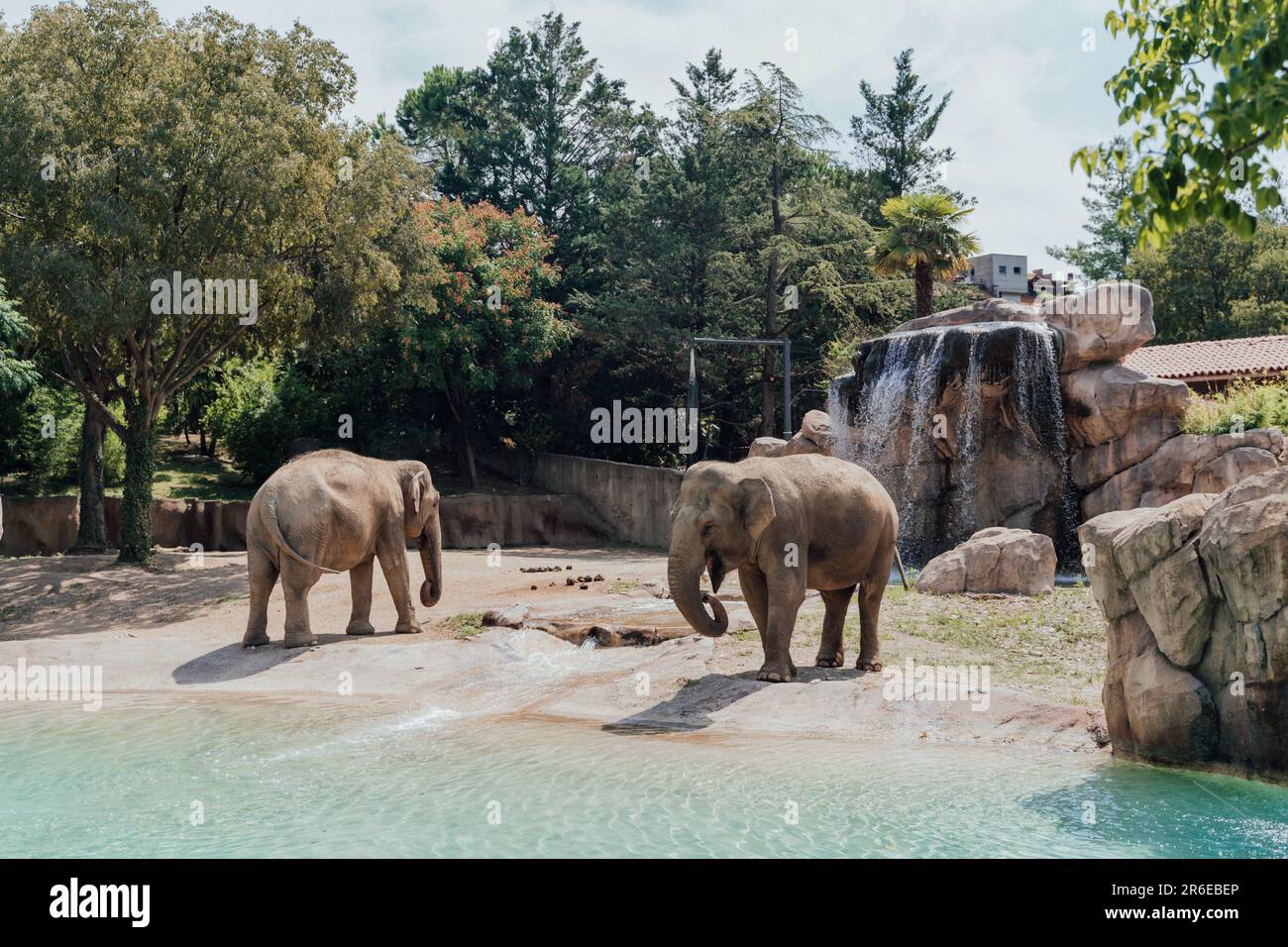 Open enclosures with elephants at Bergamo Zoo, Italy Stock Photohttps://www.alamy.com/image-license-details/?v=1https://www.alamy.com/open-enclosures-with-elephants-at-bergamo-zoo-italy-image554736078.html
Open enclosures with elephants at Bergamo Zoo, Italy Stock Photohttps://www.alamy.com/image-license-details/?v=1https://www.alamy.com/open-enclosures-with-elephants-at-bergamo-zoo-italy-image554736078.htmlRF2R6EBEP–Open enclosures with elephants at Bergamo Zoo, Italy
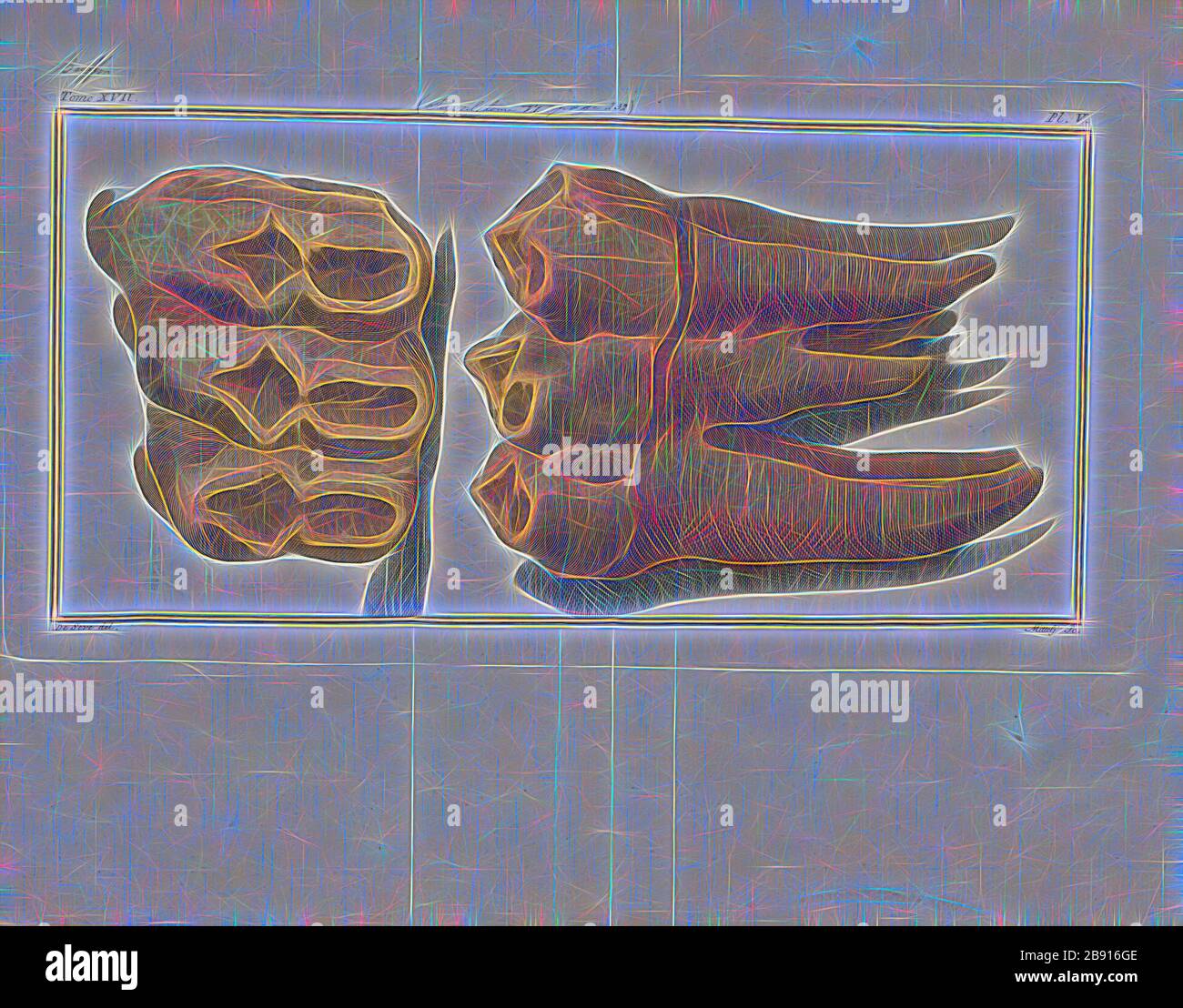 Mastodon spec., Print, Mastodons are any species of extinct proboscideans in the genus Mammut (family Mammutidae), distantly related to elephants, that inhabited North and Central America during the late Miocene or late Pliocene up to their extinction at the end of the Pleistocene 10, 000 to 11, 000 years ago. Mastodons lived in herds and were predominantly forest-dwelling animals that fed on a mixed diet obtained by browsing and grazing with a seasonal preference for browsing, similar to living elephants., molars, Reimagined by Gibon, design of warm cheerful glowing of brightness and light ra Stock Photohttps://www.alamy.com/image-license-details/?v=1https://www.alamy.com/mastodon-spec-print-mastodons-are-any-species-of-extinct-proboscideans-in-the-genus-mammut-family-mammutidae-distantly-related-to-elephants-that-inhabited-north-and-central-america-during-the-late-miocene-or-late-pliocene-up-to-their-extinction-at-the-end-of-the-pleistocene-10-000-to-11-000-years-ago-mastodons-lived-in-herds-and-were-predominantly-forest-dwelling-animals-that-fed-on-a-mixed-diet-obtained-by-browsing-and-grazing-with-a-seasonal-preference-for-browsing-similar-to-living-elephants-molars-reimagined-by-gibon-design-of-warm-cheerful-glowing-of-brightness-and-light-ra-image349766382.html
Mastodon spec., Print, Mastodons are any species of extinct proboscideans in the genus Mammut (family Mammutidae), distantly related to elephants, that inhabited North and Central America during the late Miocene or late Pliocene up to their extinction at the end of the Pleistocene 10, 000 to 11, 000 years ago. Mastodons lived in herds and were predominantly forest-dwelling animals that fed on a mixed diet obtained by browsing and grazing with a seasonal preference for browsing, similar to living elephants., molars, Reimagined by Gibon, design of warm cheerful glowing of brightness and light ra Stock Photohttps://www.alamy.com/image-license-details/?v=1https://www.alamy.com/mastodon-spec-print-mastodons-are-any-species-of-extinct-proboscideans-in-the-genus-mammut-family-mammutidae-distantly-related-to-elephants-that-inhabited-north-and-central-america-during-the-late-miocene-or-late-pliocene-up-to-their-extinction-at-the-end-of-the-pleistocene-10-000-to-11-000-years-ago-mastodons-lived-in-herds-and-were-predominantly-forest-dwelling-animals-that-fed-on-a-mixed-diet-obtained-by-browsing-and-grazing-with-a-seasonal-preference-for-browsing-similar-to-living-elephants-molars-reimagined-by-gibon-design-of-warm-cheerful-glowing-of-brightness-and-light-ra-image349766382.htmlRF2B916GE–Mastodon spec., Print, Mastodons are any species of extinct proboscideans in the genus Mammut (family Mammutidae), distantly related to elephants, that inhabited North and Central America during the late Miocene or late Pliocene up to their extinction at the end of the Pleistocene 10, 000 to 11, 000 years ago. Mastodons lived in herds and were predominantly forest-dwelling animals that fed on a mixed diet obtained by browsing and grazing with a seasonal preference for browsing, similar to living elephants., molars, Reimagined by Gibon, design of warm cheerful glowing of brightness and light ra
 Eating - The African buffalo or Cape buffalo is a large African bovine. It is not closely related to the slightly larger wild wa Stock Photohttps://www.alamy.com/image-license-details/?v=1https://www.alamy.com/stock-photo-eating-the-african-buffalo-or-cape-buffalo-is-a-large-african-bovine-119747887.html
Eating - The African buffalo or Cape buffalo is a large African bovine. It is not closely related to the slightly larger wild wa Stock Photohttps://www.alamy.com/image-license-details/?v=1https://www.alamy.com/stock-photo-eating-the-african-buffalo-or-cape-buffalo-is-a-large-african-bovine-119747887.htmlRFGXPYJ7–Eating - The African buffalo or Cape buffalo is a large African bovine. It is not closely related to the slightly larger wild wa
 Bildnummer: 58139112 Datum: 22.06.2012 Copyright: imago/Xinhua (120622) -- NAIROBI, June 22, 2012 (Xinhua) -- Soldiers display the ammunition seized from poachers in Nairobi, Kenya, June 22, 2012. Since the beginning of the year, Kenya Wildlife Service have arrested and taken to court 1179 suspects and charged them with various wildlife-related offences. From January to May this year, a total of 133 elephants and 11 rhinos have been killed by poaching.(Xinhua/Ding Haitao) KENYA-NAIROBI-WILDLIFE PUBLICATIONxNOTxINxCHN Gesellschaft Kriminalität Beschlagnahme Waffen Elfenbein Wilderei x0x xst 2 Stock Photohttps://www.alamy.com/image-license-details/?v=1https://www.alamy.com/bildnummer-58139112-datum-22062012-copyright-imagoxinhua-120622-nairobi-june-22-2012-xinhua-soldiers-display-the-ammunition-seized-from-poachers-in-nairobi-kenya-june-22-2012-since-the-beginning-of-the-year-kenya-wildlife-service-have-arrested-and-taken-to-court-1179-suspects-and-charged-them-with-various-wildlife-related-offences-from-january-to-may-this-year-a-total-of-133-elephants-and-11-rhinos-have-been-killed-by-poachingxinhuading-haitao-kenya-nairobi-wildlife-publicationxnotxinxchn-gesellschaft-kriminalitt-beschlagnahme-waffen-elfenbein-wilderei-x0x-xst-2-image562920758.html
Bildnummer: 58139112 Datum: 22.06.2012 Copyright: imago/Xinhua (120622) -- NAIROBI, June 22, 2012 (Xinhua) -- Soldiers display the ammunition seized from poachers in Nairobi, Kenya, June 22, 2012. Since the beginning of the year, Kenya Wildlife Service have arrested and taken to court 1179 suspects and charged them with various wildlife-related offences. From January to May this year, a total of 133 elephants and 11 rhinos have been killed by poaching.(Xinhua/Ding Haitao) KENYA-NAIROBI-WILDLIFE PUBLICATIONxNOTxINxCHN Gesellschaft Kriminalität Beschlagnahme Waffen Elfenbein Wilderei x0x xst 2 Stock Photohttps://www.alamy.com/image-license-details/?v=1https://www.alamy.com/bildnummer-58139112-datum-22062012-copyright-imagoxinhua-120622-nairobi-june-22-2012-xinhua-soldiers-display-the-ammunition-seized-from-poachers-in-nairobi-kenya-june-22-2012-since-the-beginning-of-the-year-kenya-wildlife-service-have-arrested-and-taken-to-court-1179-suspects-and-charged-them-with-various-wildlife-related-offences-from-january-to-may-this-year-a-total-of-133-elephants-and-11-rhinos-have-been-killed-by-poachingxinhuading-haitao-kenya-nairobi-wildlife-publicationxnotxinxchn-gesellschaft-kriminalitt-beschlagnahme-waffen-elfenbein-wilderei-x0x-xst-2-image562920758.htmlRM2RKR74P–Bildnummer: 58139112 Datum: 22.06.2012 Copyright: imago/Xinhua (120622) -- NAIROBI, June 22, 2012 (Xinhua) -- Soldiers display the ammunition seized from poachers in Nairobi, Kenya, June 22, 2012. Since the beginning of the year, Kenya Wildlife Service have arrested and taken to court 1179 suspects and charged them with various wildlife-related offences. From January to May this year, a total of 133 elephants and 11 rhinos have been killed by poaching.(Xinhua/Ding Haitao) KENYA-NAIROBI-WILDLIFE PUBLICATIONxNOTxINxCHN Gesellschaft Kriminalität Beschlagnahme Waffen Elfenbein Wilderei x0x xst 2
 Mastodon spec., Print, Mastodons are any species of extinct proboscideans in the genus Mammut (family Mammutidae), distantly related to elephants, that inhabited North and Central America during the late Miocene or late Pliocene up to their extinction at the end of the Pleistocene 10, 000 to 11, 000 years ago. Mastodons lived in herds and were predominantly forest-dwelling animals that fed on a mixed diet obtained by browsing and grazing with a seasonal preference for browsing, similar to living elephants., molars Stock Photohttps://www.alamy.com/image-license-details/?v=1https://www.alamy.com/mastodon-spec-print-mastodons-are-any-species-of-extinct-proboscideans-in-the-genus-mammut-family-mammutidae-distantly-related-to-elephants-that-inhabited-north-and-central-america-during-the-late-miocene-or-late-pliocene-up-to-their-extinction-at-the-end-of-the-pleistocene-10-000-to-11-000-years-ago-mastodons-lived-in-herds-and-were-predominantly-forest-dwelling-animals-that-fed-on-a-mixed-diet-obtained-by-browsing-and-grazing-with-a-seasonal-preference-for-browsing-similar-to-living-elephants-molars-image328690994.html
Mastodon spec., Print, Mastodons are any species of extinct proboscideans in the genus Mammut (family Mammutidae), distantly related to elephants, that inhabited North and Central America during the late Miocene or late Pliocene up to their extinction at the end of the Pleistocene 10, 000 to 11, 000 years ago. Mastodons lived in herds and were predominantly forest-dwelling animals that fed on a mixed diet obtained by browsing and grazing with a seasonal preference for browsing, similar to living elephants., molars Stock Photohttps://www.alamy.com/image-license-details/?v=1https://www.alamy.com/mastodon-spec-print-mastodons-are-any-species-of-extinct-proboscideans-in-the-genus-mammut-family-mammutidae-distantly-related-to-elephants-that-inhabited-north-and-central-america-during-the-late-miocene-or-late-pliocene-up-to-their-extinction-at-the-end-of-the-pleistocene-10-000-to-11-000-years-ago-mastodons-lived-in-herds-and-were-predominantly-forest-dwelling-animals-that-fed-on-a-mixed-diet-obtained-by-browsing-and-grazing-with-a-seasonal-preference-for-browsing-similar-to-living-elephants-molars-image328690994.htmlRM2A2N4M2–Mastodon spec., Print, Mastodons are any species of extinct proboscideans in the genus Mammut (family Mammutidae), distantly related to elephants, that inhabited North and Central America during the late Miocene or late Pliocene up to their extinction at the end of the Pleistocene 10, 000 to 11, 000 years ago. Mastodons lived in herds and were predominantly forest-dwelling animals that fed on a mixed diet obtained by browsing and grazing with a seasonal preference for browsing, similar to living elephants., molars
 The Royal Elephant National Museum in Dusit Park in Bangkok Thailand Once the stables for the royal elephants the building now houses a museum displaying paraphernalia related to the royal elephants Stock Photohttps://www.alamy.com/image-license-details/?v=1https://www.alamy.com/stock-photo-the-royal-elephant-national-museum-in-dusit-park-in-bangkok-thailand-10010583.html
The Royal Elephant National Museum in Dusit Park in Bangkok Thailand Once the stables for the royal elephants the building now houses a museum displaying paraphernalia related to the royal elephants Stock Photohttps://www.alamy.com/image-license-details/?v=1https://www.alamy.com/stock-photo-the-royal-elephant-national-museum-in-dusit-park-in-bangkok-thailand-10010583.htmlRMA0JM2G–The Royal Elephant National Museum in Dusit Park in Bangkok Thailand Once the stables for the royal elephants the building now houses a museum displaying paraphernalia related to the royal elephants
 November 2017. Elephants walking down the main street in Sauraha is common place -- and happens several times a day, everyday. Sauraha's economy is dominated by tourism related to the nearby Chitwan National Park where elephants are used for giving rides to see rhinoceroses and tigers. Sauraha, Chitwan District, Nepal. Stock Photohttps://www.alamy.com/image-license-details/?v=1https://www.alamy.com/november-2017-elephants-walking-down-the-main-street-in-sauraha-is-common-place-and-happens-several-times-a-day-everyday-saurahas-economy-is-dominated-by-tourism-related-to-the-nearby-chitwan-national-park-where-elephants-are-used-for-giving-rides-to-see-rhinoceroses-and-tigers-sauraha-chitwan-district-nepal-image451149572.html
November 2017. Elephants walking down the main street in Sauraha is common place -- and happens several times a day, everyday. Sauraha's economy is dominated by tourism related to the nearby Chitwan National Park where elephants are used for giving rides to see rhinoceroses and tigers. Sauraha, Chitwan District, Nepal. Stock Photohttps://www.alamy.com/image-license-details/?v=1https://www.alamy.com/november-2017-elephants-walking-down-the-main-street-in-sauraha-is-common-place-and-happens-several-times-a-day-everyday-saurahas-economy-is-dominated-by-tourism-related-to-the-nearby-chitwan-national-park-where-elephants-are-used-for-giving-rides-to-see-rhinoceroses-and-tigers-sauraha-chitwan-district-nepal-image451149572.htmlRM2H5YHTM–November 2017. Elephants walking down the main street in Sauraha is common place -- and happens several times a day, everyday. Sauraha's economy is dominated by tourism related to the nearby Chitwan National Park where elephants are used for giving rides to see rhinoceroses and tigers. Sauraha, Chitwan District, Nepal.
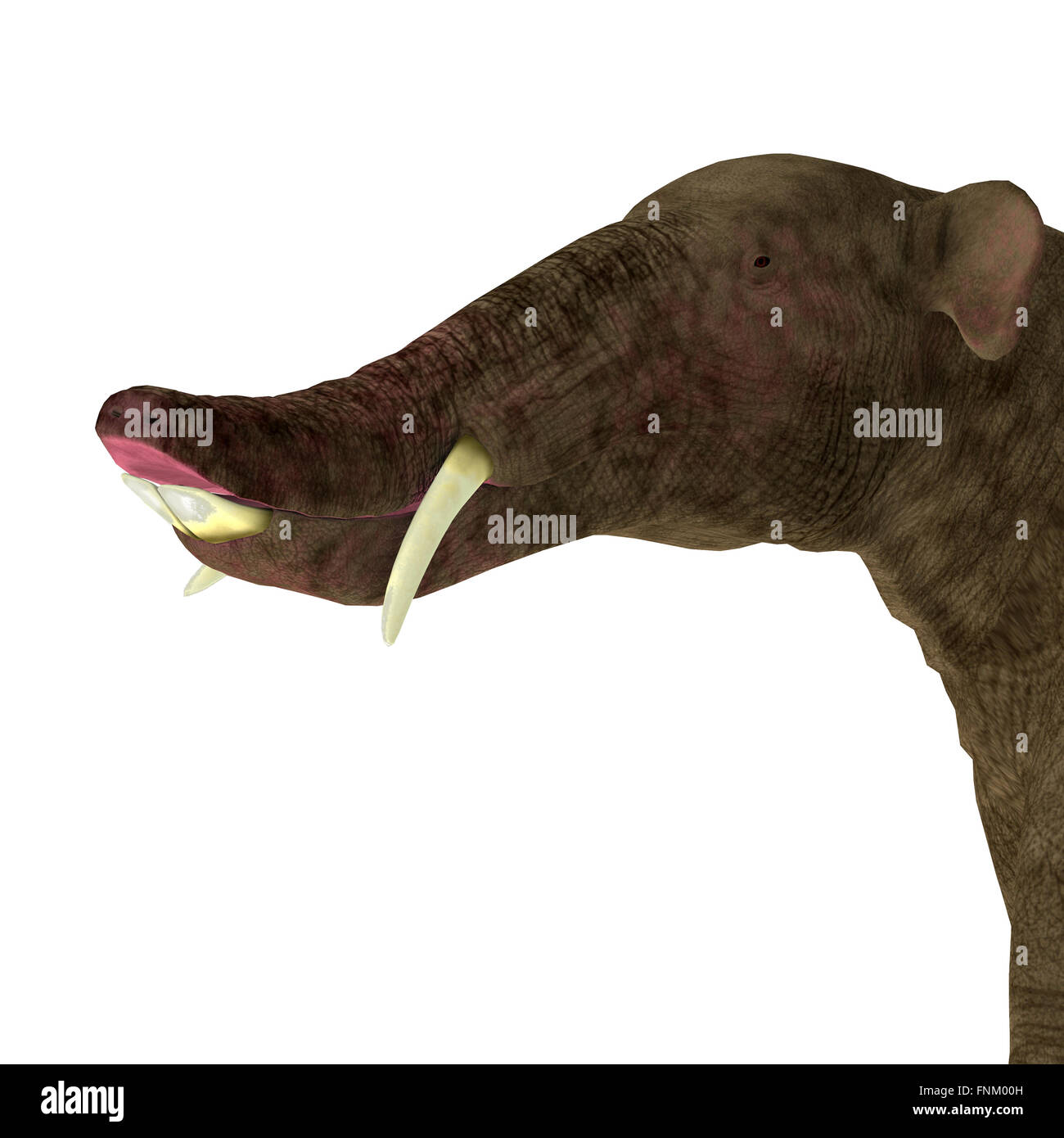 Platybelodon is an extinct herbivorous mammal related to the elephant that lived during the Miocene Period. Stock Photohttps://www.alamy.com/image-license-details/?v=1https://www.alamy.com/stock-photo-platybelodon-is-an-extinct-herbivorous-mammal-related-to-the-elephant-99398673.html
Platybelodon is an extinct herbivorous mammal related to the elephant that lived during the Miocene Period. Stock Photohttps://www.alamy.com/image-license-details/?v=1https://www.alamy.com/stock-photo-platybelodon-is-an-extinct-herbivorous-mammal-related-to-the-elephant-99398673.htmlRFFNM00H–Platybelodon is an extinct herbivorous mammal related to the elephant that lived during the Miocene Period.
 Samut Prakan Province, Thailand. 2nd Jan, 2022. Thailand men's national football team (War Elephants) players With related parties arriving at Suvarnabhumi Airport, Samut Prakan Province, Thailand, on 02 January 2022 after winning the ASEAN Football Federation Championship 2020 (AFF Suzuki Cup 2020) successfully. (Credit Image: © Teera Noisakran/Pacific Press via ZUMA Press Wire) Stock Photohttps://www.alamy.com/image-license-details/?v=1https://www.alamy.com/samut-prakan-province-thailand-2nd-jan-2022-thailand-mens-national-football-team-war-elephants-players-with-related-parties-arriving-at-suvarnabhumi-airport-samut-prakan-province-thailand-on-02-january-2022-after-winning-the-asean-football-federation-championship-2020-aff-suzuki-cup-2020-successfully-credit-image-teera-noisakranpacific-press-via-zuma-press-wire-image455516085.html
Samut Prakan Province, Thailand. 2nd Jan, 2022. Thailand men's national football team (War Elephants) players With related parties arriving at Suvarnabhumi Airport, Samut Prakan Province, Thailand, on 02 January 2022 after winning the ASEAN Football Federation Championship 2020 (AFF Suzuki Cup 2020) successfully. (Credit Image: © Teera Noisakran/Pacific Press via ZUMA Press Wire) Stock Photohttps://www.alamy.com/image-license-details/?v=1https://www.alamy.com/samut-prakan-province-thailand-2nd-jan-2022-thailand-mens-national-football-team-war-elephants-players-with-related-parties-arriving-at-suvarnabhumi-airport-samut-prakan-province-thailand-on-02-january-2022-after-winning-the-asean-football-federation-championship-2020-aff-suzuki-cup-2020-successfully-credit-image-teera-noisakranpacific-press-via-zuma-press-wire-image455516085.htmlRM2HD2FBH–Samut Prakan Province, Thailand. 2nd Jan, 2022. Thailand men's national football team (War Elephants) players With related parties arriving at Suvarnabhumi Airport, Samut Prakan Province, Thailand, on 02 January 2022 after winning the ASEAN Football Federation Championship 2020 (AFF Suzuki Cup 2020) successfully. (Credit Image: © Teera Noisakran/Pacific Press via ZUMA Press Wire)
 Two adorable female Asian Elephants: a charming interaction between family members of these beautiful, intelligent creatures at Chester Zoo in the UK Stock Photohttps://www.alamy.com/image-license-details/?v=1https://www.alamy.com/two-adorable-female-asian-elephants-a-charming-interaction-between-family-members-of-these-beautiful-intelligent-creatures-at-chester-zoo-in-the-uk-image364421584.html
Two adorable female Asian Elephants: a charming interaction between family members of these beautiful, intelligent creatures at Chester Zoo in the UK Stock Photohttps://www.alamy.com/image-license-details/?v=1https://www.alamy.com/two-adorable-female-asian-elephants-a-charming-interaction-between-family-members-of-these-beautiful-intelligent-creatures-at-chester-zoo-in-the-uk-image364421584.htmlRF2C4TRCG–Two adorable female Asian Elephants: a charming interaction between family members of these beautiful, intelligent creatures at Chester Zoo in the UK
 Platybelodon was a herbivorous extinct mammal related to the elephant that lived in Miocene Era. Stock Photohttps://www.alamy.com/image-license-details/?v=1https://www.alamy.com/stock-photo-platybelodon-was-a-herbivorous-extinct-mammal-related-to-the-elephant-99398678.html
Platybelodon was a herbivorous extinct mammal related to the elephant that lived in Miocene Era. Stock Photohttps://www.alamy.com/image-license-details/?v=1https://www.alamy.com/stock-photo-platybelodon-was-a-herbivorous-extinct-mammal-related-to-the-elephant-99398678.htmlRFFNM00P–Platybelodon was a herbivorous extinct mammal related to the elephant that lived in Miocene Era.
 Samut Prakan Province, Thailand. 02nd Jan, 2022. Thailand men's national football team (War Elephants) players With related parties arriving at Suvarnabhumi Airport, Samut Prakan Province, Thailand, on 02 January 2022 after winning the ASEAN Football Federation Championship 2020 (AFF Suzuki Cup 2020) successfully. (Photo by Teera Noisakran/Pacific Press/Sipa USA) Credit: Sipa USA/Alamy Live News Stock Photohttps://www.alamy.com/image-license-details/?v=1https://www.alamy.com/samut-prakan-province-thailand-02nd-jan-2022-thailand-mens-national-football-team-war-elephants-players-with-related-parties-arriving-at-suvarnabhumi-airport-samut-prakan-province-thailand-on-02-january-2022-after-winning-the-asean-football-federation-championship-2020-aff-suzuki-cup-2020-successfully-photo-by-teera-noisakranpacific-presssipa-usa-credit-sipa-usaalamy-live-news-image455563397.html
Samut Prakan Province, Thailand. 02nd Jan, 2022. Thailand men's national football team (War Elephants) players With related parties arriving at Suvarnabhumi Airport, Samut Prakan Province, Thailand, on 02 January 2022 after winning the ASEAN Football Federation Championship 2020 (AFF Suzuki Cup 2020) successfully. (Photo by Teera Noisakran/Pacific Press/Sipa USA) Credit: Sipa USA/Alamy Live News Stock Photohttps://www.alamy.com/image-license-details/?v=1https://www.alamy.com/samut-prakan-province-thailand-02nd-jan-2022-thailand-mens-national-football-team-war-elephants-players-with-related-parties-arriving-at-suvarnabhumi-airport-samut-prakan-province-thailand-on-02-january-2022-after-winning-the-asean-football-federation-championship-2020-aff-suzuki-cup-2020-successfully-photo-by-teera-noisakranpacific-presssipa-usa-credit-sipa-usaalamy-live-news-image455563397.htmlRM2HD4KN9–Samut Prakan Province, Thailand. 02nd Jan, 2022. Thailand men's national football team (War Elephants) players With related parties arriving at Suvarnabhumi Airport, Samut Prakan Province, Thailand, on 02 January 2022 after winning the ASEAN Football Federation Championship 2020 (AFF Suzuki Cup 2020) successfully. (Photo by Teera Noisakran/Pacific Press/Sipa USA) Credit: Sipa USA/Alamy Live News
 Mahouts (elephant keepers) lead the elephants at the watering hole in the Elephant Conservation Center, Sayaboury, Laos, in December 2018. Laos was known as ‘The land of a million elephants’ in the past, today the elephant population in the country stands at around 800 individuals. Half of them is made up of captive elephants, and their number is in decline; the owners are not interested in breeding animals (the cow needs at least four years out of work during her pregnancy and lactation), illegal trafficking to China and other neighboring countries continues. Against this backdrop, the Elepha Stock Photohttps://www.alamy.com/image-license-details/?v=1https://www.alamy.com/mahouts-elephant-keepers-lead-the-elephants-at-the-watering-hole-in-the-elephant-conservation-center-sayaboury-laos-in-december-2018-laos-was-known-as-the-land-of-a-million-elephants-in-the-past-today-the-elephant-population-in-the-country-stands-at-around-800-individuals-half-of-them-is-made-up-of-captive-elephants-and-their-number-is-in-decline-the-owners-are-not-interested-in-breeding-animals-the-cow-needs-at-least-four-years-out-of-work-during-her-pregnancy-and-lactation-illegal-trafficking-to-china-and-other-neighboring-countries-continues-against-this-backdrop-the-elepha-image488745574.html
Mahouts (elephant keepers) lead the elephants at the watering hole in the Elephant Conservation Center, Sayaboury, Laos, in December 2018. Laos was known as ‘The land of a million elephants’ in the past, today the elephant population in the country stands at around 800 individuals. Half of them is made up of captive elephants, and their number is in decline; the owners are not interested in breeding animals (the cow needs at least four years out of work during her pregnancy and lactation), illegal trafficking to China and other neighboring countries continues. Against this backdrop, the Elepha Stock Photohttps://www.alamy.com/image-license-details/?v=1https://www.alamy.com/mahouts-elephant-keepers-lead-the-elephants-at-the-watering-hole-in-the-elephant-conservation-center-sayaboury-laos-in-december-2018-laos-was-known-as-the-land-of-a-million-elephants-in-the-past-today-the-elephant-population-in-the-country-stands-at-around-800-individuals-half-of-them-is-made-up-of-captive-elephants-and-their-number-is-in-decline-the-owners-are-not-interested-in-breeding-animals-the-cow-needs-at-least-four-years-out-of-work-during-her-pregnancy-and-lactation-illegal-trafficking-to-china-and-other-neighboring-countries-continues-against-this-backdrop-the-elepha-image488745574.htmlRM2KB47Y2–Mahouts (elephant keepers) lead the elephants at the watering hole in the Elephant Conservation Center, Sayaboury, Laos, in December 2018. Laos was known as ‘The land of a million elephants’ in the past, today the elephant population in the country stands at around 800 individuals. Half of them is made up of captive elephants, and their number is in decline; the owners are not interested in breeding animals (the cow needs at least four years out of work during her pregnancy and lactation), illegal trafficking to China and other neighboring countries continues. Against this backdrop, the Elepha
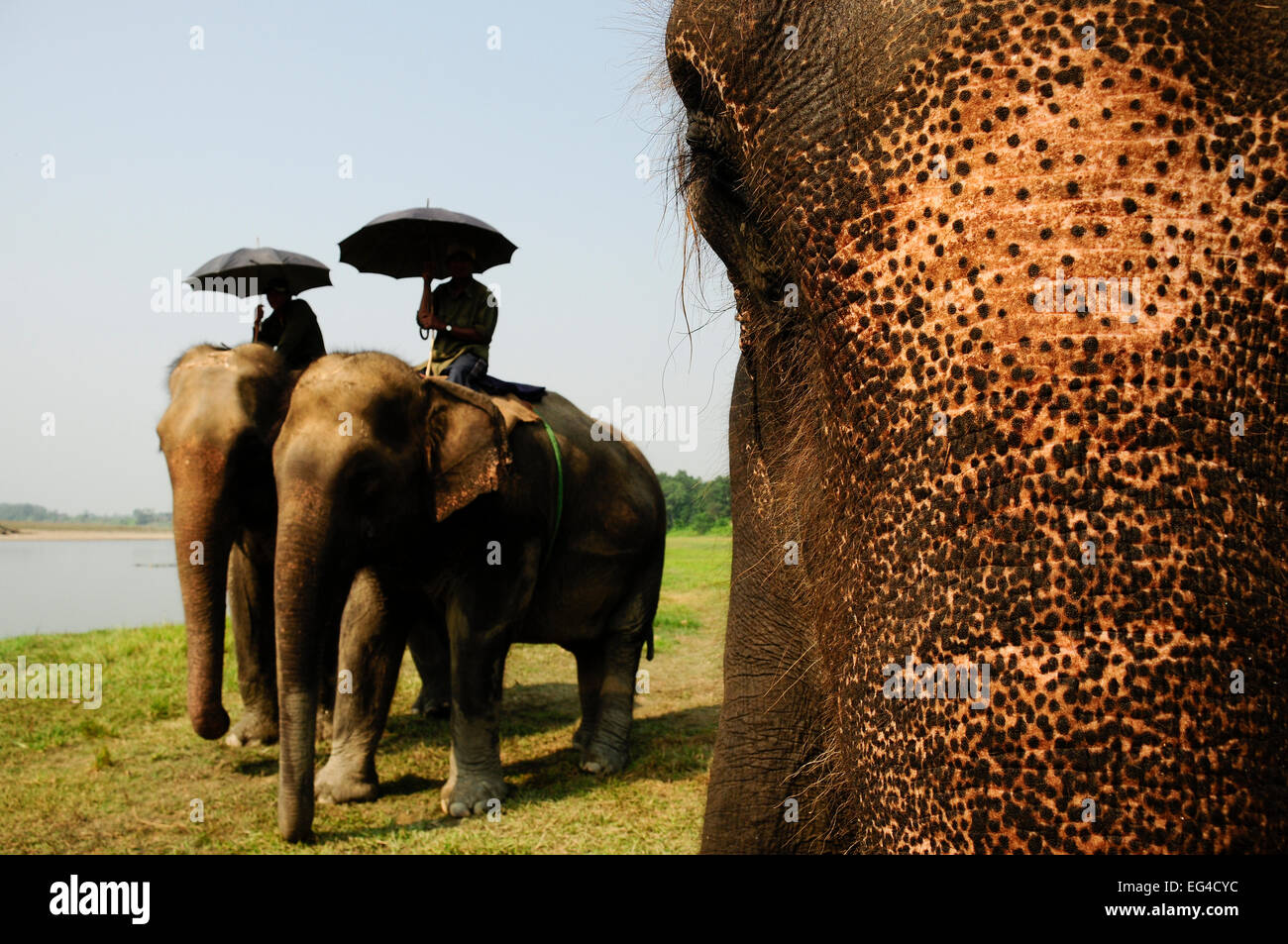 Domestic Asian elephants (Elephas maximas) used riding safaris their keepers Royal Chitwan National Park Nepal. Stock Photohttps://www.alamy.com/image-license-details/?v=1https://www.alamy.com/stock-photo-domestic-asian-elephants-elephas-maximas-used-riding-safaris-their-78773952.html
Domestic Asian elephants (Elephas maximas) used riding safaris their keepers Royal Chitwan National Park Nepal. Stock Photohttps://www.alamy.com/image-license-details/?v=1https://www.alamy.com/stock-photo-domestic-asian-elephants-elephas-maximas-used-riding-safaris-their-78773952.htmlRMEG4CYC–Domestic Asian elephants (Elephas maximas) used riding safaris their keepers Royal Chitwan National Park Nepal.
 One of (26) images related to Elephant Parade in 2010. The images reveal close-ups also of the artwork upon the elephants in some detail. Enjoy. Stock Photohttps://www.alamy.com/image-license-details/?v=1https://www.alamy.com/stock-photo-one-of-26-images-related-to-elephant-parade-in-2010-the-images-reveal-29986780.html
One of (26) images related to Elephant Parade in 2010. The images reveal close-ups also of the artwork upon the elephants in some detail. Enjoy. Stock Photohttps://www.alamy.com/image-license-details/?v=1https://www.alamy.com/stock-photo-one-of-26-images-related-to-elephant-parade-in-2010-the-images-reveal-29986780.htmlRMBMP0CC–One of (26) images related to Elephant Parade in 2010. The images reveal close-ups also of the artwork upon the elephants in some detail. Enjoy.
 An elephant keeper cleaning a domestic Indian elephant (Elephas maximus) Nepal, October 2011. Stock Photohttps://www.alamy.com/image-license-details/?v=1https://www.alamy.com/an-elephant-keeper-cleaning-a-domestic-indian-elephant-elephas-maximus-nepal-october-2011-image262997878.html
An elephant keeper cleaning a domestic Indian elephant (Elephas maximus) Nepal, October 2011. Stock Photohttps://www.alamy.com/image-license-details/?v=1https://www.alamy.com/an-elephant-keeper-cleaning-a-domestic-indian-elephant-elephas-maximus-nepal-october-2011-image262997878.htmlRMW7TGDA–An elephant keeper cleaning a domestic Indian elephant (Elephas maximus) Nepal, October 2011.
 Thailand men's national football team (War Elephants) players With related parties arriving at Suvarnabhumi Airport, Samut Prakan Province, Thailand, on 02 January 2022 after winning the ASEAN Football Federation Championship 2020 (AFF Suzuki Cup 2020) successfully. (Photo by Teera Noisakran/Pacific Press) Stock Photohttps://www.alamy.com/image-license-details/?v=1https://www.alamy.com/thailand-mens-national-football-team-war-elephants-players-with-related-parties-arriving-at-suvarnabhumi-airport-samut-prakan-province-thailand-on-02-january-2022-after-winning-the-asean-football-federation-championship-2020-aff-suzuki-cup-2020-successfully-photo-by-teera-noisakranpacific-press-image455515178.html
Thailand men's national football team (War Elephants) players With related parties arriving at Suvarnabhumi Airport, Samut Prakan Province, Thailand, on 02 January 2022 after winning the ASEAN Football Federation Championship 2020 (AFF Suzuki Cup 2020) successfully. (Photo by Teera Noisakran/Pacific Press) Stock Photohttps://www.alamy.com/image-license-details/?v=1https://www.alamy.com/thailand-mens-national-football-team-war-elephants-players-with-related-parties-arriving-at-suvarnabhumi-airport-samut-prakan-province-thailand-on-02-january-2022-after-winning-the-asean-football-federation-championship-2020-aff-suzuki-cup-2020-successfully-photo-by-teera-noisakranpacific-press-image455515178.htmlRM2HD2E76–Thailand men's national football team (War Elephants) players With related parties arriving at Suvarnabhumi Airport, Samut Prakan Province, Thailand, on 02 January 2022 after winning the ASEAN Football Federation Championship 2020 (AFF Suzuki Cup 2020) successfully. (Photo by Teera Noisakran/Pacific Press)
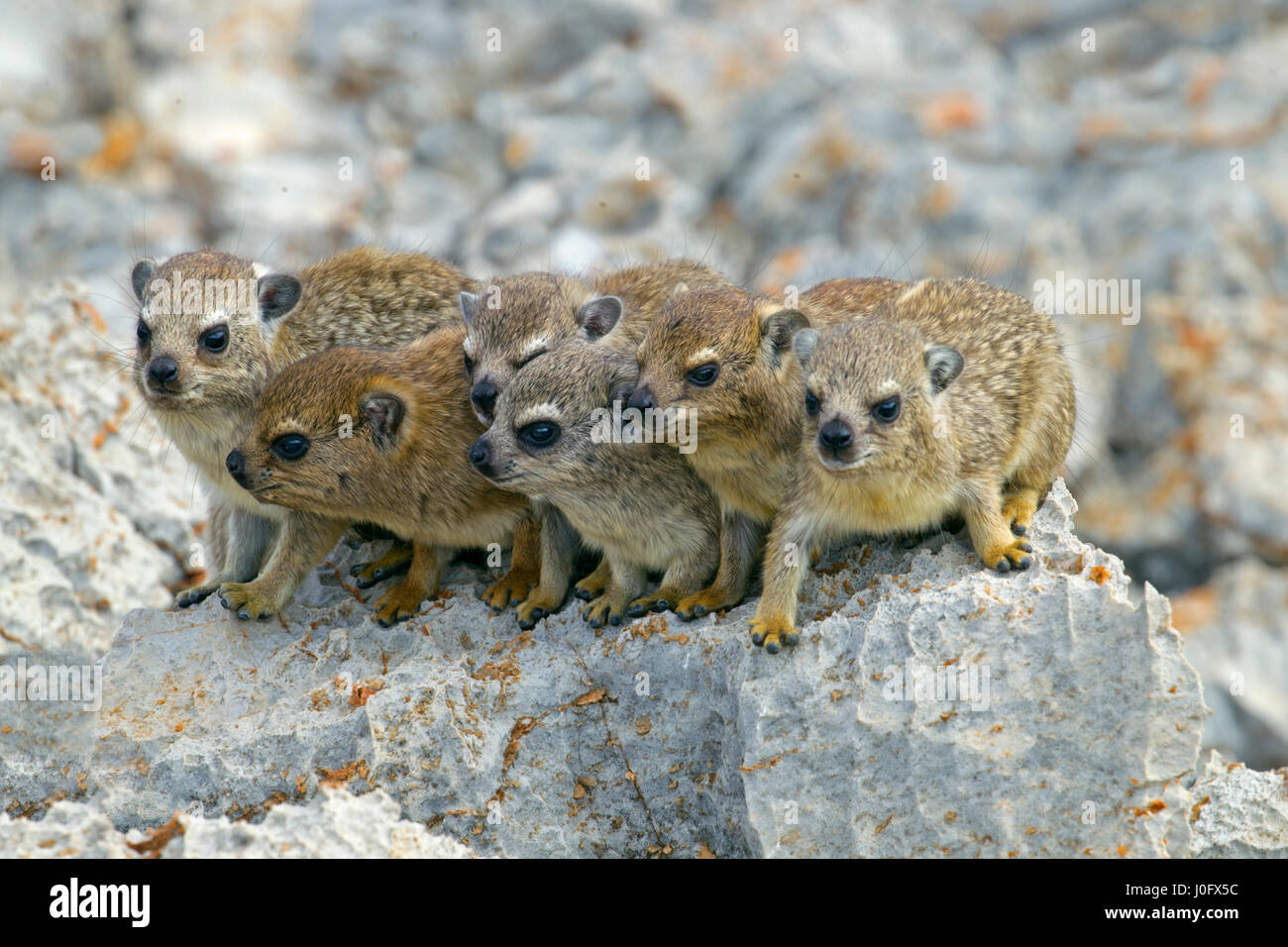 A group of young Rock hyrax Procavia capensis Namibia March Stock Photohttps://www.alamy.com/image-license-details/?v=1https://www.alamy.com/stock-photo-a-group-of-young-rock-hyrax-procavia-capensis-namibia-march-138032760.html
A group of young Rock hyrax Procavia capensis Namibia March Stock Photohttps://www.alamy.com/image-license-details/?v=1https://www.alamy.com/stock-photo-a-group-of-young-rock-hyrax-procavia-capensis-namibia-march-138032760.htmlRMJ0FX5C–A group of young Rock hyrax Procavia capensis Namibia March
 The skeleton of an elephant near the hospital in the Elephant Conservation Center, Sayaboury, Laos. The Elephant Conservation Center is the only organization in Laos who is interested in maintaining the population and breeding of elephants. They have the only elephant hospital and research laboratory in Laos. The Center was created in 2011, and now the team is protecting 29 elephants that had been working in the logging industry or mass tourism, and 530 hectares of forest around Nam Tien Lake in Sayaboury. Stock Photohttps://www.alamy.com/image-license-details/?v=1https://www.alamy.com/the-skeleton-of-an-elephant-near-the-hospital-in-the-elephant-conservation-center-sayaboury-laos-the-elephant-conservation-center-is-the-only-organization-in-laos-who-is-interested-in-maintaining-the-population-and-breeding-of-elephants-they-have-the-only-elephant-hospital-and-research-laboratory-in-laos-the-center-was-created-in-2011-and-now-the-team-is-protecting-29-elephants-that-had-been-working-in-the-logging-industry-or-mass-tourism-and-530-hectares-of-forest-around-nam-tien-lake-in-sayaboury-image354695161.html
The skeleton of an elephant near the hospital in the Elephant Conservation Center, Sayaboury, Laos. The Elephant Conservation Center is the only organization in Laos who is interested in maintaining the population and breeding of elephants. They have the only elephant hospital and research laboratory in Laos. The Center was created in 2011, and now the team is protecting 29 elephants that had been working in the logging industry or mass tourism, and 530 hectares of forest around Nam Tien Lake in Sayaboury. Stock Photohttps://www.alamy.com/image-license-details/?v=1https://www.alamy.com/the-skeleton-of-an-elephant-near-the-hospital-in-the-elephant-conservation-center-sayaboury-laos-the-elephant-conservation-center-is-the-only-organization-in-laos-who-is-interested-in-maintaining-the-population-and-breeding-of-elephants-they-have-the-only-elephant-hospital-and-research-laboratory-in-laos-the-center-was-created-in-2011-and-now-the-team-is-protecting-29-elephants-that-had-been-working-in-the-logging-industry-or-mass-tourism-and-530-hectares-of-forest-around-nam-tien-lake-in-sayaboury-image354695161.htmlRM2BH1N89–The skeleton of an elephant near the hospital in the Elephant Conservation Center, Sayaboury, Laos. The Elephant Conservation Center is the only organization in Laos who is interested in maintaining the population and breeding of elephants. They have the only elephant hospital and research laboratory in Laos. The Center was created in 2011, and now the team is protecting 29 elephants that had been working in the logging industry or mass tourism, and 530 hectares of forest around Nam Tien Lake in Sayaboury.
 Wild elephant bull (Loxodonta africana), hoisted into position by crane for vasectomy operation in bush by the Elephant Population Management Program team with Dr Jeff Zuba, senior associate veterinarian with the San Diego Zoological Society holding the elephant's trunk and Douw Groebler, game capture expert. Private game reserve in Limpopo, South Africa. April 2011 Stock Photohttps://www.alamy.com/image-license-details/?v=1https://www.alamy.com/wild-elephant-bull-loxodonta-africana-hoisted-into-position-by-crane-for-vasectomy-operation-in-bush-by-the-elephant-population-management-program-team-with-dr-jeff-zuba-senior-associate-veterinarian-with-the-san-diego-zoological-society-holding-the-elephants-trunk-and-douw-groebler-game-capture-expert-private-game-reserve-in-limpopo-south-africa-april-2011-image262982636.html
Wild elephant bull (Loxodonta africana), hoisted into position by crane for vasectomy operation in bush by the Elephant Population Management Program team with Dr Jeff Zuba, senior associate veterinarian with the San Diego Zoological Society holding the elephant's trunk and Douw Groebler, game capture expert. Private game reserve in Limpopo, South Africa. April 2011 Stock Photohttps://www.alamy.com/image-license-details/?v=1https://www.alamy.com/wild-elephant-bull-loxodonta-africana-hoisted-into-position-by-crane-for-vasectomy-operation-in-bush-by-the-elephant-population-management-program-team-with-dr-jeff-zuba-senior-associate-veterinarian-with-the-san-diego-zoological-society-holding-the-elephants-trunk-and-douw-groebler-game-capture-expert-private-game-reserve-in-limpopo-south-africa-april-2011-image262982636.htmlRMW7RW10–Wild elephant bull (Loxodonta africana), hoisted into position by crane for vasectomy operation in bush by the Elephant Population Management Program team with Dr Jeff Zuba, senior associate veterinarian with the San Diego Zoological Society holding the elephant's trunk and Douw Groebler, game capture expert. Private game reserve in Limpopo, South Africa. April 2011
 Mastodon maximus, Print, Mastodons are any species of extinct proboscideans in the genus Mammut (family Mammutidae), distantly related to elephants, that inhabited North and Central America during the late Miocene or late Pliocene up to their extinction at the end of the Pleistocene 10, 000 to 11, 000 years ago. Mastodons lived in herds and were predominantly forest-dwelling animals that fed on a mixed diet obtained by browsing and grazing with a seasonal preference for browsing, similar to living elephants., 1700-1880, Reimagined by Gibon, design of warm cheerful glowing of brightness and lig Stock Photohttps://www.alamy.com/image-license-details/?v=1https://www.alamy.com/mastodon-maximus-print-mastodons-are-any-species-of-extinct-proboscideans-in-the-genus-mammut-family-mammutidae-distantly-related-to-elephants-that-inhabited-north-and-central-america-during-the-late-miocene-or-late-pliocene-up-to-their-extinction-at-the-end-of-the-pleistocene-10-000-to-11-000-years-ago-mastodons-lived-in-herds-and-were-predominantly-forest-dwelling-animals-that-fed-on-a-mixed-diet-obtained-by-browsing-and-grazing-with-a-seasonal-preference-for-browsing-similar-to-living-elephants-1700-1880-reimagined-by-gibon-design-of-warm-cheerful-glowing-of-brightness-and-lig-image349766376.html
Mastodon maximus, Print, Mastodons are any species of extinct proboscideans in the genus Mammut (family Mammutidae), distantly related to elephants, that inhabited North and Central America during the late Miocene or late Pliocene up to their extinction at the end of the Pleistocene 10, 000 to 11, 000 years ago. Mastodons lived in herds and were predominantly forest-dwelling animals that fed on a mixed diet obtained by browsing and grazing with a seasonal preference for browsing, similar to living elephants., 1700-1880, Reimagined by Gibon, design of warm cheerful glowing of brightness and lig Stock Photohttps://www.alamy.com/image-license-details/?v=1https://www.alamy.com/mastodon-maximus-print-mastodons-are-any-species-of-extinct-proboscideans-in-the-genus-mammut-family-mammutidae-distantly-related-to-elephants-that-inhabited-north-and-central-america-during-the-late-miocene-or-late-pliocene-up-to-their-extinction-at-the-end-of-the-pleistocene-10-000-to-11-000-years-ago-mastodons-lived-in-herds-and-were-predominantly-forest-dwelling-animals-that-fed-on-a-mixed-diet-obtained-by-browsing-and-grazing-with-a-seasonal-preference-for-browsing-similar-to-living-elephants-1700-1880-reimagined-by-gibon-design-of-warm-cheerful-glowing-of-brightness-and-lig-image349766376.htmlRF2B916G8–Mastodon maximus, Print, Mastodons are any species of extinct proboscideans in the genus Mammut (family Mammutidae), distantly related to elephants, that inhabited North and Central America during the late Miocene or late Pliocene up to their extinction at the end of the Pleistocene 10, 000 to 11, 000 years ago. Mastodons lived in herds and were predominantly forest-dwelling animals that fed on a mixed diet obtained by browsing and grazing with a seasonal preference for browsing, similar to living elephants., 1700-1880, Reimagined by Gibon, design of warm cheerful glowing of brightness and lig
 The skeleton of an elephant near the hospital in the Elephant Conservation Center, Sayaboury, Laos. The Elephant Conservation Center is the only organization in Laos who is interested in maintaining the population and breeding of elephants. They have the only elephant hospital and research laboratory in Laos. The Center was created in 2011, and now the team is protecting 29 elephants that had been working in the logging industry or mass tourism, and 530 hectares of forest around Nam Tien Lake in Sayaboury. Stock Photohttps://www.alamy.com/image-license-details/?v=1https://www.alamy.com/the-skeleton-of-an-elephant-near-the-hospital-in-the-elephant-conservation-center-sayaboury-laos-the-elephant-conservation-center-is-the-only-organization-in-laos-who-is-interested-in-maintaining-the-population-and-breeding-of-elephants-they-have-the-only-elephant-hospital-and-research-laboratory-in-laos-the-center-was-created-in-2011-and-now-the-team-is-protecting-29-elephants-that-had-been-working-in-the-logging-industry-or-mass-tourism-and-530-hectares-of-forest-around-nam-tien-lake-in-sayaboury-image354695099.html
The skeleton of an elephant near the hospital in the Elephant Conservation Center, Sayaboury, Laos. The Elephant Conservation Center is the only organization in Laos who is interested in maintaining the population and breeding of elephants. They have the only elephant hospital and research laboratory in Laos. The Center was created in 2011, and now the team is protecting 29 elephants that had been working in the logging industry or mass tourism, and 530 hectares of forest around Nam Tien Lake in Sayaboury. Stock Photohttps://www.alamy.com/image-license-details/?v=1https://www.alamy.com/the-skeleton-of-an-elephant-near-the-hospital-in-the-elephant-conservation-center-sayaboury-laos-the-elephant-conservation-center-is-the-only-organization-in-laos-who-is-interested-in-maintaining-the-population-and-breeding-of-elephants-they-have-the-only-elephant-hospital-and-research-laboratory-in-laos-the-center-was-created-in-2011-and-now-the-team-is-protecting-29-elephants-that-had-been-working-in-the-logging-industry-or-mass-tourism-and-530-hectares-of-forest-around-nam-tien-lake-in-sayaboury-image354695099.htmlRM2BH1N63–The skeleton of an elephant near the hospital in the Elephant Conservation Center, Sayaboury, Laos. The Elephant Conservation Center is the only organization in Laos who is interested in maintaining the population and breeding of elephants. They have the only elephant hospital and research laboratory in Laos. The Center was created in 2011, and now the team is protecting 29 elephants that had been working in the logging industry or mass tourism, and 530 hectares of forest around Nam Tien Lake in Sayaboury.
 Bildnummer: 58139111 Datum: 22.06.2012 Copyright: imago/Xinhua (120622) -- NAIROBI, June 22, 2012 (Xinhua) -- Soldiers display the ammunition seized from poachers in Nairobi, Kenya, June 22, 2012. Since the beginning of the year, Kenya Wildlife Service have arrested and taken to court 1179 suspects and charged them with various wildlife-related offences. From January to May this year, a total of 133 elephants and 11 rhinos have been killed by poaching.(Xinhua/Ding Haitao) KENYA-NAIROBI-WILDLIFE PUBLICATIONxNOTxINxCHN Gesellschaft Kriminalität Beschlagnahme Waffen Elfenbein Wilderei x0x xst 2 Stock Photohttps://www.alamy.com/image-license-details/?v=1https://www.alamy.com/bildnummer-58139111-datum-22062012-copyright-imagoxinhua-120622-nairobi-june-22-2012-xinhua-soldiers-display-the-ammunition-seized-from-poachers-in-nairobi-kenya-june-22-2012-since-the-beginning-of-the-year-kenya-wildlife-service-have-arrested-and-taken-to-court-1179-suspects-and-charged-them-with-various-wildlife-related-offences-from-january-to-may-this-year-a-total-of-133-elephants-and-11-rhinos-have-been-killed-by-poachingxinhuading-haitao-kenya-nairobi-wildlife-publicationxnotxinxchn-gesellschaft-kriminalitt-beschlagnahme-waffen-elfenbein-wilderei-x0x-xst-2-image562920801.html
Bildnummer: 58139111 Datum: 22.06.2012 Copyright: imago/Xinhua (120622) -- NAIROBI, June 22, 2012 (Xinhua) -- Soldiers display the ammunition seized from poachers in Nairobi, Kenya, June 22, 2012. Since the beginning of the year, Kenya Wildlife Service have arrested and taken to court 1179 suspects and charged them with various wildlife-related offences. From January to May this year, a total of 133 elephants and 11 rhinos have been killed by poaching.(Xinhua/Ding Haitao) KENYA-NAIROBI-WILDLIFE PUBLICATIONxNOTxINxCHN Gesellschaft Kriminalität Beschlagnahme Waffen Elfenbein Wilderei x0x xst 2 Stock Photohttps://www.alamy.com/image-license-details/?v=1https://www.alamy.com/bildnummer-58139111-datum-22062012-copyright-imagoxinhua-120622-nairobi-june-22-2012-xinhua-soldiers-display-the-ammunition-seized-from-poachers-in-nairobi-kenya-june-22-2012-since-the-beginning-of-the-year-kenya-wildlife-service-have-arrested-and-taken-to-court-1179-suspects-and-charged-them-with-various-wildlife-related-offences-from-january-to-may-this-year-a-total-of-133-elephants-and-11-rhinos-have-been-killed-by-poachingxinhuading-haitao-kenya-nairobi-wildlife-publicationxnotxinxchn-gesellschaft-kriminalitt-beschlagnahme-waffen-elfenbein-wilderei-x0x-xst-2-image562920801.htmlRM2RKR769–Bildnummer: 58139111 Datum: 22.06.2012 Copyright: imago/Xinhua (120622) -- NAIROBI, June 22, 2012 (Xinhua) -- Soldiers display the ammunition seized from poachers in Nairobi, Kenya, June 22, 2012. Since the beginning of the year, Kenya Wildlife Service have arrested and taken to court 1179 suspects and charged them with various wildlife-related offences. From January to May this year, a total of 133 elephants and 11 rhinos have been killed by poaching.(Xinhua/Ding Haitao) KENYA-NAIROBI-WILDLIFE PUBLICATIONxNOTxINxCHN Gesellschaft Kriminalität Beschlagnahme Waffen Elfenbein Wilderei x0x xst 2
 Mastodon maximus, Print, Mastodons are any species of extinct proboscideans in the genus Mammut (family Mammutidae), distantly related to elephants, that inhabited North and Central America during the late Miocene or late Pliocene up to their extinction at the end of the Pleistocene 10, 000 to 11, 000 years ago. Mastodons lived in herds and were predominantly forest-dwelling animals that fed on a mixed diet obtained by browsing and grazing with a seasonal preference for browsing, similar to living elephants., 1700-1880 Stock Photohttps://www.alamy.com/image-license-details/?v=1https://www.alamy.com/mastodon-maximus-print-mastodons-are-any-species-of-extinct-proboscideans-in-the-genus-mammut-family-mammutidae-distantly-related-to-elephants-that-inhabited-north-and-central-america-during-the-late-miocene-or-late-pliocene-up-to-their-extinction-at-the-end-of-the-pleistocene-10-000-to-11-000-years-ago-mastodons-lived-in-herds-and-were-predominantly-forest-dwelling-animals-that-fed-on-a-mixed-diet-obtained-by-browsing-and-grazing-with-a-seasonal-preference-for-browsing-similar-to-living-elephants-1700-1880-image328690990.html
Mastodon maximus, Print, Mastodons are any species of extinct proboscideans in the genus Mammut (family Mammutidae), distantly related to elephants, that inhabited North and Central America during the late Miocene or late Pliocene up to their extinction at the end of the Pleistocene 10, 000 to 11, 000 years ago. Mastodons lived in herds and were predominantly forest-dwelling animals that fed on a mixed diet obtained by browsing and grazing with a seasonal preference for browsing, similar to living elephants., 1700-1880 Stock Photohttps://www.alamy.com/image-license-details/?v=1https://www.alamy.com/mastodon-maximus-print-mastodons-are-any-species-of-extinct-proboscideans-in-the-genus-mammut-family-mammutidae-distantly-related-to-elephants-that-inhabited-north-and-central-america-during-the-late-miocene-or-late-pliocene-up-to-their-extinction-at-the-end-of-the-pleistocene-10-000-to-11-000-years-ago-mastodons-lived-in-herds-and-were-predominantly-forest-dwelling-animals-that-fed-on-a-mixed-diet-obtained-by-browsing-and-grazing-with-a-seasonal-preference-for-browsing-similar-to-living-elephants-1700-1880-image328690990.htmlRM2A2N4KX–Mastodon maximus, Print, Mastodons are any species of extinct proboscideans in the genus Mammut (family Mammutidae), distantly related to elephants, that inhabited North and Central America during the late Miocene or late Pliocene up to their extinction at the end of the Pleistocene 10, 000 to 11, 000 years ago. Mastodons lived in herds and were predominantly forest-dwelling animals that fed on a mixed diet obtained by browsing and grazing with a seasonal preference for browsing, similar to living elephants., 1700-1880
 The Royal Elephant National Museum in Dusit Park in Bangkok Thailand Once the stables for the royal elephants the building now houses a museum displaying paraphernalia related to the royal elephants Stock Photohttps://www.alamy.com/image-license-details/?v=1https://www.alamy.com/stock-photo-the-royal-elephant-national-museum-in-dusit-park-in-bangkok-thailand-10010589.html
The Royal Elephant National Museum in Dusit Park in Bangkok Thailand Once the stables for the royal elephants the building now houses a museum displaying paraphernalia related to the royal elephants Stock Photohttps://www.alamy.com/image-license-details/?v=1https://www.alamy.com/stock-photo-the-royal-elephant-national-museum-in-dusit-park-in-bangkok-thailand-10010589.htmlRMA0JM2P–The Royal Elephant National Museum in Dusit Park in Bangkok Thailand Once the stables for the royal elephants the building now houses a museum displaying paraphernalia related to the royal elephants
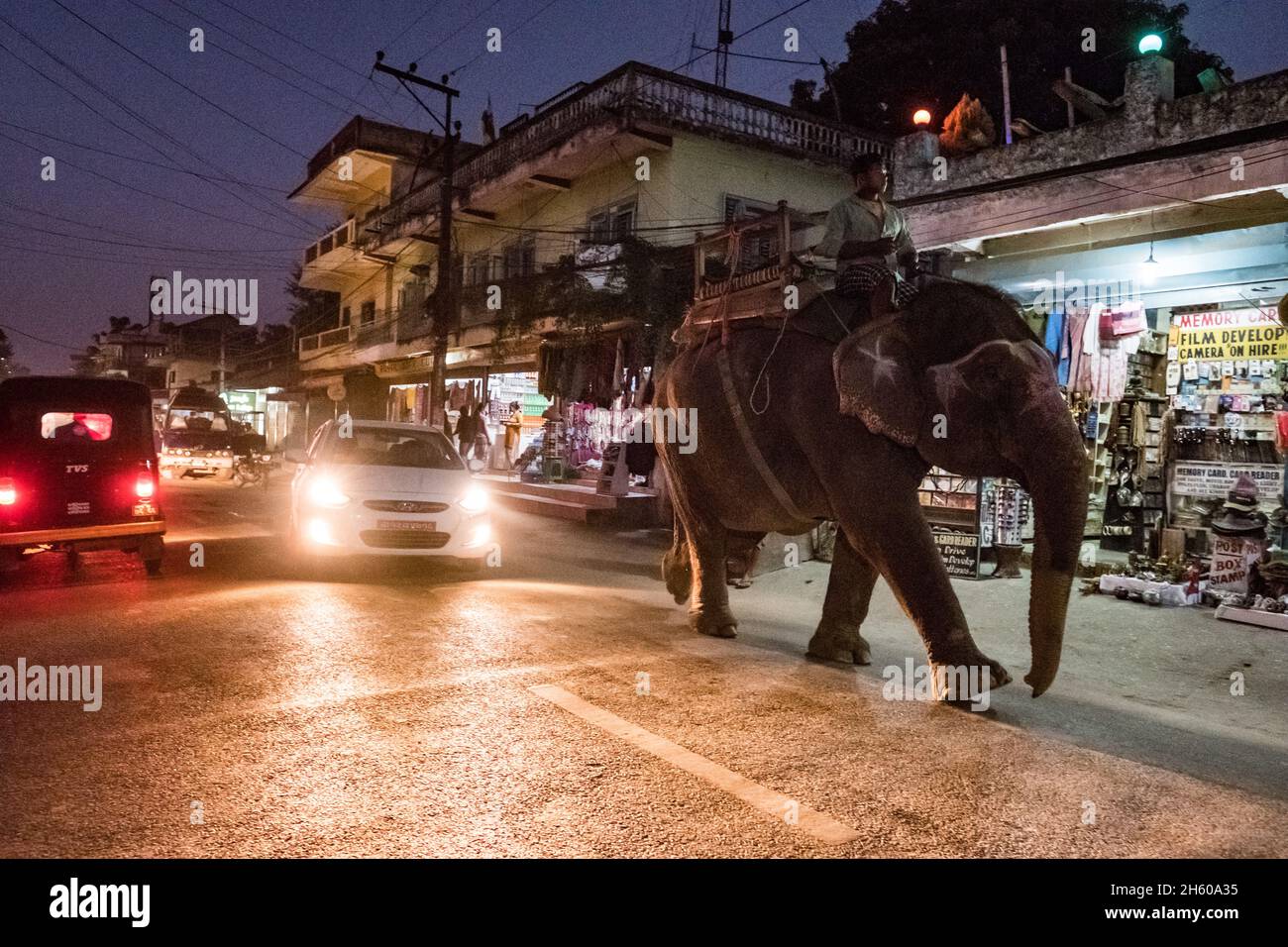 November 2017. Elephants walking down the main street in Sauraha is common place -- and happens several times a day, everyday. Sauraha's economy is dominated by tourism related to the nearby Chitwan National Park where elephants are used for giving rides to see rhinoceroses and tigers. Sauraha, Chitwan District, Nepal. Stock Photohttps://www.alamy.com/image-license-details/?v=1https://www.alamy.com/november-2017-elephants-walking-down-the-main-street-in-sauraha-is-common-place-and-happens-several-times-a-day-everyday-saurahas-economy-is-dominated-by-tourism-related-to-the-nearby-chitwan-national-park-where-elephants-are-used-for-giving-rides-to-see-rhinoceroses-and-tigers-sauraha-chitwan-district-nepal-image451165433.html
November 2017. Elephants walking down the main street in Sauraha is common place -- and happens several times a day, everyday. Sauraha's economy is dominated by tourism related to the nearby Chitwan National Park where elephants are used for giving rides to see rhinoceroses and tigers. Sauraha, Chitwan District, Nepal. Stock Photohttps://www.alamy.com/image-license-details/?v=1https://www.alamy.com/november-2017-elephants-walking-down-the-main-street-in-sauraha-is-common-place-and-happens-several-times-a-day-everyday-saurahas-economy-is-dominated-by-tourism-related-to-the-nearby-chitwan-national-park-where-elephants-are-used-for-giving-rides-to-see-rhinoceroses-and-tigers-sauraha-chitwan-district-nepal-image451165433.htmlRM2H60A35–November 2017. Elephants walking down the main street in Sauraha is common place -- and happens several times a day, everyday. Sauraha's economy is dominated by tourism related to the nearby Chitwan National Park where elephants are used for giving rides to see rhinoceroses and tigers. Sauraha, Chitwan District, Nepal.
 Platybelodon is an extinct herbivorous mammal related to the elephant that lived during the Miocene Period of Africa, Europe, Asia and North America. Stock Photohttps://www.alamy.com/image-license-details/?v=1https://www.alamy.com/platybelodon-is-an-extinct-herbivorous-mammal-related-to-the-elephant-that-lived-during-the-miocene-period-of-africa-europe-asia-and-north-america-image385998004.html
Platybelodon is an extinct herbivorous mammal related to the elephant that lived during the Miocene Period of Africa, Europe, Asia and North America. Stock Photohttps://www.alamy.com/image-license-details/?v=1https://www.alamy.com/platybelodon-is-an-extinct-herbivorous-mammal-related-to-the-elephant-that-lived-during-the-miocene-period-of-africa-europe-asia-and-north-america-image385998004.htmlRF2DBYMB0–Platybelodon is an extinct herbivorous mammal related to the elephant that lived during the Miocene Period of Africa, Europe, Asia and North America.